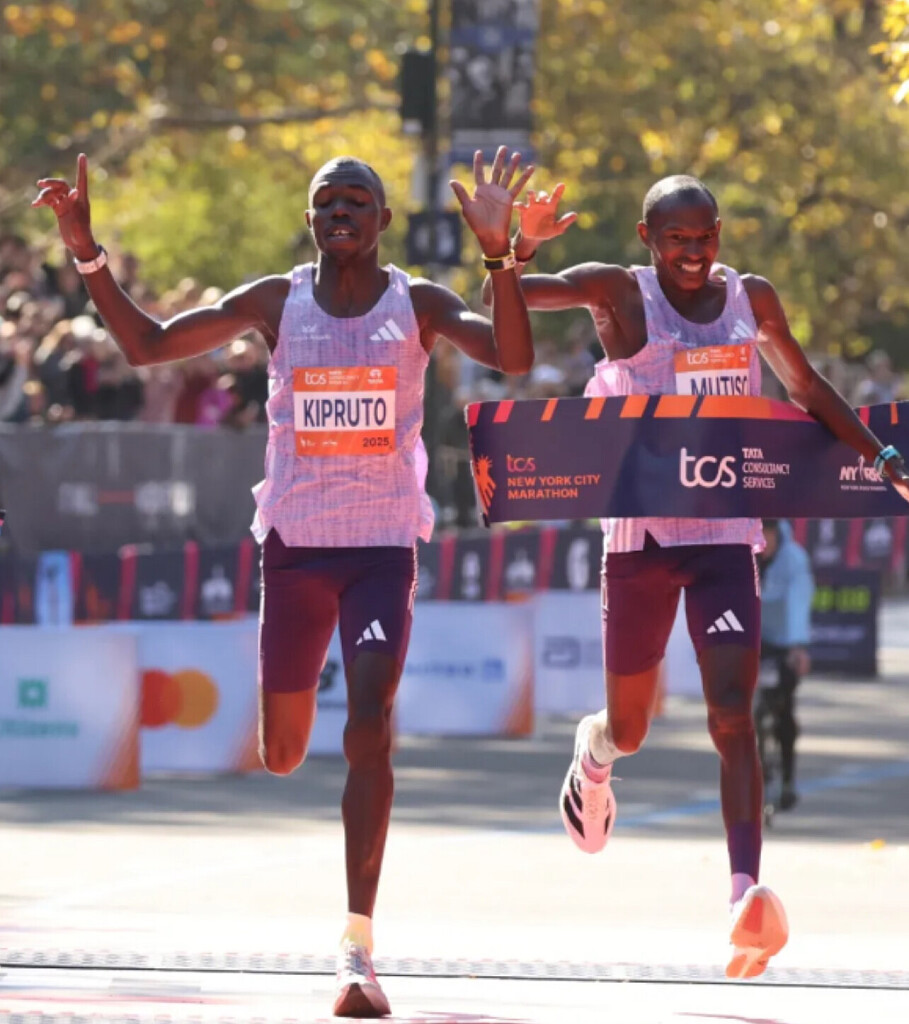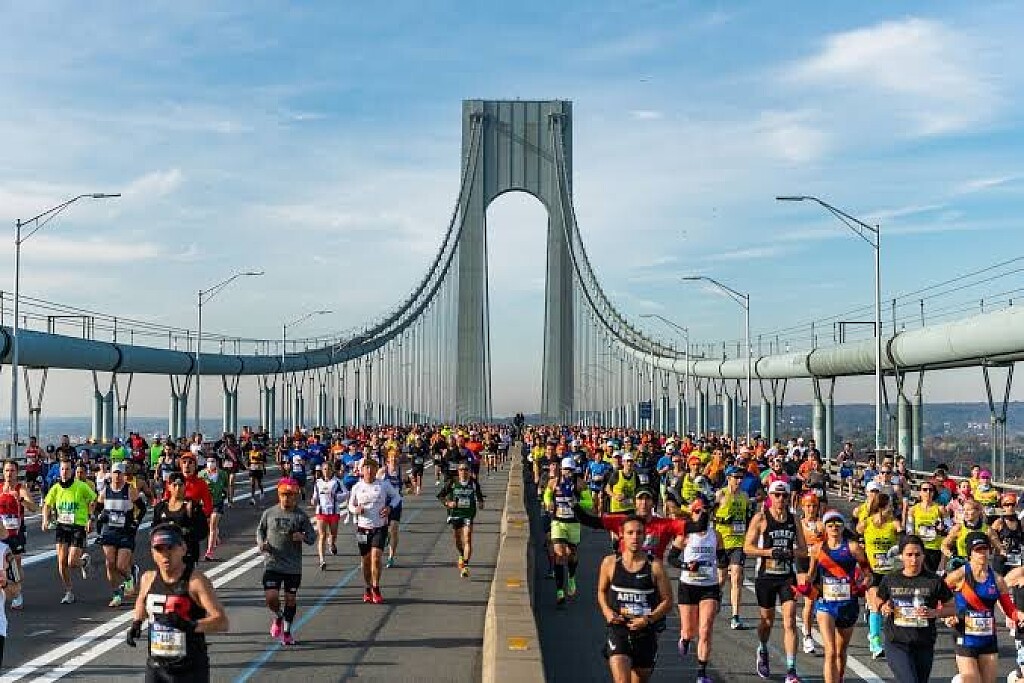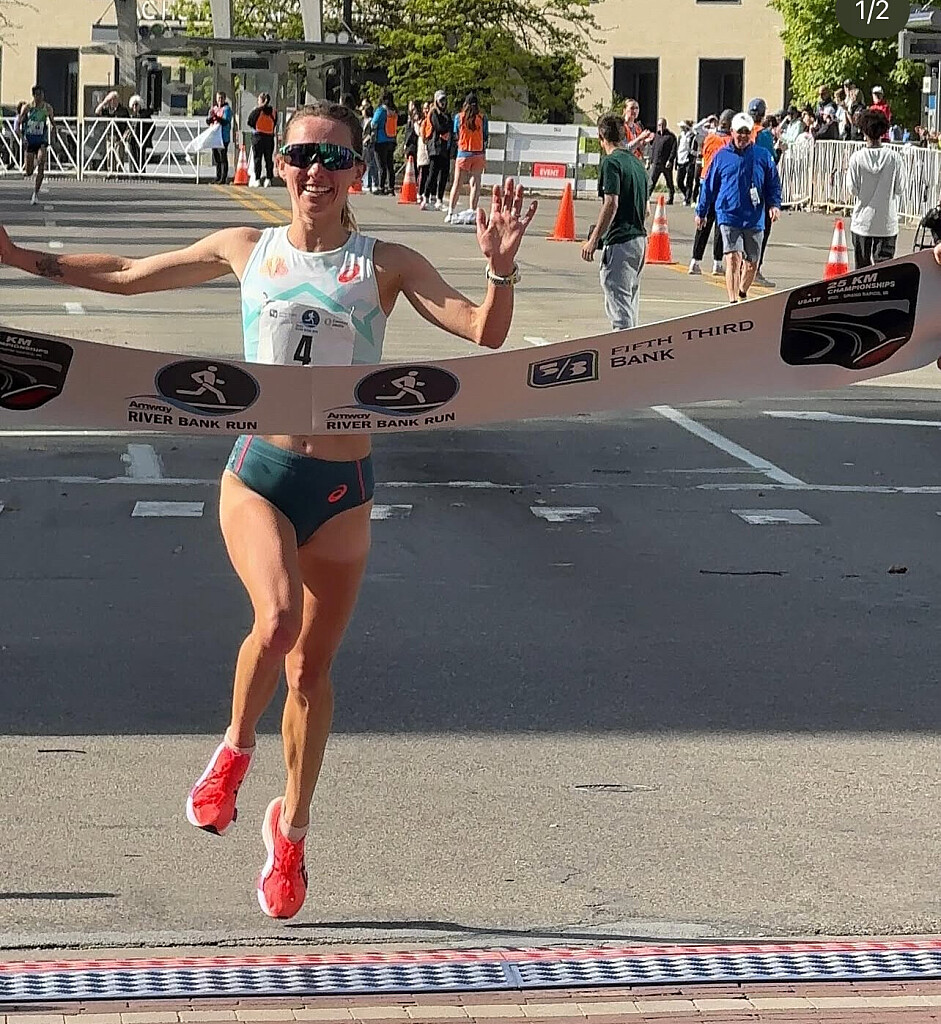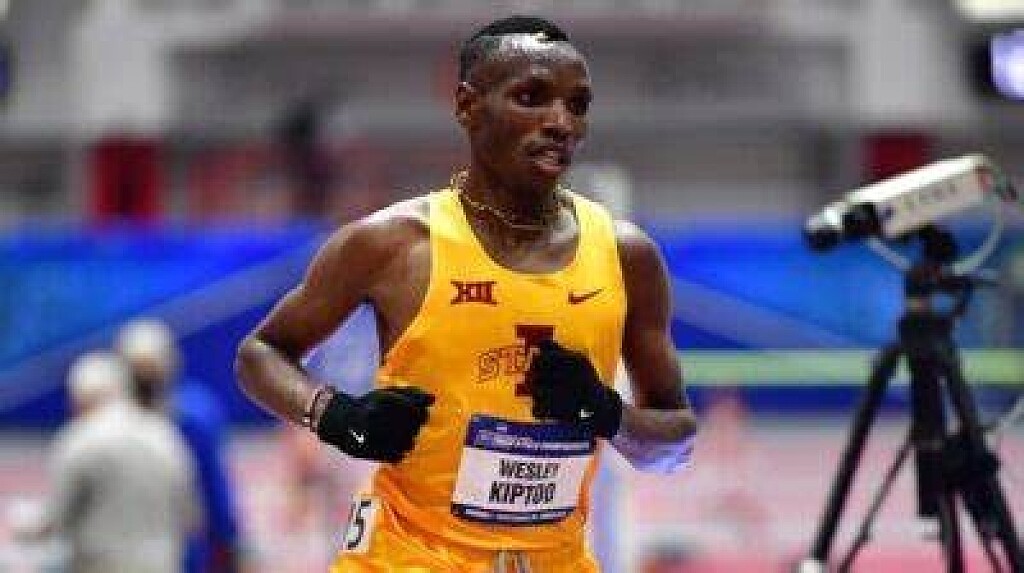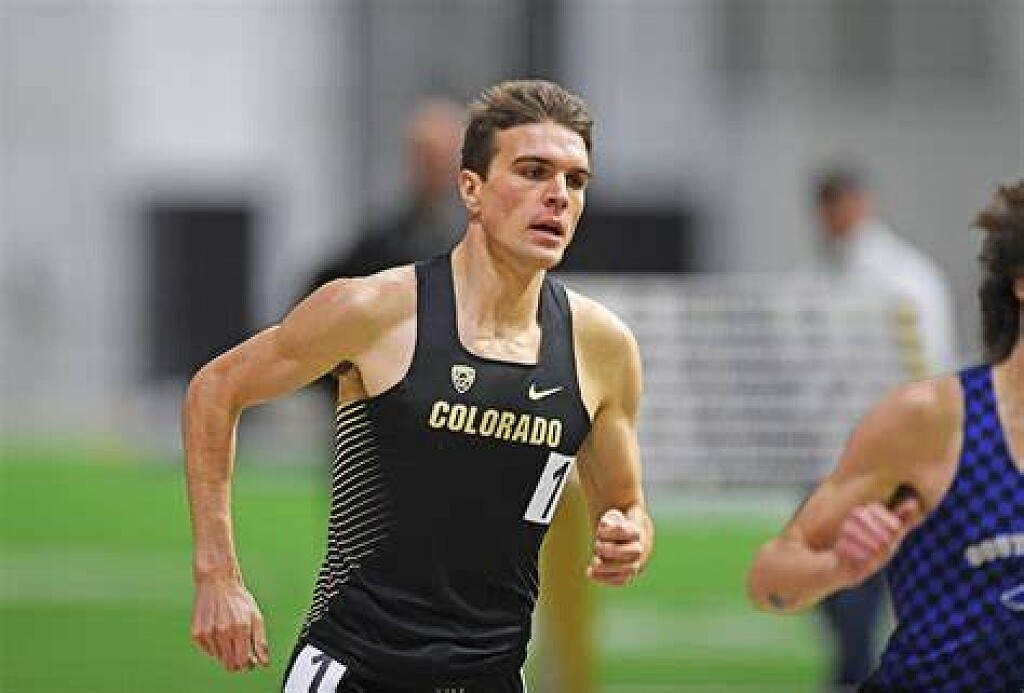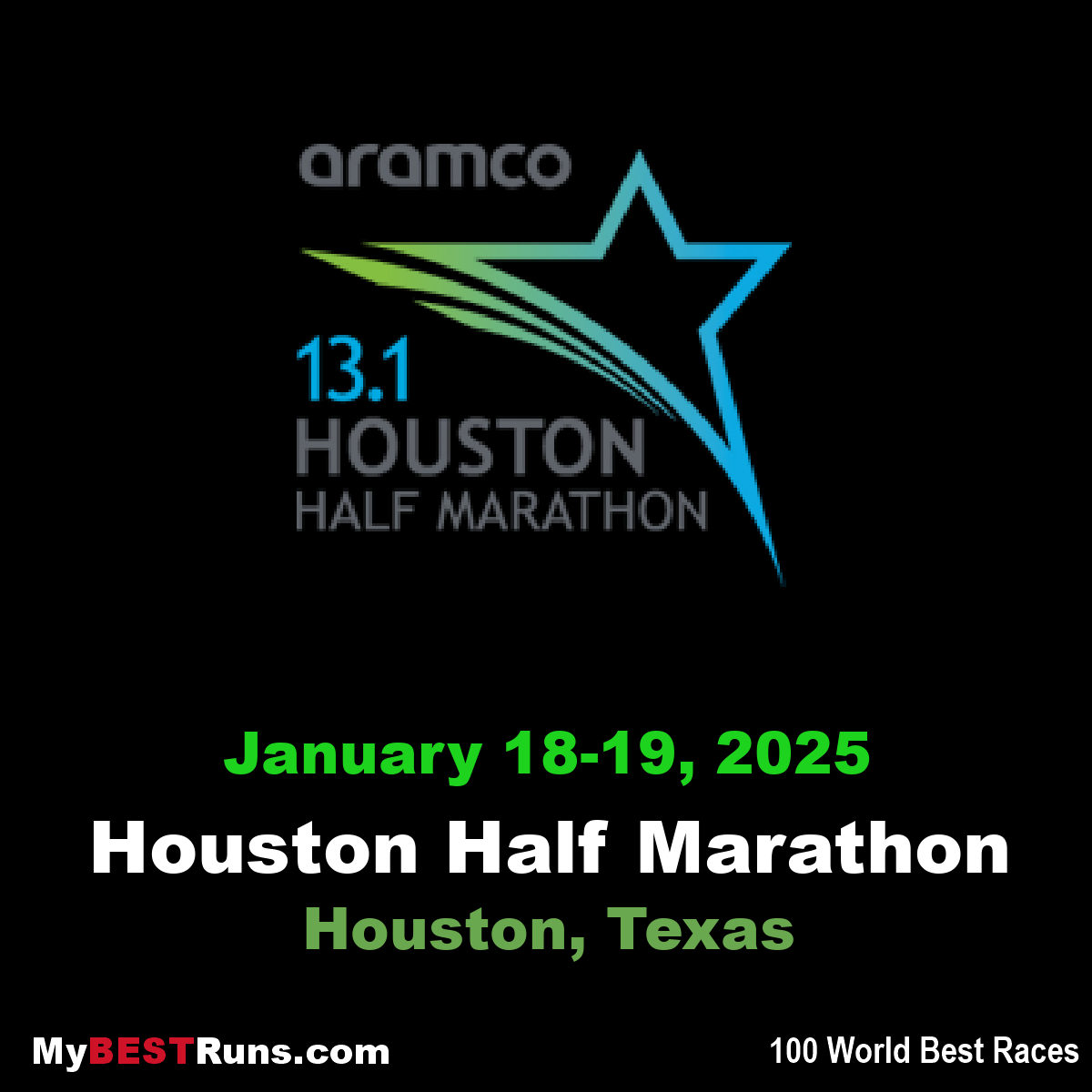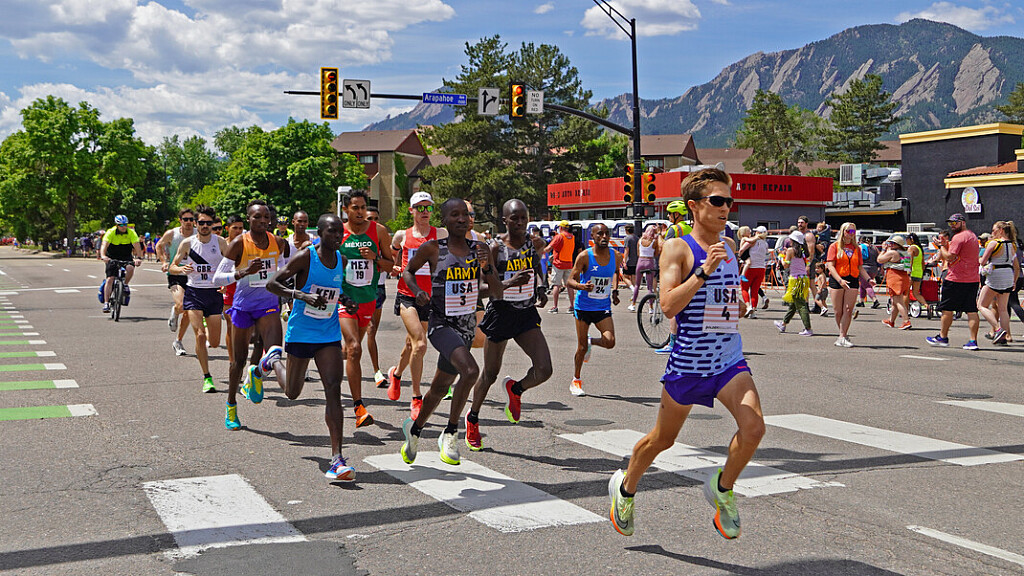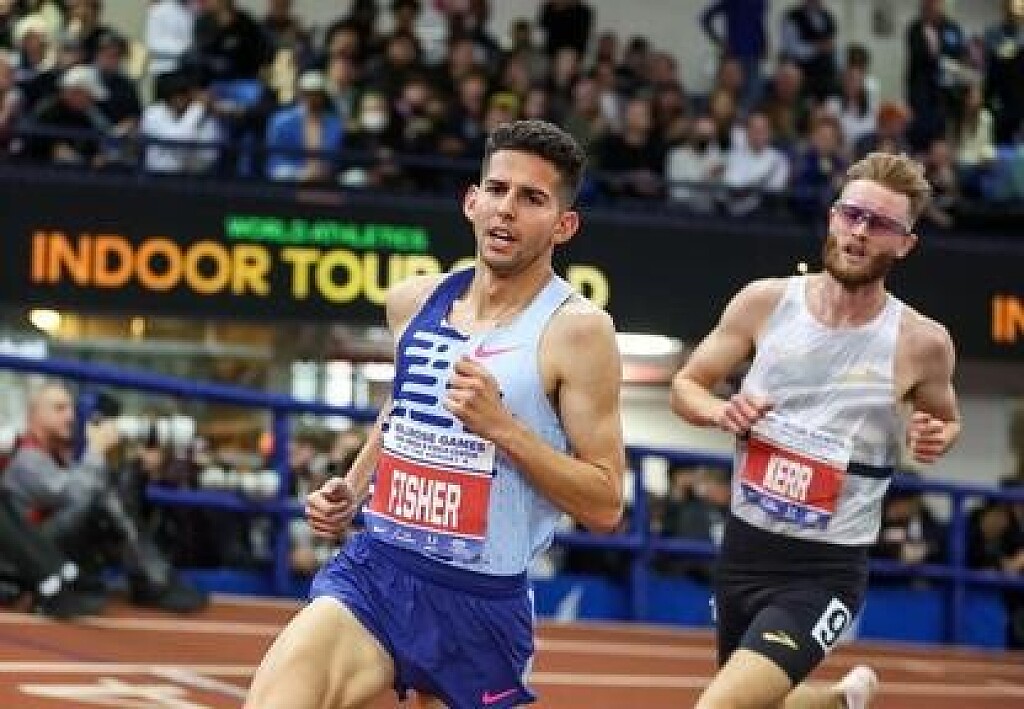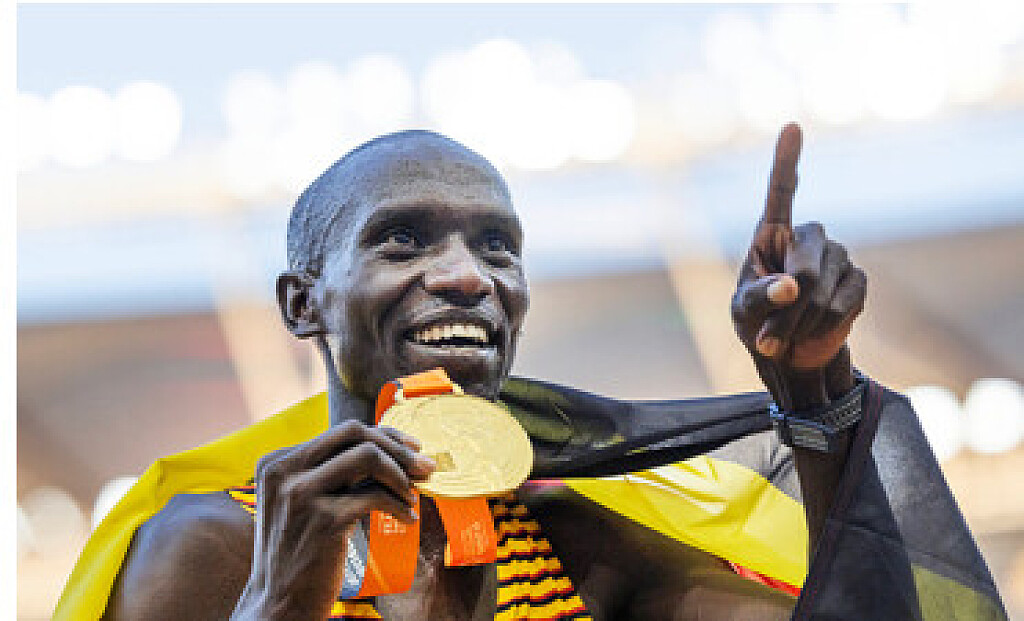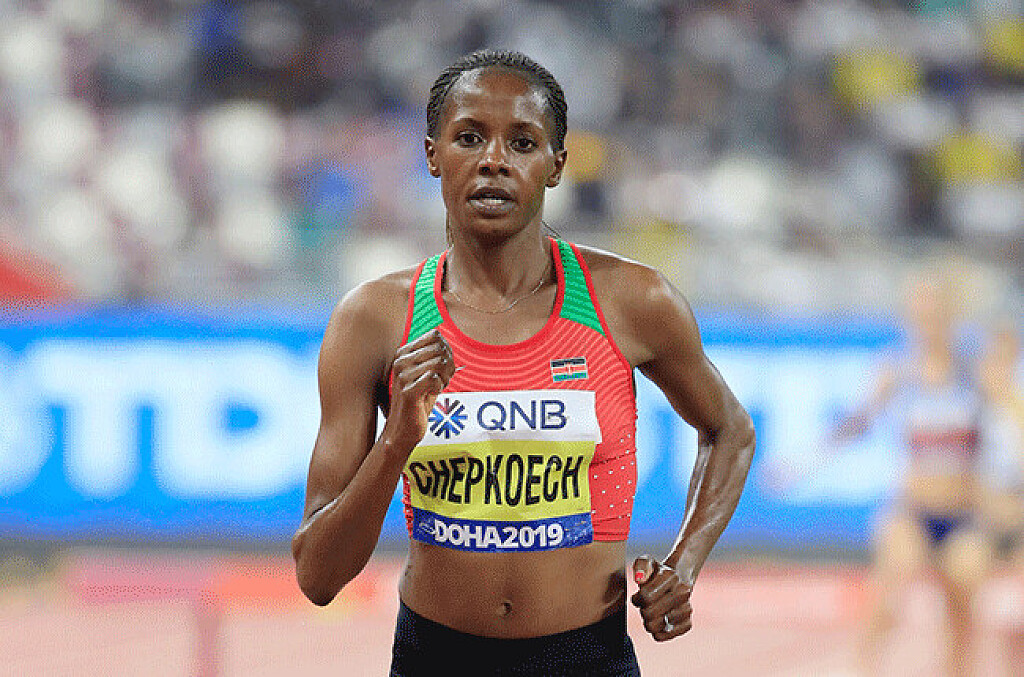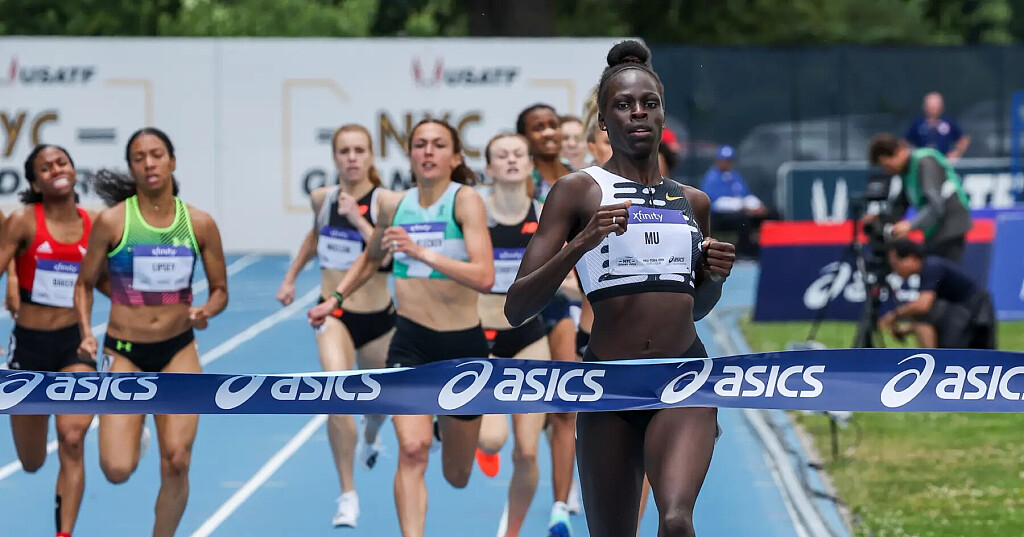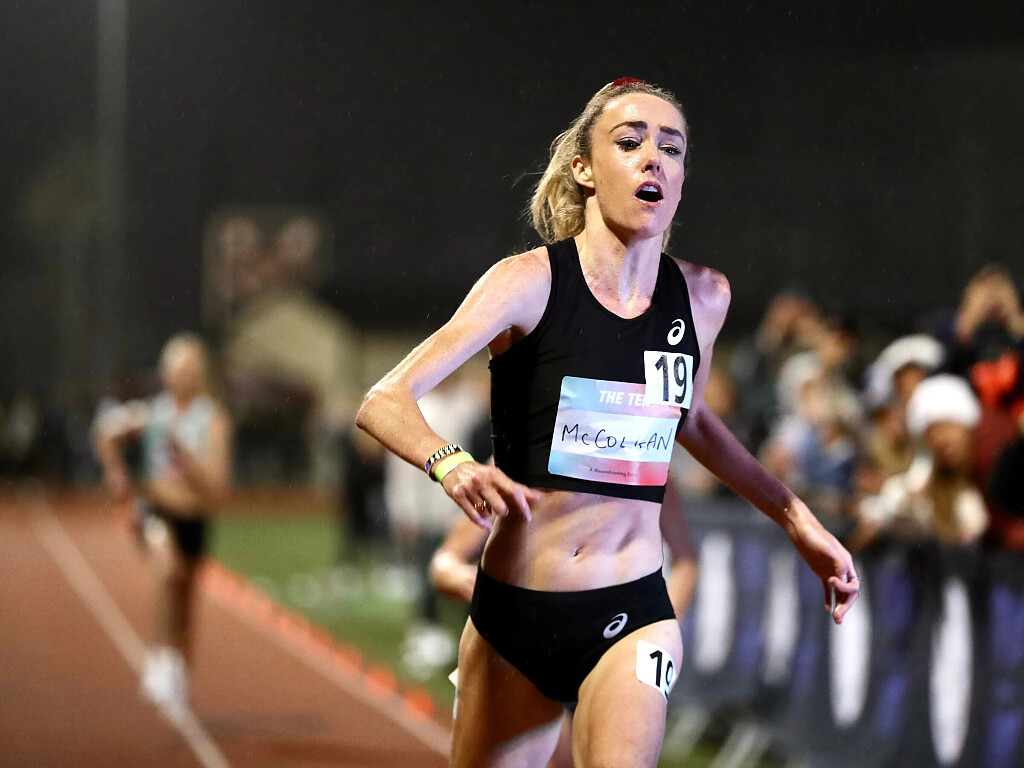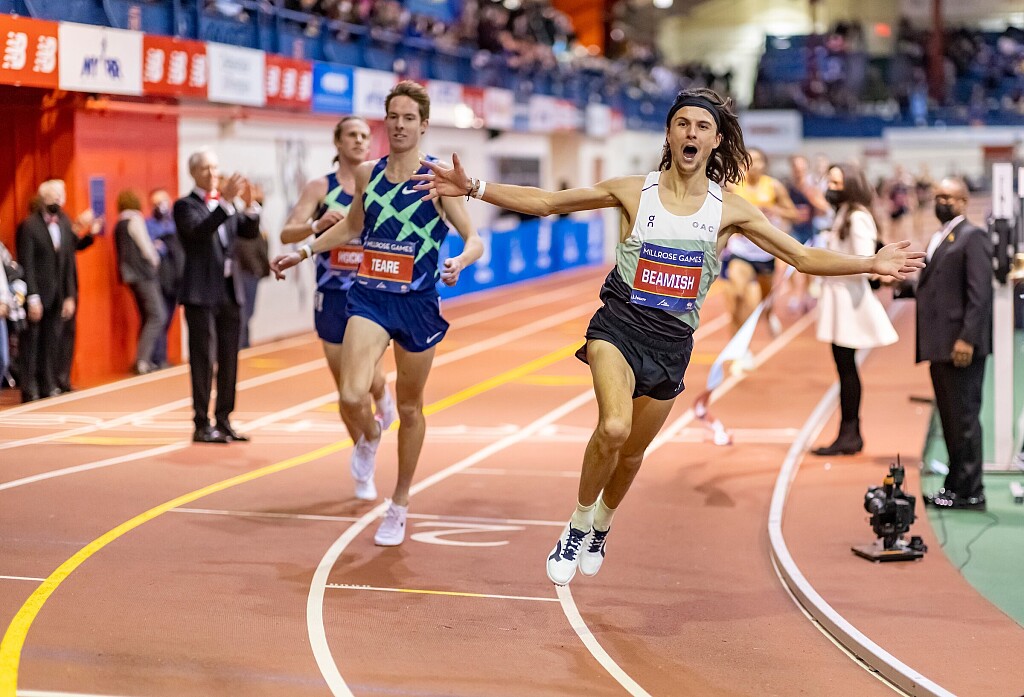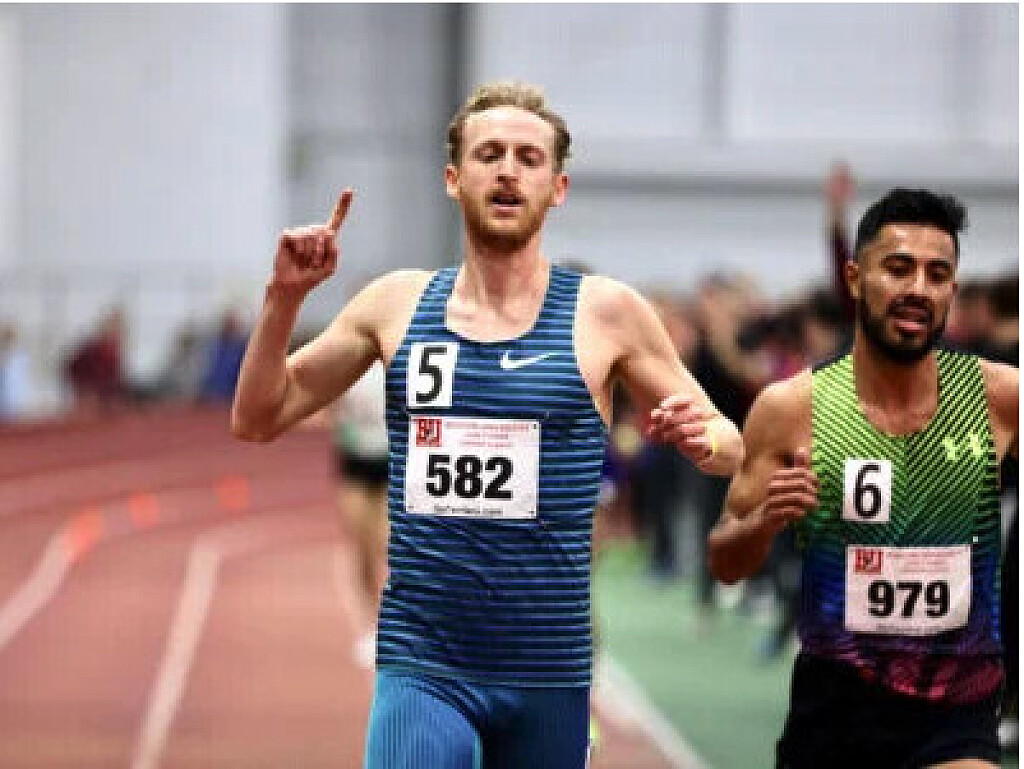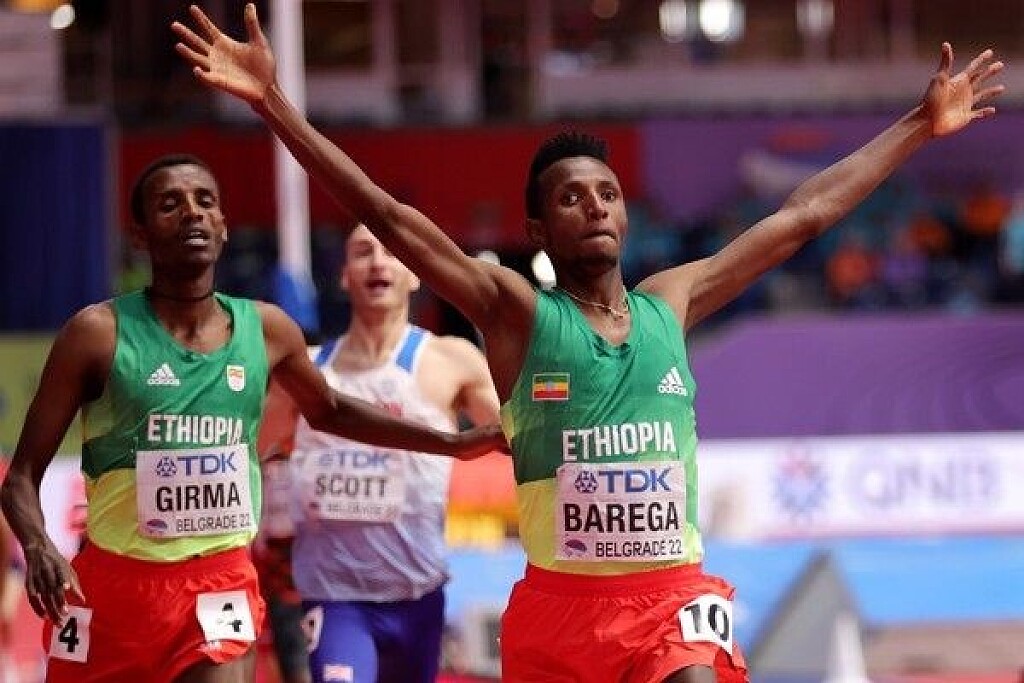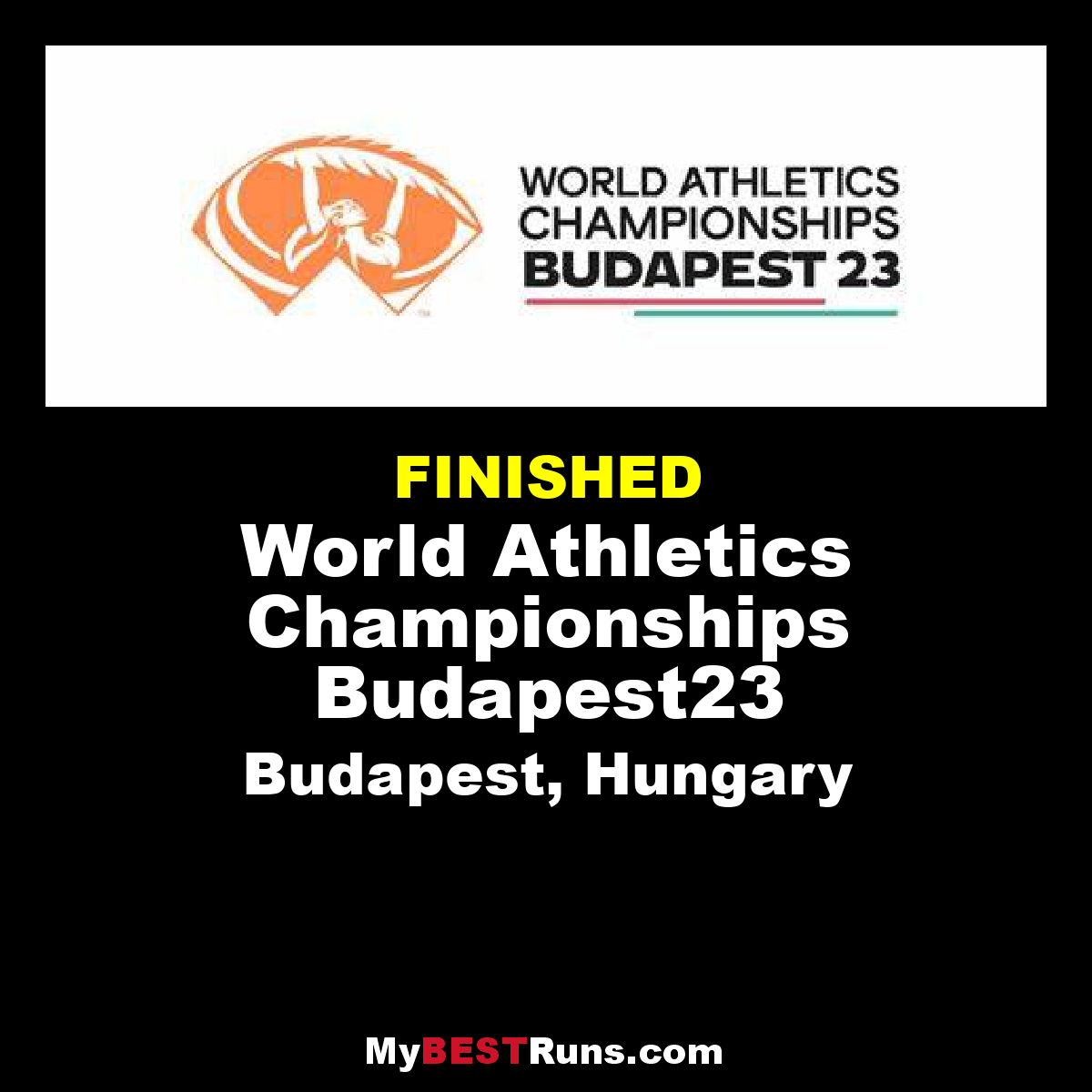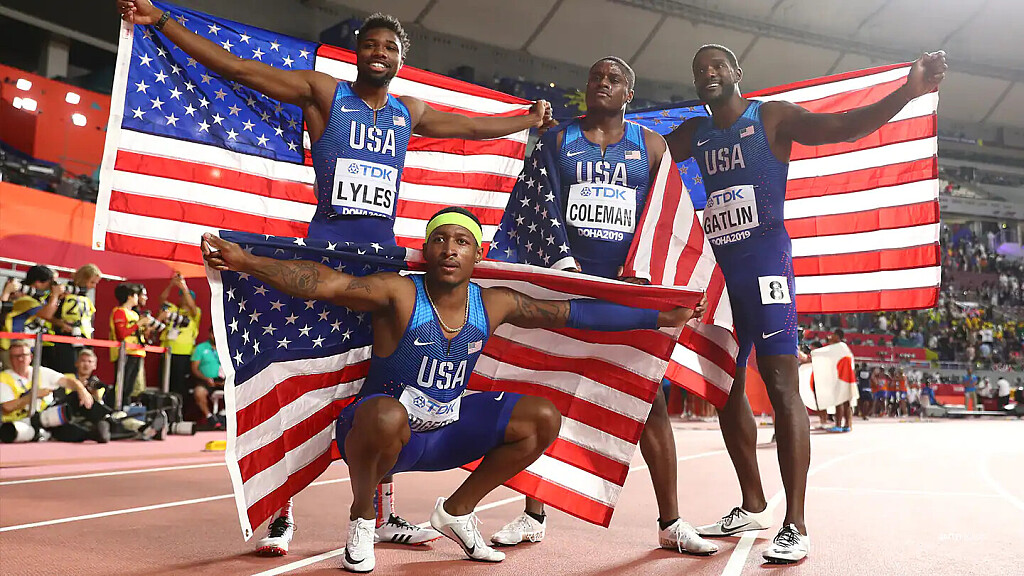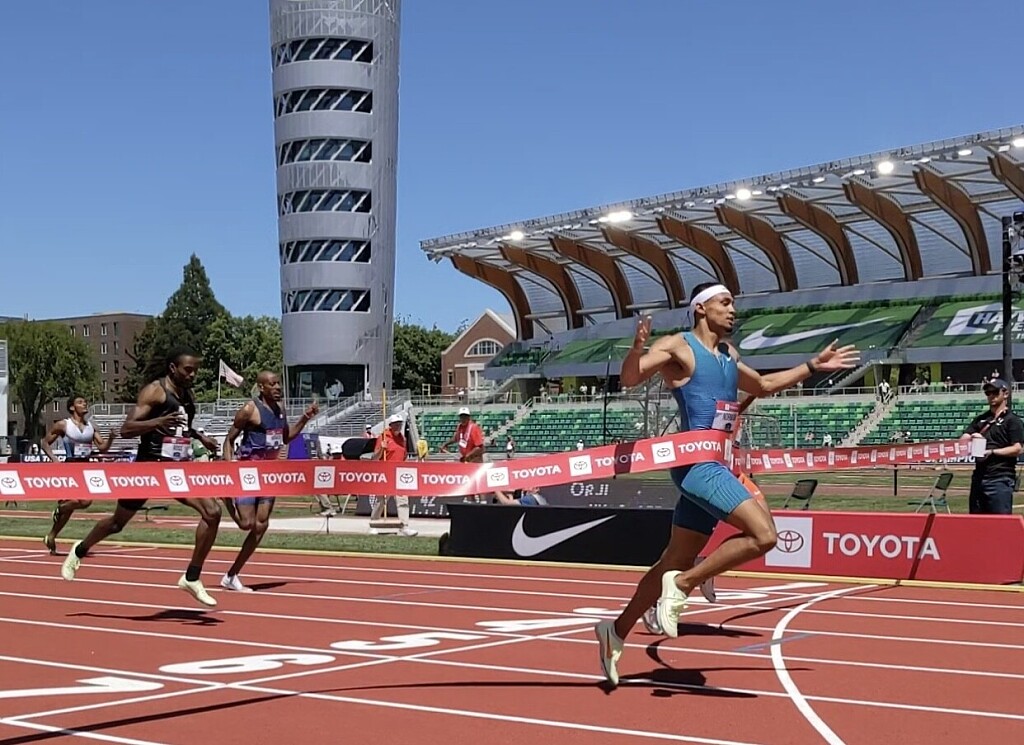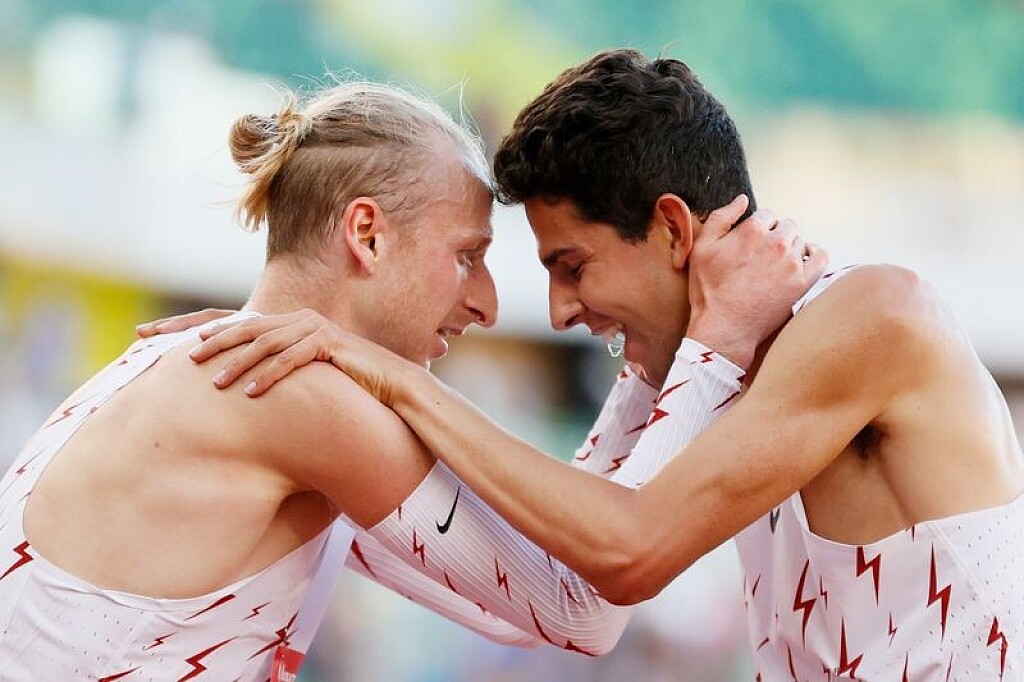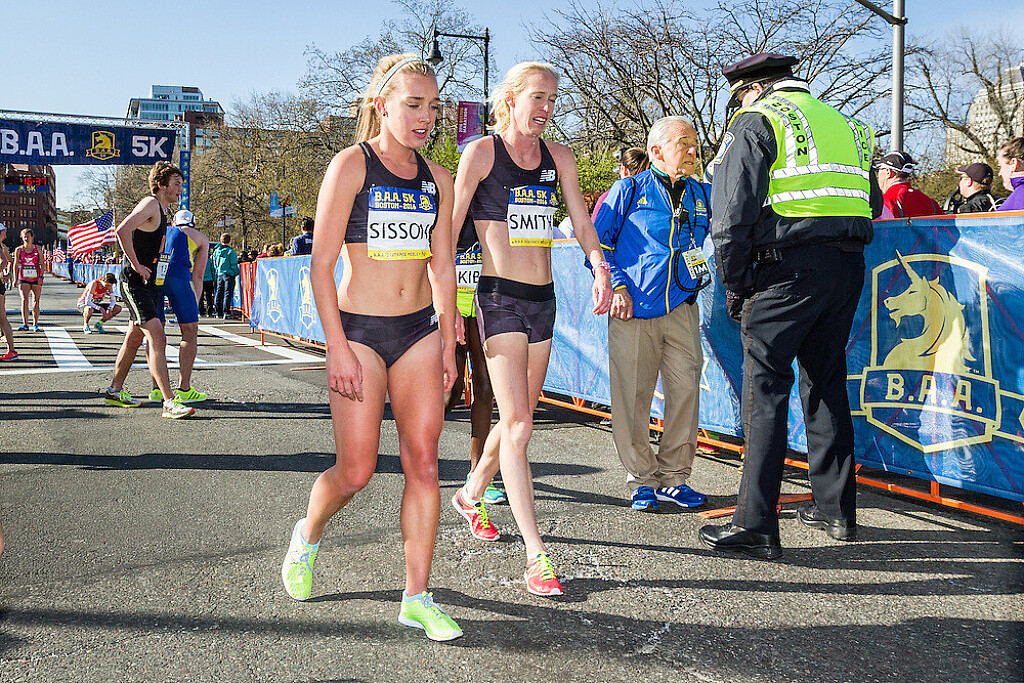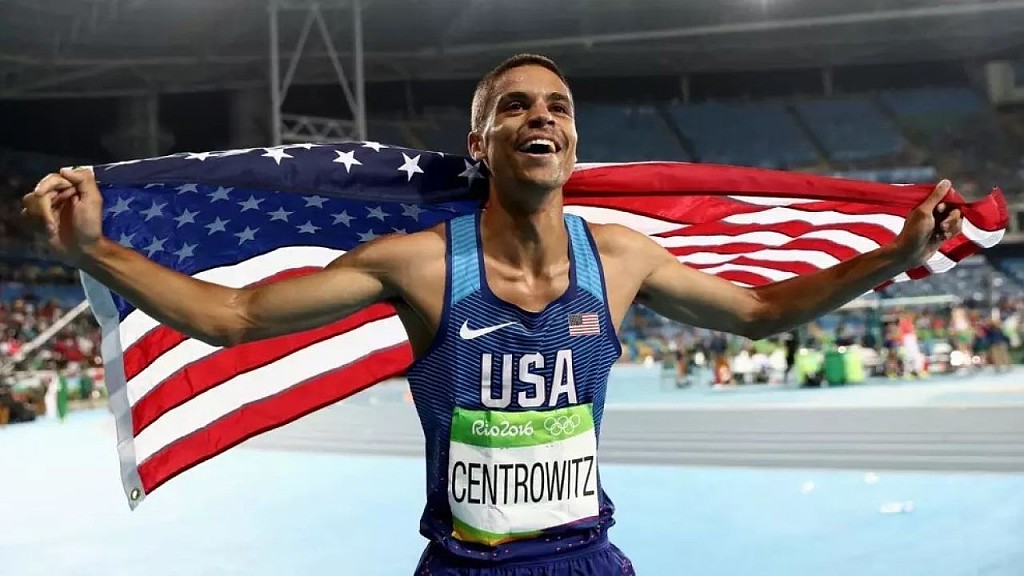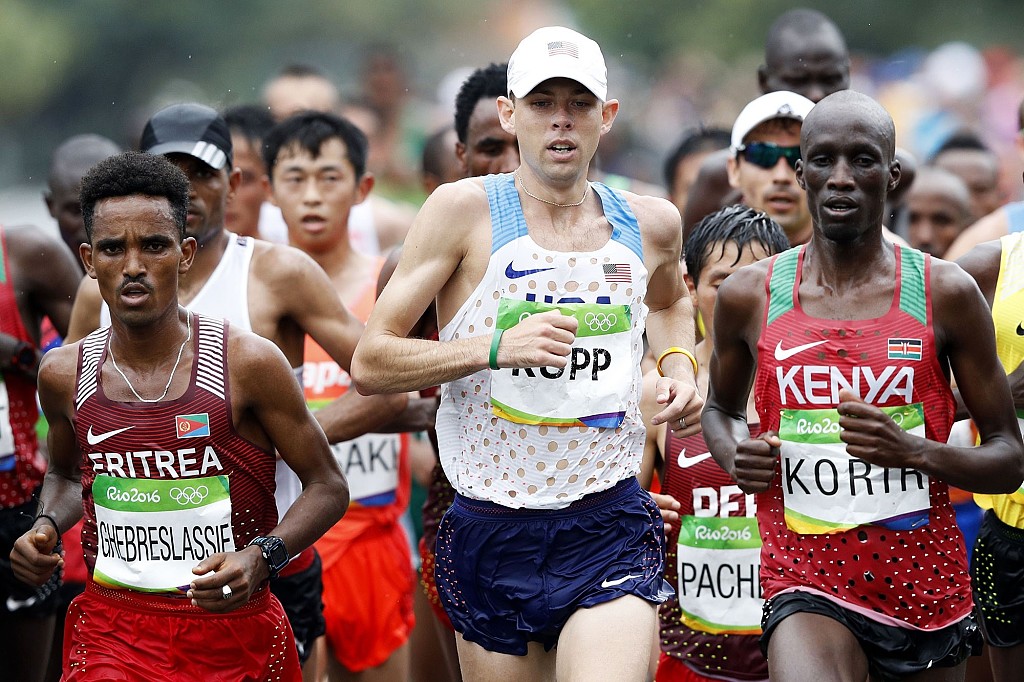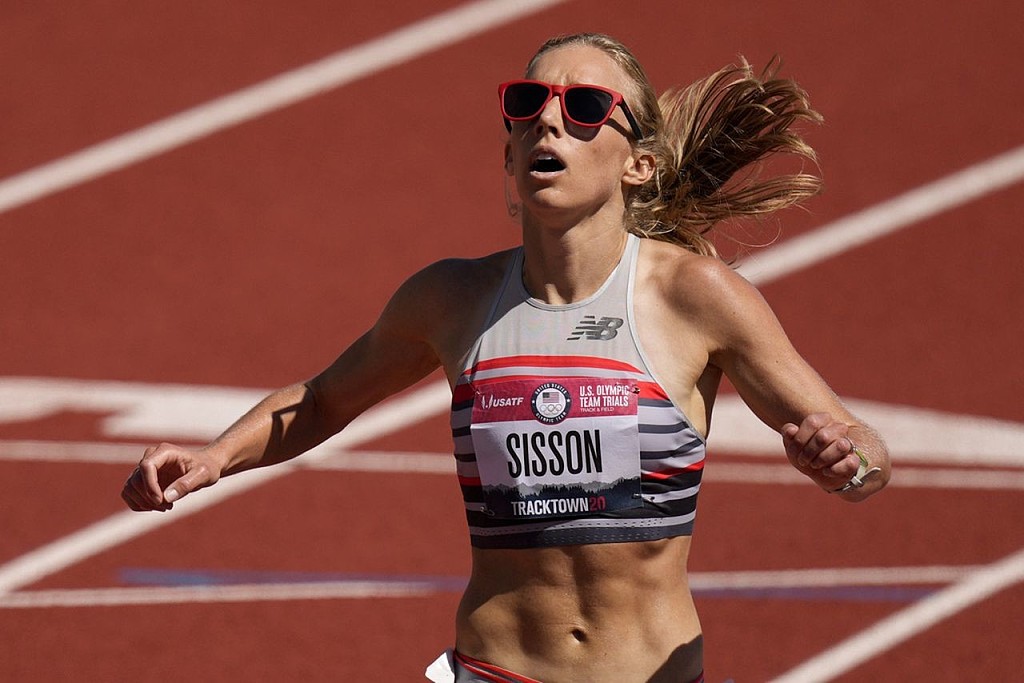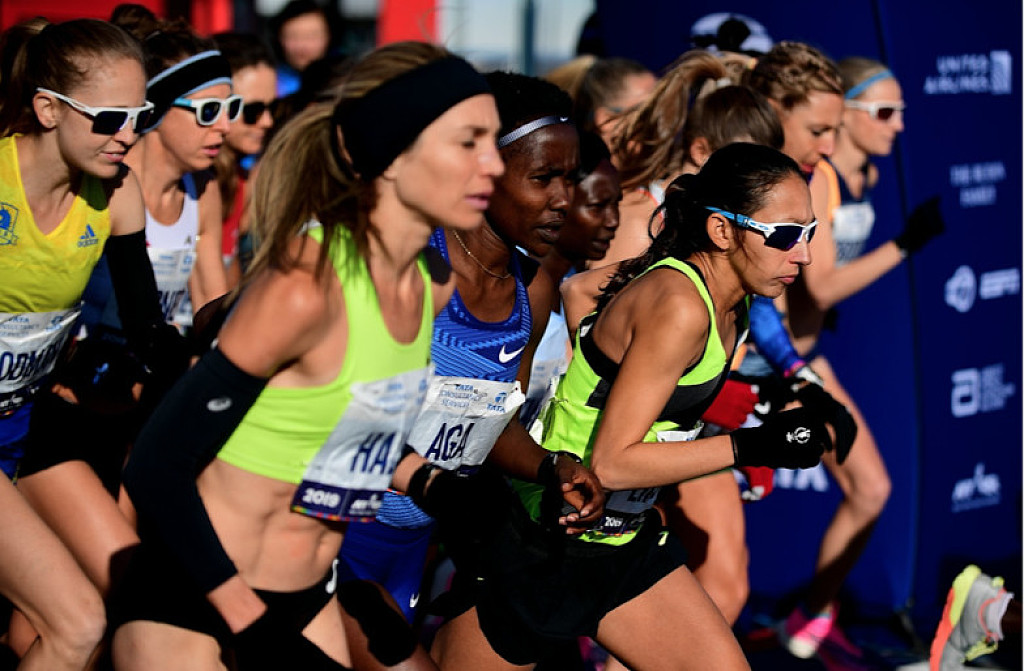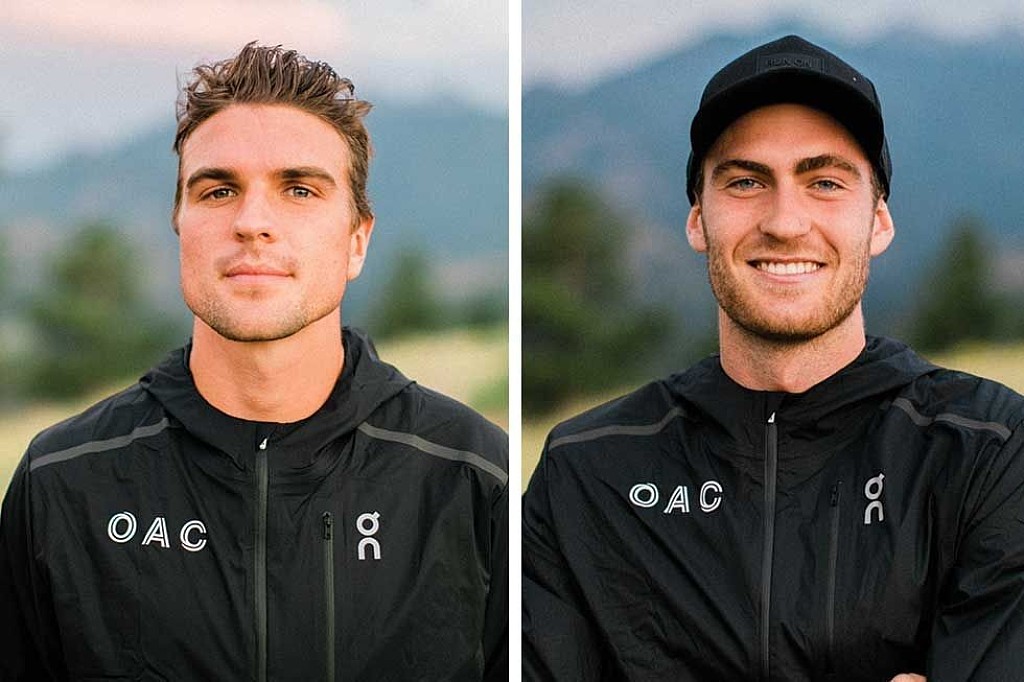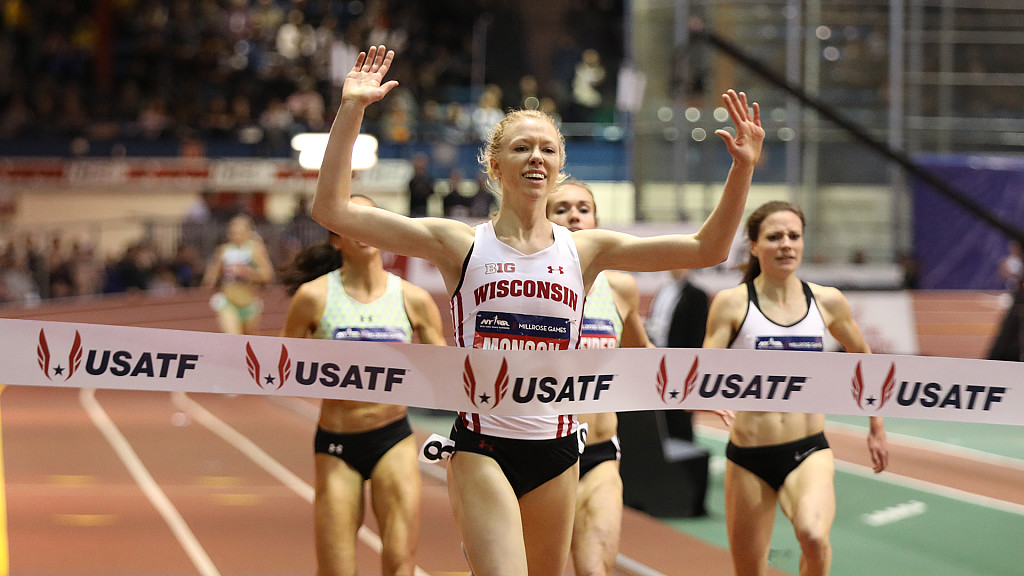Running News Daily
Running News Daily is edited by Bob Anderson. Send your news items to bob@mybestruns.com Advertising opportunities available. Train the Kenyan Way at KATA Kenya and Portugal owned and operated by Bob Anderson. Be sure to catch our movie A Long Run the movie KATA Running Camps and KATA Potato Farms - 31 now open in Kenya! https://kata.ke/
Index to Daily Posts · Sign Up For Updates · Run The World Feed
Articles tagged #Joe Klecker
Today's Running News
Benson Kipruto Wins a Thrilling 2025 New York City Marathon as Kipchoge and Bekele Fade
The streets of New York witnessed one of the most dramatic finishes in recent marathon history as Benson Kipruto of Kenya edged compatriot Alexander Mutiso by fractions of a second to win the 2025 TCS New York City Marathon. Both men were clocked at 2:08:09, with Kipruto leaning ahead in the final meters of Central Park to claim the title.
The victory marked a triumphant return to the top for Kipruto, who has previously won the Boston and Chicago Marathons. On a day when tactics mattered as much as fitness, he delivered a perfectly timed surge to secure the crown.
Alexander Mutiso finished a close second in 2:08:09, just 0.16 seconds behind, while 2021 New York champion Albert Korir completed the Kenyan sweep in third with a time of 2:08:57. Great Britain’s Patrick Dever ran a superb debut marathon to finish fourth in 2:08:58, and Swiss athlete Matthias Kyburz crossed the line fifth in 2:09:55.
All eyes were on Eliud Kipchoge, the two-time Olympic champion and marathon world record holder, making his long-awaited debut in New York. The legendary Kenyan started conservatively and remained in the lead pack through halfway, but the relentless climbs and bridges of the course eventually took their toll. Kipchoge finished 17th in 2:14:36, smiling as he crossed the line, suggesting this could be his final appearance at a World Marathon Major.
Ethiopian great Kenenisa Bekele also started among the favorites but faded after the 30-kilometer mark and did not finish the race. His withdrawal, along with Kipchoge’s struggles, highlighted the unique difficulty of New York’s course—one that tests strategy and strength more than sheer speed.
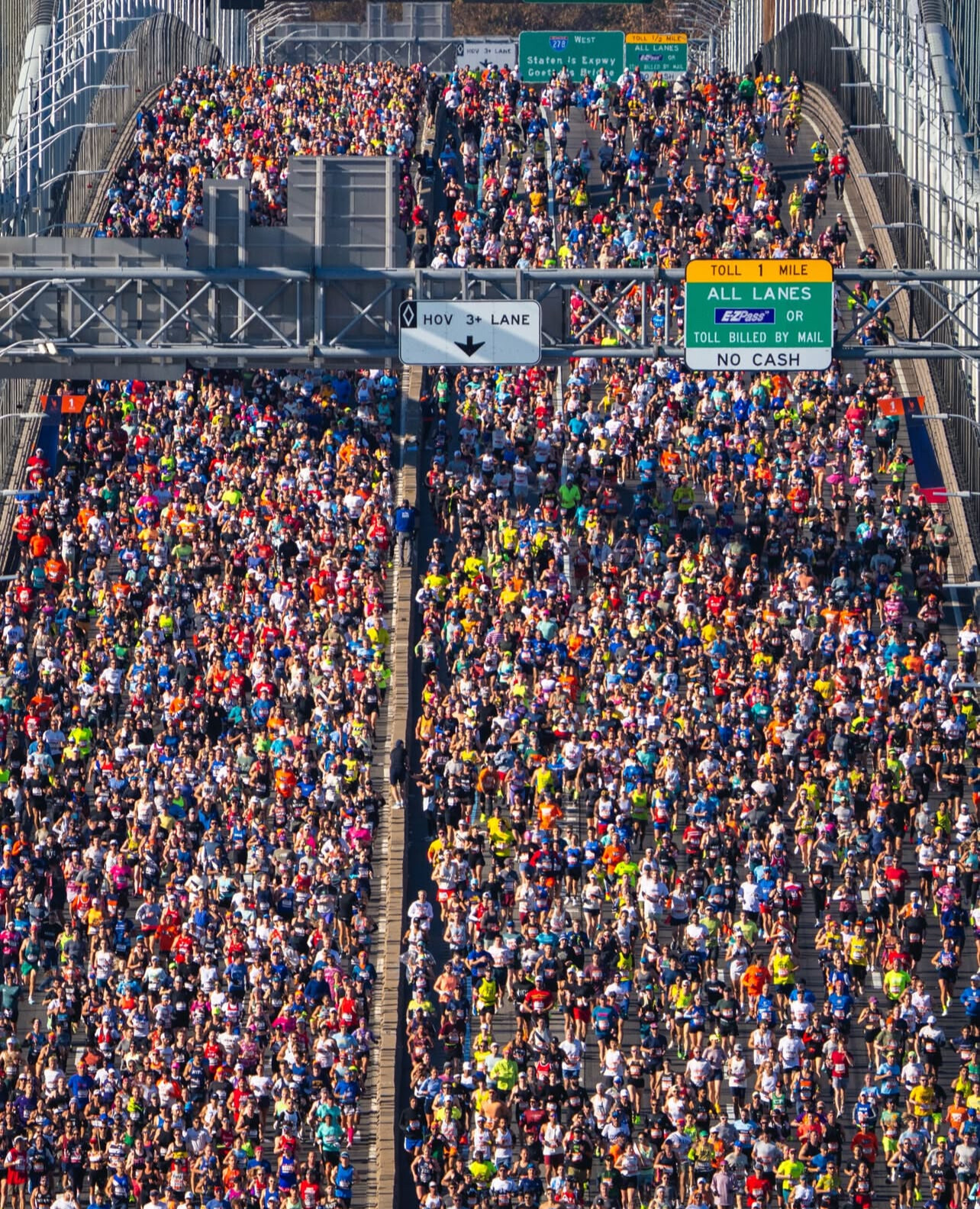
Despite the absence of a record-breaking time, the 2025 edition of the TCS New York City Marathon delivered unforgettable drama. The Kenyan trio’s podium sweep reaffirmed the country’s dominance in distance running, while thousands of runners from across the globe once again turned the streets of the five boroughs into a festival of endurance and inspiration.
Top 10 Men’s Results – 2025 TCS New York City Marathon:
1. Benson Kipruto (Kenya) – 2:08:09
2. Alexander Mutiso (Kenya) – 2:08:09
3. Albert Korir (Kenya) – 2:08:57
4. Patrick Dever (Great Britain) – 2:08:58
5. Matthias Kyburz (Switzerland) – 2:09:55
6. Joel Reichow (United States) – 2:09:56
7. Charles Hicks (United States) – 2:09:59
8. Sondre Moen (Norway) – 2:10:15
9. Tsegay Weldlibanos (Eritrea) – 2:10:36
10. Joe Klecker (United States) – 2:10:37
Eliud Kipchoge finished 17th in 2:14:36.
Kenenisa Bekele did not finish (DNF).
by Boris Baron
Login to leave a comment
Chasing New York: What to Watch at the 2025 TCS New York City Marathon
Every November, the streets of New York City transform. Five boroughs become a stage. Dreams meet asphalt.
The 2025 TCS New York City Marathon is fast approaching — and for runners, coaches, and fans alike, it remains one of the most electric events on the global running calendar.
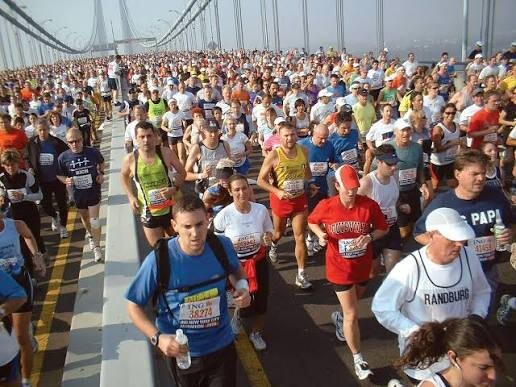
The Big Picture
• Date: Sunday, November 2, 2025
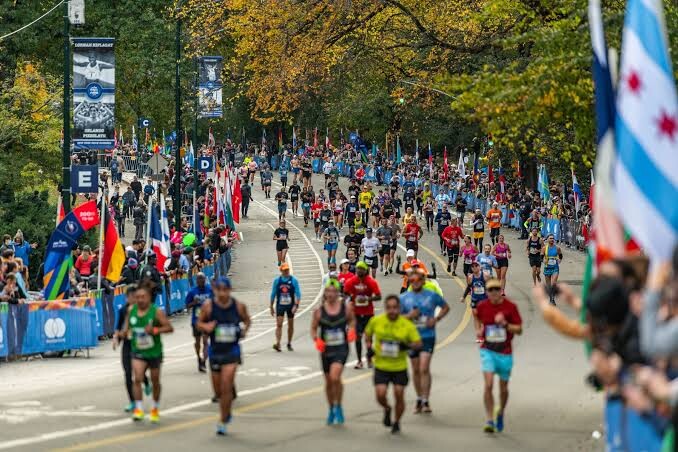
• Field size: More than 55,000 runners representing over 130 nations will take on the 26.2-mile journey from Staten Island to Central Park.
• Defending champions: Abdi Nageeye (Netherlands) and Sheila Chepkirui (Kenya) return to defend their crowns.
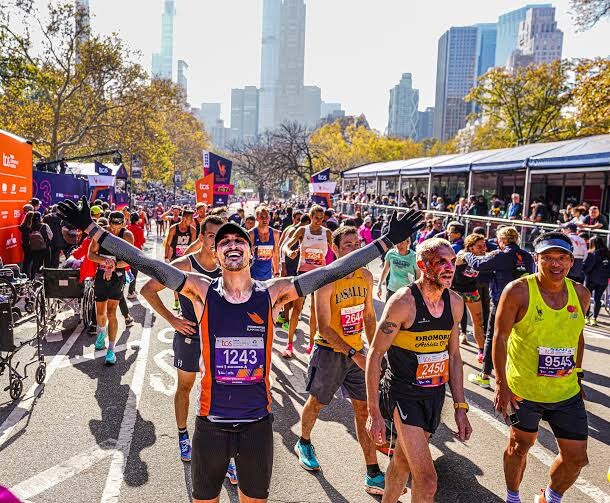
• Debut stars: Marathon legend Eliud Kipchoge and Olympic champion Sifan Hassan will make their long-awaited New York debuts — a storyline that has the running world buzzing.
• Classic route: The course again threads through all five boroughs, starting at Fort Wadsworth on Staten Island, crossing the Verrazzano-Narrows Bridge, and finishing in Central Park.
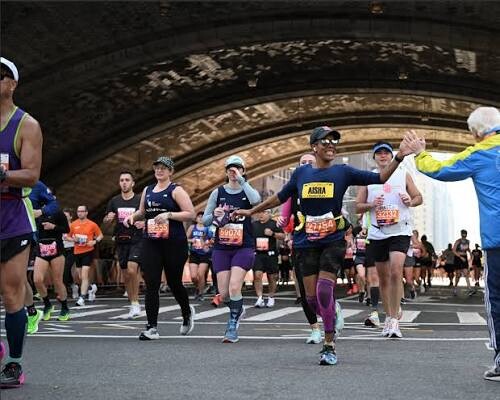
• Sustainability focus: Organizers at New York Road Runners (NYRR) continue to expand environmental initiatives, including recyclable aluminum water bottles and reduced single-use plastics.
Course Records
• Men’s Record: 2:04:58 – Tamirat Tola (2023)
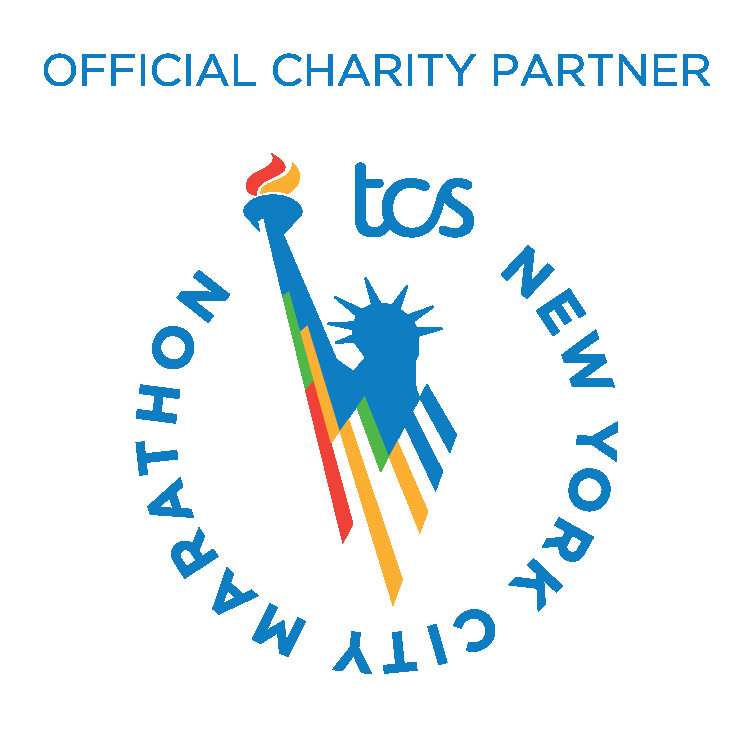
• Women’s Record: 2:22:31 – Margaret Okayo (2003)
Both marks remain tough to challenge on New York’s rolling, bridge-laden course — but with Kipchoge, Chebet, and Nageeye in the men’s field, and Hassan, Obiri, and Lokedi among the women, the potential for history is very real.
Men’s Elite Highlights
• Eliud Kipchoge (Kenya) – two-time Olympic champion, 2:01:09 PB, running NYC for the first time.
• Abdi Nageeye (Netherlands) – defending champion and Olympic silver medalist.
• Evans Chebet (Kenya) – two-time Boston Marathon champion.
• Benson Kipruto (Kenya) – Chicago 2022 winner.
• Albert Korir (Kenya) – former NYC champion.
• Joe Klecker (USA) – U.S. Olympian making his marathon debut.
• Hillary Bor (USA) – U.S. steeplechase champion transitioning to the roads.
• Charles Hicks (USA) – NCAA cross-country champion now turning professional.
Women’s Elite Highlights
• Sifan Hassan (Netherlands) – Olympic champion, winner in London (2023) and Chicago (2024).
• Hellen Obiri (Kenya) – Boston 2023 and NYC 2023 champion.
• Sharon Lokedi (Kenya) – NYC 2022 winner, still a local favorite.
• Sheila Chepkirui (Kenya) – defending NYC champion.
• Emily Sisson (USA) – current American marathon record holder (2:18:29).
• Molly Seidel (USA) – Tokyo Olympic bronze medalist.
• Fiona O’Keeffe (USA) – 2024 U.S. Olympic Trials marathon champion.
• Susanna Sullivan (USA) – Top-10 finisher at Boston 2023, consistent national contender.
This year’s field features 49 Olympians and Paralympians, nine past major marathon winners, and 16 medalists from Olympic or World Championship events — arguably the deepest lineup in New York history.
What Makes New York Unique (and Brutal)
• Rolling terrain and bridges: The Verrazzano, Pulaski, Queensboro, and Willis bridges each sap rhythm and energy.
• Crowd power: Two million spectators line the course, creating unmatched atmosphere — and volume.
• Late-season unpredictability: Weather can swing from cold drizzle to crisp fall perfection.
• Tactical racing: With its uneven pacing demands, NYC rewards strategy over pure speed.
Storylines to Watch
• Kipchoge’s debut: The marathon GOAT takes on the sport’s loudest stage. Can he master New York’s relentless hills and twists?
• Hassan’s bold quest: Coming off London and Chicago wins, can she complete the trifecta in her first NYC appearance?
• Lokedi vs. Obiri: The Kenyan duo continue their fierce rivalry on familiar ground.
• Nageeye’s defense: Last year’s champion faces his toughest test yet with Chebet and Kipruto in pursuit.
• American charge: Sisson, Seidel, O’Keeffe, and Sullivan lead the most complete U.S. women’s team in years — while Klecker and Bor look to ignite the next chapter for American men’s marathoning.
• Record watch: Tola’s 2:04:58 may finally be tested, and Okayo’s 22-year-old mark could fall if conditions align.
For Runners and Coaches
• Train the bridges. Practice long tempo runs that mimic New York’s undulating rhythm.
• Respect the pace. The roar of Brooklyn can trick even the best into going out too fast.
• Fuel flexibly. NYRR’s eco-station setup may differ from other majors — plan accordingly.
• Stay mentally sharp. The final 10 K through Central Park can break anyone unprepared for its hills.
• Layer smartly. Start slightly chilled; the crowds and effort will warm you fast.
The Bottom Line
The 2025 TCS New York City Marathon blends star power, unpredictability, and history like no other race. From Kipchoge’s long-awaited debut to the fiercest women’s field ever assembled in New York, every mile promises drama.
For runners chasing personal bests, and for millions of spectators lining the streets or watching from afar, November 2 will again remind us why this marathon is more than a race — it’s a celebration of endurance, spirit, and the human story that unfolds across 26.2 miles of the world’s greatest city.
by Boris Baron
Login to leave a comment
TCS New York City Marathon
The first New York City Marathon, organized in 1970 by Fred Lebow and Vince Chiappetta, was held entirely in Central Park. Of 127 entrants, only 55 men finished; the sole female entrant dropped out due to illness. Winners were given inexpensive wristwatches and recycled baseball and bowling trophies. The entry fee was $1 and the total event budget...
more...Amway River Bank Run Delivers $116,000 in Payouts and Two New American Records
The 48th edition of the Amway River Bank Run May 10th delivered one of its most memorable races in history as both Casey Clinger and Carrie Ellwood shattered American records in the 25K distance. Over 16,000 participants took to the streets of downtown Grand Rapids, reaffirming the race’s place among the World’s Best 100 Races.
Elite Performances and Records
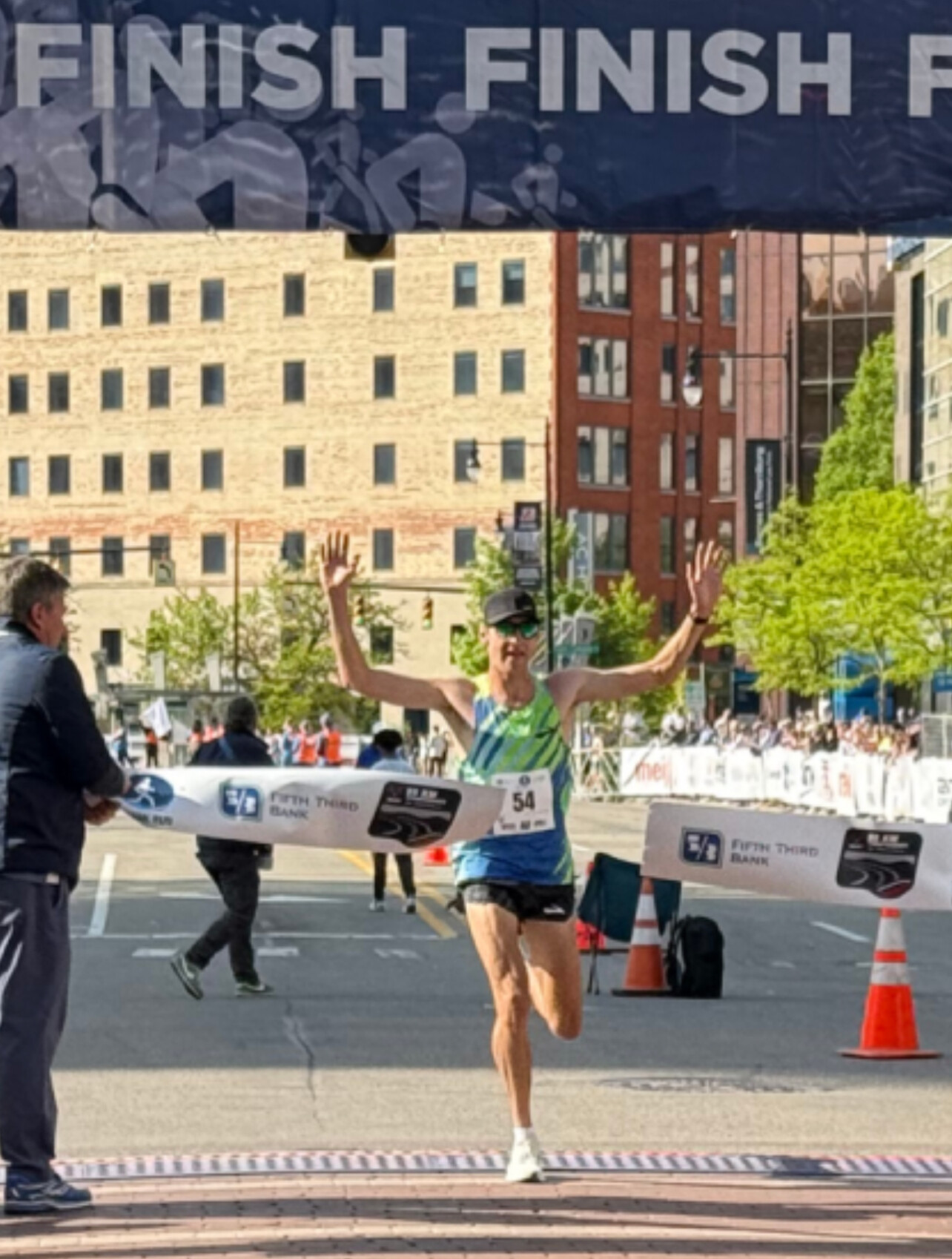
Clinger crossed the line in 1:12:16.82, eclipsing the previous U.S. 25K record of 1:13:08. On the women’s side, Ellwood clocked 1:22:26.19, just under the prior mark of 1:22:30.

Both champions earned $10,000 for their victories and a $5,000 bonus for setting new American records—bringing their individual prize money totals to $15,000.

Top 10 Men – 25K
1. Casey Clinger – 1:12:16.82
2. Joe Klecker – 1:12:31.42
3. Hillary Bor – 1:12:52.83
4. Zouhair Talbi – 1:14:46.99
5. Joel Reichow – 1:15:00.13
6. Joseph Trojan – 1:15:40.74
7. Anthony Raftis – 1:15:43.97
8. Patrick Smyth – 1:15:53.89
9. Will Nation – 1:16:37.67
10. Andy Wacker – 1:17:21.29
Top 10 Women – 25K
1. Carrie Ellwood – 1:22:26.19
2. Megan Hasz – 1:23:51.78
3. Kasandra Parker – 1:24:25.05
4. Atsele Tesema – 1:25:21.43
5. Savannah Berry – 1:25:41.29
6. Gabrielle Orie – 1:28:09.24
7. Maya Weigel – 1:28:25.97
8. Piper Atnip – 1:30:32.03
9. Kathryn Fluehr – 1:31:36.85
10. Abby Levene – 1:34:47.89
Masters Division Winners
Prize money of $1,500 was awarded to the top male and female Masters athletes (40+), with additional payouts for age-group champions. The following runners topped their respective age divisions:
• M 40-49 – Dickson Mercer, 1:25:52
• M 50-59 – Rob Hyde, 1:36:14
• M 60-69 – Henry Hofman, 1:39:48
• M 70+ – Larry Ver Merris, 2:08:46
• F 40-49 – Melissa Kessler, 1:39:21
• F 50-59 – Janet Becker, 2:03:27
• F 60-69 – Lisa Veneziano, 1:43:44
• F 70+ – JoAnne Furu, 2:41:37
A Grand Rapids Tradition
The Amway River Bank Run remains the largest 25K road race in the United States and continues to serve as the USATF 25K National Championship. The course winds through the heart of Grand Rapids, offering a mix of flat stretches and rolling hills with vibrant support from local crowds.
With American records falling and a deep field of elite and recreational runners, the 2025 edition delivered everything a great road race should.
by Boris Baron
Login to leave a comment
Houston chases new American records elite fields include Yehaulaw and Kiptoo
The 2025 road racing year will open with an exciting chase for American records at the Aramco Houston Half Marathon and course records at the Chevron Houston Marathon on Sunday, January 19.
The Houston Marathon Committee announced the professional fields for both races today, featuring returning champions and all-time top performers.
The women’s half marathon field is led by the fifth fastest woman in history, Yalemzerf Yehaulaw of Ethiopia who will race in North America for the first time. Yehaulaw, 25, holds two of the top ten all-time half marathon performances including her personal best of 1:03:51 from Valencia in 2021. In 2024, Yehaulaw set a new personal best time in the marathon, winning the Amsterdam Marathon in 2:16:52, a course record.
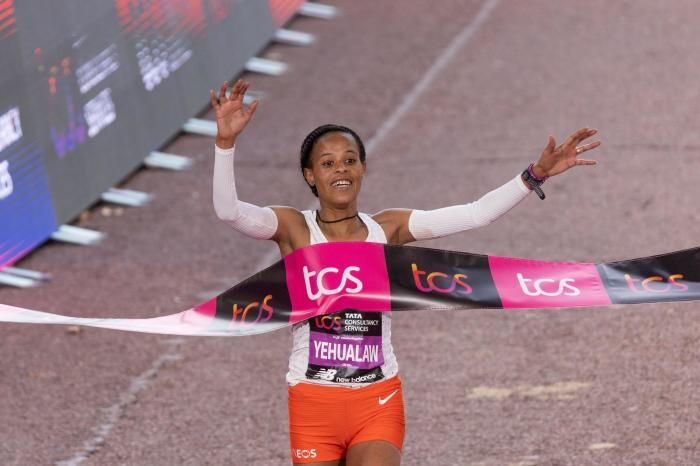
“It has always been my ambition to race in the United States and now the opportunity has finally come,” said Yehaulaw, the 2022 TCS London Marathon winner. “Running an early race means I get a chance to focus fully on the half marathon to go for a fast time. I am eager to win.”
The Aramco Houston Half Marathon women’s race also features the follow-up half marathon for the American record holder Weini Kelati. Kelati set the record of 1:06:25 in her debut half marathon here last year. She has not raced the distance since, instead focusing on the 10,000m in which she represented the United States at the 2024 Paris Games.
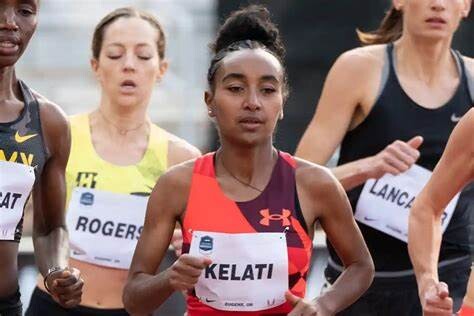
“I’m really excited to come back to Houston and run my second half marathon,” said Kelati, who finished fourth here in 2024. “Last year was great and I hope this year’s race will be even better. My training has been going well and I know the competition will be very good.”
The women’s professional field features 15 women who have run faster than 1:10 in the half marathon. Other top contenders include last year’s third place finisher Buze Diriba of Ethiopia; the third fastest British half marathoner in history, Jessica Warner-Judd, and fellow Brit and 2024 Olympic marathoner, Calli Hauger-Thackery. Hauger-Thackery won the California International Marathon last month.
The men’s competition will see a rematch of last year’s thrilling Aramco Houston Half Marathon. Wesley Kiptoo of Kenya who has been runner-up here for the past two years will again face off against Jemal Yimer of Ethiopia. Yimer outsprinted Kiptoo in 2024, beating him by just one second.
“I can’t wait to return to Houston to try to defend my 2024 title,” said Yimer, who also won here in 2020. “It’s a special place for me to kick off my 2025 road season.”
The pair will be joined by Tanzania Olympian and former Boston Marathon runner-up Gabriel Gaey who has a personal best of 59:42 from his seventh place finish here in 2020.
The men’s race will also see an attempt to finally topple the American half marathon record of 59:43 set here by Ryan Hall in 2007. Leading the chase on the 18-year-old record will be 2024 Olympic marathoners Conner Mantz and Clayton Young. Mantz and Young, who finished eighth and ninth in Paris, train together in Provo, Utah. In November, they were the top two American finishers in the TCS New York City Marathon with Mantz breaking the American course record. This will be Young’s Houston debut. Mantz last ran here in 2023, finishing in sixth place.
“I want to race the Aramco Houston Half Marathon because there are other fast Americans going for the American Record,” said Mantz, who also set the American record in the 10 mile last October. “The opportunities to race in a field like this, on a fast and record-eligible course are rare.”
Mantz and Young will face competition for a spot in the record books from Diego Estrada, the ninth fastest American in history and 2015 Houston champion who had a career-best performance here last year when he finished fifth in 1:00:49. Joe Klecker, an Olympian in the 10,000m, will look to play a factor in his half marathon debut along with his training partner Morgan Pearson, a two-time Olympic silver medalist in the triathlon with a personal best of 1:01:08. Klecker comes to Houston with family history. His mother Janis Klecker is the 1992 Houston Marathon champion.
The Chevron Houston Marathon features the return of two-time champion Dominic Ondoro of Kenya. Ondoro, who won here in 2017 and 2023, will be part of a field that includes two men who have run under Zouhair Talbi’s course record of 2:06:39 set in 2024: Haimro Alame (Israel, 2:06:04) and Ande Filmon (Eritrea, 2:06:38). The field also includes last year’s third place finisher, Hendrik Pfeiffer of Germany. Pfeiffer led nearly 22 miles of last year’s race and finished with a personal best of 2:07:14.
“Houston was the best marathon race in my career so far. I have great memories of the fast course and the impressive city,” said Pfeiffer, whose wife Esther is in the women’s half marathon elite field. “I have already experienced how it feels to lead the race for more than 35 kilometers and I‘m hungry for more. I will definitely try to chase a fast time again.“
A new winner will be crowned in the Chevron Houston Marathon women’s race. After making her half marathon debut here in 2023, Anna Dibaba will return to Houston to run just the second marathon of her career. The sister of Ethiopian legends Tirunesh, Ejegayehu and Genzebe, Dibaba ran 2:23:56 in her debut in Amsterdam last October.
“As I race in more marathons I am sure that I will understand better what I am capable of,” said Dibaba who placed fourth in the 2023 Aramco Houston Half Marathon. “You have to respect the distance of the marathon and it is not enough to be in shape. You must know how to interpret each race, the various courses and conditions. I am looking forward to seeing what I am now able to do in my next race in Houston."
There are two Ethiopian women who have run faster than Dibaba entered in the race. Tsigie Hailesale who has run 2:22:10 and has marathon victories in Stockholm and Cape Town is the fastest and Sifan Melaku, also a past winner in Stockholm with a 2:23:49 personal best.
American Erika Kemp will line up for only her second career marathon in Houston. Kemp, a two-time U.S. champion will look to build on her experience from the Boston Marathon last spring.
“In 2023 I learned what it was like to be out there competing for over two hours,” said Kemp, who runs for Brooks, the footwear and apparel sponsor of the Houston Marathon Weekend of Events. “I’m hoping to utilize the course karma I’ve built up in Houston to have a great marathon.”
“We are excited to see so many top runners kick off their 2025 racing season with us in Houston,” said Wade Morehead, Executive Director of the Houston Marathon Committee. “We are expecting a historic day that will add to this event’s reputation as one of the best races in the world.”
More than USD 190,000 in prize money and bonuses will be awarded to the top finishers of the Chevron Houston Marathon and USD 70,000 plus time bonuses for the top finishers in the Aramco Houston Half Marathon. The races will be broadcast live on ABC13 and feature commentary from Olympic Marathoner and Boston Marathon champion Des Linden.
by AIMS
Login to leave a comment
Chevron Houston Marathon
The Chevron Houston Marathon offers participants a unique running experience in America's fourth largest city. The fast, flat, scenic single-loop course has been ranked as the "fastest winter marathon" and "second fastest marathon overall" by Ultimate Guide To Marathons. Additionally, with more than 200,000 spectators annually, the Chevron Houston Marathon enjoys tremendous crowd support. Established in 1972, the Houston Marathon...
more...Joe Klecker Plans His Half Marathon Debut
In a live recording of The CITIUS MAG Podcast in New York City, U.S. Olympian Joe Klecker confirmed that he is training for his half marathon debut in early 2025. He did not specify which race but signs point toward the Houston Half Marathon on Jan. 19th.
“We’re kind of on this journey to the marathon,” Klecker said on the Citizens Bank Stage at the 2024 TCS New York City Marathon Expo. “The next logical step is a half marathon. That will be in the new year. We don’t know exactly where yet but we want to go attack a half marathon. That’s what all the training is focused on and that’s why it’s been so fun. Not that the training is easy but it’s the training that comes the most naturally to me.”
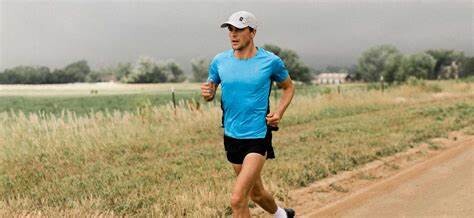
Klecker owns personal bests of 12:54.99 for 5000m and 27:07.57 for 10,000m. In his lone outdoor track race of 2024, he ran 27:09.29 at Sound Running’s The Ten in March and missed the Olympic qualifying standard of 27:00.00.
His training style and genes (his mother Janis competed at the 1992 Summer Olympics in the marathon and won two U.S. marathon national championships in her career; and his father Barney previously held the U.S. 50-mile ultramarathon record) have always linked Klecker to great marathoning potential. For this year’s TCS New York City Marathon, the New York Road Runners had Klecker riding in the men’s lead truck so he could get a front-row glimpse at the race and the course, if he chooses to make his debut there or race in the near future.
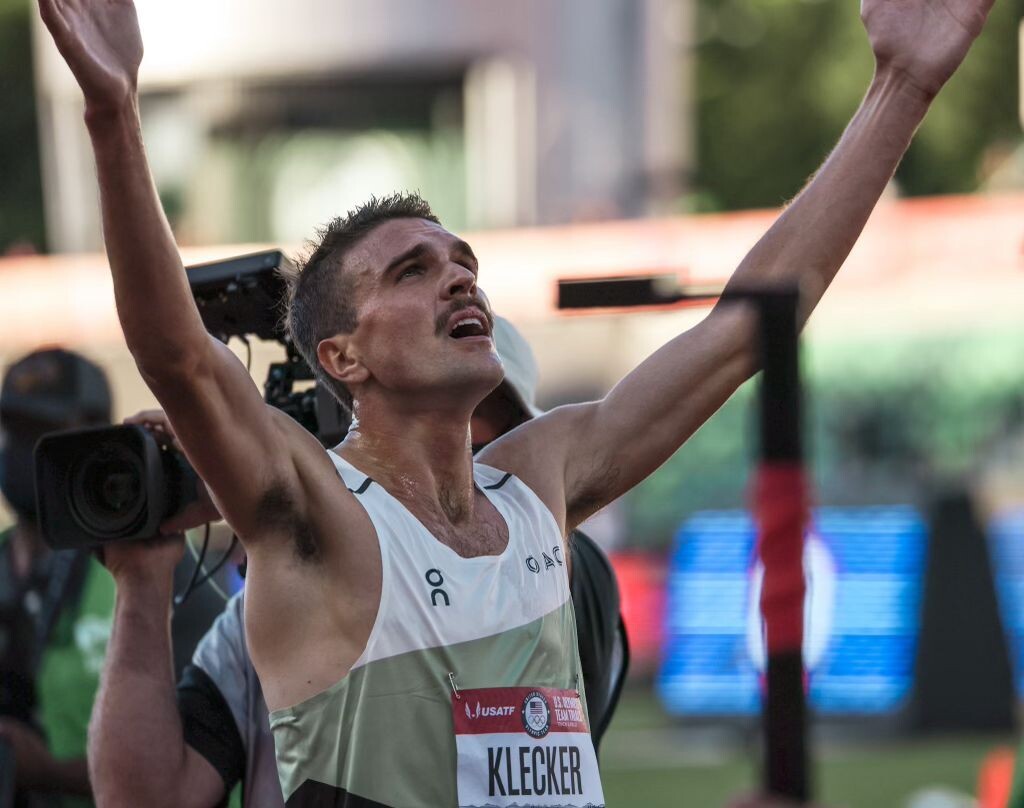
The Comeback From Injury
In late May, Klecker announced he would not be able to run at the U.S. Olympic Track and Field Trials in June due to his recovery from a torn adductor earlier in the season, which ended his hopes of qualifying for a second U.S. Olympic team. He spent much of April cross training and running on the Boost microgravity treadmill at a lower percentage of his body weight.
“The process of coming back has been so smooth,” Klecker says. “A lot of that is just because it’s been all at the pace of my health. I haven’t been thinking like, ‘Oh I need to be at this level of fitness in two weeks to be on track for my goals.’ If my body is ready to go, we’re going to keep progressing. If it’s not ready to go, we’re going to pull back a little bit. That approach is what helped me get through this injury.”
One More Track Season
Klecker is not fully prepared to bid adieu to the track. He plans to chase the qualifying standard for the 10,000 meters and attempt to qualify for the 2025 World Championships in Tokyo. In 2022, after World Athletics announced Tokyo as the 2025 host city, he told coach Dathan Ritzenhein that he wanted the opportunity to race at Japan National Stadium with full crowds.
“I’m so happy with what I’ve done on the track that if I can make one more team, I’ll be so happy,” Klecker says. “Doing four more years of this training, I don’t know if I can stay healthy to be at the level I want to be. One more team on the track would just be like a dream.”
Klecker is also considering doubling up with global championships and could look to qualify for the 2025 World Road Running Championships, which will be held Sept. 26th to 28th in San Diego. To make the team, Klecker would have to race at the Atlanta Half Marathon on Sunday, March 2nd, which also serves as the U.S. Half Marathon Championships. The top three men and women will qualify for Worlds. One spot on Team USA will be offered via World Ranking.
Sound Running’s The Ten, one of the few fast opportunities to chase the 10,000m qualifying standard on the track, will be held on March 29th in San Juan Capistrano.
Thoughts on Ryan Hall’s American Record
The American record in the half marathon remains Ryan Hall’s 59:43 set in Houston on Jan. 14th, 2007. Two-time Olympic medalist Galen Rupp (59:47 at the 2018 Prague Half) and two-time U.S. Olympian Leonard Korir (59:52 at the 2017 New Dehli Half) are the only other Americans to break 60 minutes.
In the last three years, only Biya Simbassa (60:37 at the 2022 Valencia Half), Kirubel Erassa (60:44 at the 2022 Houston Half), Diego Estrada (60:49 at the 2024 Houston Half) and Conner Mantz (60:55 at the 2021 USATF Half Marathon Championships) have even dipped under 61 minutes.
On a global scale, Nineteen of the top 20 times half marathon performances in history have come since the pandemic. They have all been run by athletes from Kenyan, Uganda, and Ethiopia, who have gone to races in Valencia (Spain), Lisbon (Portugal), Ras Al Khaimah (UAE), or Copenhagen (Denmark), and the top Americans tend to pass on those races due to a lack of appearance fees or a stronger focus on domestic fall marathons.
Houston in January may be the fastest opportunity for a half marathon outside of the track season, which can run from March to September for 10,000m specialists.
“I think the record has stood for so long because it is such a fast record but we’re seeing these times drop like crazy,” Klecker says. “I think it’s a matter of time before it goes. Dathan (Ritzenhein) has run 60:00 so he has a pretty good barometer of what it takes to be in that fitness. Listening to him has been really good to let me know if that’s a realistic possibility and I think it is. That’s a goal of mine. I’m not there right now but I’m not racing a half marathon until the new year. I think we can get there to attempt it. A lot has to go right to get a record like that but just the idea of going for it is so motivating in training.”
His teammate, training partner, and Olympic marathon bronze medalist Hellen Obiri has full confidence in Klecker’s potential.
“He has been so amazing for training,” Obiri said in the days leading up to her runner-up finish at the New York City Marathon. “I think he can do the American record.”
by Chris Chavez
Login to leave a comment
Aramco Houston Half Marathon
The Chevron Houston Marathon provides runners with a one-of-a-kind experience in the vibrant and dynamic setting of America's fourth-largest city. Renowned for its fast, flat, and scenic single-loop course, the race has earned accolades as the "fastest winter marathon" and the "second fastest marathon overall," according to the Ultimate Guide to Marathons. It’s a perfect opportunity for both elite athletes...
more...U.S. Olympic Marathoners Will Race the Bolder Boulder 10K as a Pre-Paris Tune-Up
Conner Mantz, Clayton Young, and Leonard Korir will run in the International Pro Team Challenge on May 27.
Memorial Day is always an exceptional celebration for runners in Boulder, Colorado, but this year, it will have some extra special Olympic flair.
On Monday, May 27, more than 40,000 runners will run through the city that’s known for the iconic Flatirons rock formations, the Pearl Street pedestrian mall, and an exceptionally active population in the annual Bolder Boulder 10K. Now in its 44th year, it’s been one of the top road running races in the U.S. since its inception, and this year will serve as one of the final tune-ups for the men’s U.S. Olympic marathon squad before racing in the Paris Olympics later this summer.
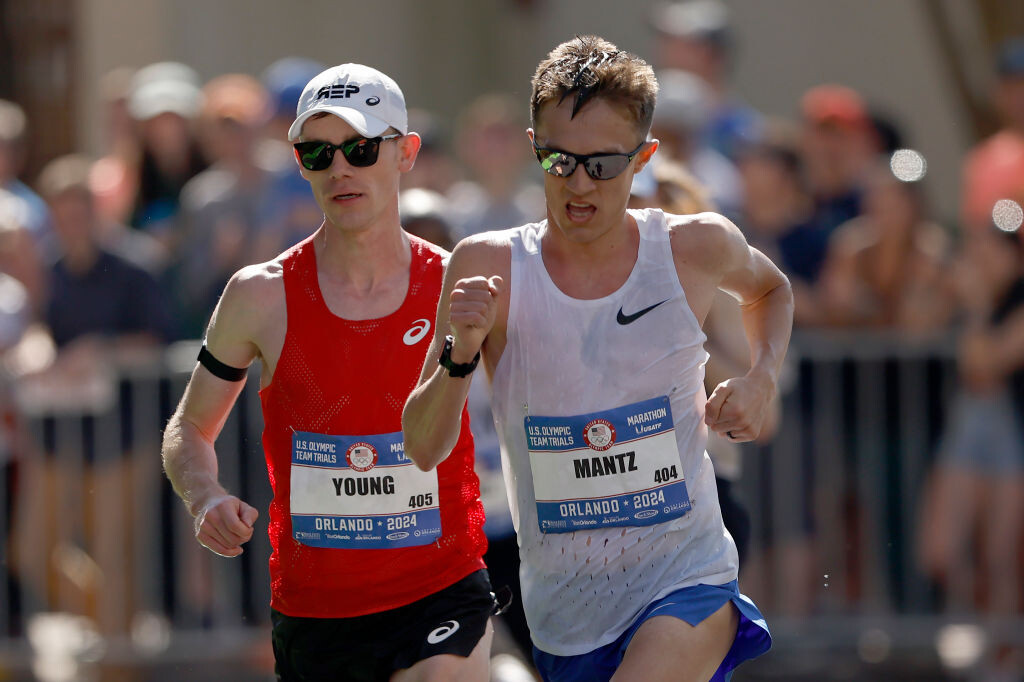
Conner Mantz, Clayton Young, and Leonard Korir, the top three finishers in the 2024 U.S. Olympic Trials who will be racing the marathon in the Paris Olympics on August 10, will be competing as Team USA Red in the Bolder Boulder’s International Pro Team Challenge that follows the citizen’s races. (Korir is expected to officially be named to the U.S. team in early May based on final pre-Olympic international rankings.)
The pro race, which has a prize purse of $83,700 before potential bonuses, is one of the things that makes the Bolder Boulder so unique. After all the runners in 98 citizen waves have completed the race, professional men’s and women’s international teams from more than a dozen countries compete on the same course for team and individual titles. The races feature a staggered start, with women beginning 15 minutes before the men so the winners of each race will finish about 10 minutes apart inside the University of Colorado’s Folsom Field football stadium.
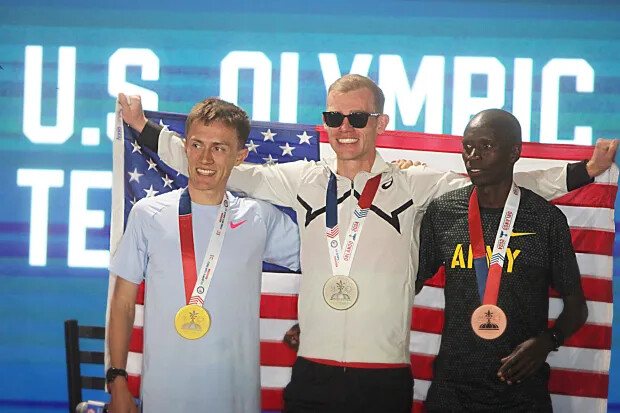
The finishing moments are among the thrilling spectacles in American running. By that point, the stadium is filled with a near-capacity crowd of roaring runners, family, and friends who have been watching the action play out on the massive video screens.
“The finish in the full stadium is like nothing else in the sport,” says Mantz, 27, who won the men’s race last year in 29:08 with a thrilling late-race surge to pass Kenya’s Alex Masai in the final 200 meters before the finish. “It was pretty electric. It took away all the pain you’re feeling mid-race. I was like, ‘Just race as hard as you can.’”
Team USA Red will have plenty of competition, from Team USA White, the secondary American team of Jared Ward, Futsum Zienasellassie, and Sam Chelanga, as well as teams from Kenya, Ethiopia, Mexico, and Rwanda. Teams are scored like a cross country race, with points awarded on the basis of finishing place, which means the team with the lowest combined score for all three runners is the winner. Ties are decided by the positions of the third-place finishers.
The women’s Team USA Red team will be led by defending champion Emily Durgin, along with Sara Hall and Boulder native Nell Rojas. Durgin finished ninth at the U.S. Olympic Trials in February and won the USATF 10 Mile Championships on April 7 in Washington D.C. At last year’s Bolder Boulder, she stormed to victory in 33:24, winning by 24 seconds over Kenya’s Daisy Kimeli.
Hall placed fifth in the U.S. Olympic Trials Marathon on February 3 in a U.S. master’s record (2:26:06) and 15th in the Boston Marathon on April 15. The women’s Team USA White roster will be composed of an all-University of Colorado alumnae squad—Makena Morley, Sara Vaughn, and Carrie Verdon.
“I can’t wait to be back in Boulder for the best day of the year,” says Durgin, 29, who will compete in the U.S. Olympic Trials 10,000 meters on the track in late June with the hopes of making the U.S. Olympic team. “Competing with Nell and Sara will make the experience even better.”
The women’s U.S. Olympic marathon team of Fionna O’Keefe, Emily Sisson, and Dakotah Lindwurm were invited to race in the Bolder Boulder but each runner declined, citing scheduling timing conflicts or a disinterest in racing at Boulder’s lofty altitude (5,430 feet). All of the runners who are racing for the U.S. teams in Boulder live at 4,500 feet or higher.
An Olympic Legacy
Boulder is known as one of the top running meccas in the U.S., in part because elite-level American and international runners have made it their training base since Olympic gold medalist Frank Shorter arrived in the early 1970s. Emma Coburn, Jenny Simpson, Yared Nuguse, Joe Klecker, Jake Riley, Hellen Obiri, and Edna Kiplagat are among the many top-level runners who are currently training in Boulder. Shorter, the 1972 marathon gold medalist, was a co-founder of Bolder Boulder 10K in 1979, and helped it grow into one of the country’s largest races.
Since then, numerous U.S. Olympians have raced in the Bolder Boulder, including Deena Kastor (a three-time women’s champion), Aliphine Tuliamuk (the 2022 women’s winner), Alan Culpepper, Elva Dyer, Ryan Hall, Abdi Abdirahman, Jorge Torres, Shalane Flanagan, Amy Cragg, Magdalena Boulet, and Libby Hickman, as well as Korir (who won it in 2022), and Ward (who was fourth in 2022).
Thanks to Boulder’s robust running community and the prestige of the race, the Bolder Boulder has also always featured fast sub-elite runners competing in the early citizen waves. Yet, the race has also celebrated dedicated middle-of-the-pack runners, as well as the first-time runners and walkers in the later waves. It was one of the first races to have bands playing along the course (as well as belly dancers and other entertainers), runners dressed up in costumes, elite wheelchair races, and in recent years, it has been known for a mid-race slip-and-slide and unofficial bacon aid station.
For the past 25 years, the Bolder Boulder has organized a special Memorial Day tribute—one of the largest in the country—that honors military veterans and new cadets.
The U.S. men’s Olympic marathon team competing in this year’s Bolder Boulder will be a legacy moment for the race, says Bolder Boulder race director Cliff Bosley.
“Having the three men that will represent our country in the marathon at this summer’s Paris Olympic Games is something we are extremely proud of,” Bosley says. “All three ran here last year, and to have them back is just incredible for the race, the city of Boulder, and the sport of running.”
by Brian Metzler
Login to leave a comment
The TEN Preview: Nico Young Debuts, Alicia Monson Chases AR, and Karissa Schweizer Returns
Saturday night’s races at The TEN in San Juan Capistrano, Calif., will play a significant role in determining who gets to represent the United States in the 10,000 meters at this summer’s Olympics in Paris. The 2024 Olympic auto standards are incredibly tough — only three Americans have ever run under the 27:00.00 men’s standard and only five Americans have hit the 30:40.00 women’s standard — and you can count the number of world-class track 10,000-meter races each year on one hand. That’s why Grant Fisher, Nico Young, Woody Kincaid, Joe Klecker, Abdihamid Nur, Alicia Monson, Karissa Schweizer, Emily Infeld, Weini Kelati, and many more will be heading to SoCal Saturday night.
Since its first edition in 2021, The TEN has become the place for Americans to run a fast 10,000. Fisher set the men’s American record here in 2022 while Monson set the women’s American record here in 2023 and will be looking to repeat the feat in 2024.
To watch the main events, you’ll have to stay up late — the top heat of the women’s 10,000 does not start until 11:58 p.m. ET with the men to follow at 12:35 a.m. ET. Before then, we’ll get appetizer with the men’s 1500 (10:05 p.m. ET), which features Olympic medalists Matthew Centrowitz and Evan Jager kicking off their 2024 seasons.
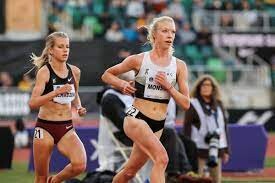
Matthew Centrowitz and Evan Jager have seen it all in running. They both graduated from high school in 2007 and made their first US teams as young guns — Jager as a 20-year-old in 2009, Centro at 21 in 2011. For much of the 2010s, they were among the very best in the world in their events, with Centro bringing home a gold medal from the 2016 Olympics and Jager a silver. Now Centro (34) and Jager (35) are the elder statesmen, trying to fend off a host of younger rivals and make one last Olympic team in Paris.
Both men will run their 2024 outdoor openers in the 1500 on Saturday (Centro did run a 3:59 indoor mile on January 27 while Jager ran the first 4k of a 5k in Boston on February 16 before dropping out). Which means it’s time for one of our favorite games: how fast (or slow) will Centro run?

Throughout his career, Centrowitz has established himself as one of America’s greatest ever milers by delivering when it counts. He made every US team from 2011 through 2021 and won three outdoor medals as well as the 2016 World Indoor title. Yet in the latter years of his career, Centro thrown out some stinkers to begin his seasons before working his way into shape. In 2021, he opened with a 3:40 1500 on March 6 followed by a 1:50 800 on April 10 but ended the year running a 3:49 mile and making the Olympic team. Last year, he went to Australia and ran 1:56 for 800 on February 11 and 4:06 for the mile on February 23 but was running 3:36 for 1500 by May and eventually made the US final (though he only finished 10th).
So if Centro runs poorly here, it’s not cause for total panic. Heck, the fact that both he and Jager — who missed most of the 2023 campaign with a foot injury — are healthy enough to be racing is a promising sign. But the American 1500 scene is also more competitive than when Centro last made a team in 2021. Tactically, there is no better US racer than Centro, but he’s up against a group of young studs that includes three medalists from this year’s World Indoors (Yared Nuguse, Cole Hocker, Hobbs Kessler) and a trio of NCAA champions from the University of Washington (Luke Houser, Joe Waskom, Nathan Green). Nuguse is the oldest of that group at 24 — a full decade younger than Centro. Centrowitz is facing an uphill battle to make Olympic team #4 but if he can run 3:36 or 3:37 here and stay healthy for the next three months, he could still have a shot.
As far as the man most likely to win here, Sweden’s Samuel Pihlström ran 3:35 in February and just finished 8th at World Indoors.
Women’s 10,000 (11:58 p.m. ET): Alicia Monson tries to become the first US woman under 30:00 as Karissa Schweizer returns.
Unlike almost every other athlete in this meet, Alicia Monson already has the Olympic standard thanks to the 30:03 American record she ran here last year. So why is she back for another crack?
Monson laid it all out in an interview with LetsRun.com back in December:
Basically, it was just what can we do that would make me feel the most ready for the Olympics? And I feel like that’s running a sub-30:00 10k. I guess the plan would be to break the American record again, but really it’s how fast can I run to feel the most prepared? Because obviously I’m running against people who can run very fast and [I need to] be prepared to run at a pace that feels easy to them and then kick off of it.
Monson was still with the leaders at the bell at last year’s World Championships and her 5th-place finish was the best of her career in a global final. But she finished nearly four seconds out of the medals and the competition will be fierce in Paris. The last three global 10k champions — Sifan Hassan (29:06 pb), Letesenbet Gidey (29:01 pb), and Gudaf Tsegay (29:29 pb) — occupy three of the top four spots on the all-time 10,000m list. The slowest of them, Tsegay, still has a pb 34 seconds faster than Monson’s.
by Jonathan Gault
Login to leave a comment
The Ten
The world's fastest 10,000m races each year have taken place in a sleepy little coastal town in southern California. More national records were broken in 2022 than any other race on the planet as the best in the western hemisphere launched into rarified zones of time and space. The best return to San Juan Capistrano this year to cap off...
more...The Pill That Over Half the Distance Medallists Used at the 2023 Worlds
What's the deal with sodium bicarbonate?What if there was a pill, new to the market this year, that was used by more than half of the distance medalists at the 2023 World Athletics Championships? A supplement so in-demand that there was a reported black market for it in Budapest, runners buying from other runners who did not advance past the preliminary round — even though the main ingredient can be found in any kitchen?
How did this pill become so popular? Well, there are rumors that Jakob Ingebrigtsen has been taking it for years — rumors that Ingebrigtsen’s camp and the manufacturers of the pill will neither confirm nor deny.
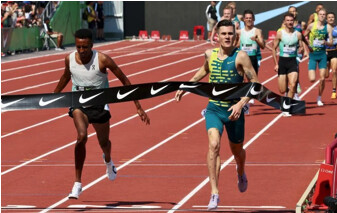

So about this pill…does it work? Does it actually boost athletic performance? Ask a sports scientist, someone who’s studied it for more than a decade, and they’ll tell you yes.
“There’s probably four or five legal, natural supplements, if you will, that seem to have withstood the test of time in terms of the research literature and [this pill] is one of those,” says Jason Siegler, Director of Human Performance in the College of Health Solutions at Arizona State University.
But there’s a drawback to this pill. It could…well, let’s allow Luis Grijalva, who used it before finishing 4th in the World Championship 5,000m final in Budapest, to explain.
“I heard stories if you do it wrong, you chew it, you kind of shit your brains out,” Grijalva says. “And I was a little bit scared.”
The research supports that, too.
“[Gastrointestinal distress] has by far and away been the biggest hurdle for this supplement,” Siegler says.Okay, enough with the faux intrigue. If you’ve read the subtitle of this article, you know the pill we are talking about is sodium bicarbonate. Specifically, the Maurten Bicarb System, which has been available to the public since February and which has been used by some of the top teams in endurance sports: cycling juggernaut Team Jumbo-Visma and, in running, the On Athletics Club and NN Running Team. (Maurten has sponsorship or partnership agreements with all three).Some of the planet’s fastest runners have used the Maurten Bicarb System in 2023, including 10,000m world champion Joshua Cheptegei, 800m silver medalist Keely Hodgkinson, and 800m silver medalist Emmanuel Wanyonyi. Faith Kipyegon used it before winning the gold medal in the 1500m final in Budapest — but did not use it before her win in the 5,000m final or before any of her world records in the 1500m, mile, and 5,000m.
Herman Reuterswärd, Maurten’s head of communications, declined to share a full client list with LetsRun but claims two-thirds of all medalists from the 800 through 10,000 meters (excluding the steeplechase) used the product at the 2023 Worlds.
After years of trial and error, Maurten believes it has solved the GI issue, but those who have used their product have reported other side effects. Neil Gourley used sodium bicarbonate before almost every race in 2023, and while he had a great season — British champion, personal bests in the 1500 and mile — his head ached after races in a way it never had before. When Joe Klecker tried it at The TEN in March, he felt nauseous and light-headed — but still ran a personal best of 27:07.57. In an episode of the Coffee Club podcast, Klecker’s OAC teammate George Beamish, who finished 5th at Worlds in the steeplechase and used the product in a few races this year, said he felt delusional, dehydrated, and spent after using it before a workout this summer.
“It was the worst I’d felt in a workout [all] year, easily,” Beamish said.
Not every athlete who has used the Maurten Bicarb System has felt side effects. But the sport as a whole is still figuring out what to do about sodium bicarbonate.
Many athletes — even those who don’t have sponsorship arrangements with Maurten — have added it to their routines. But Jumbo-Visma’s top cyclist, Jonas Vingegaard — winner of the last two Tours de France — does not use it. Neither does OAC’s top runner, Yared Nuguse, who tried it a few times in practice but did not use it before any of his four American record races in 2023.“I’m very low-maintenance and I think my body’s the same,” Nuguse says. “So when I tried to do that, it was kind of like, Whoa, what is this? My whole body felt weird and I was just like, I either did this wrong or this is not for me.”
How sodium bicarbonate works
The idea that sodium bicarbonate — aka baking soda, the same stuff that goes in muffins and keeps your refrigerator fresh — can boost athletic performance has been around for decades.
“When you’re exercising, when you’re contracting muscle at a really high intensity or a high rate, you end up using your anaerobic energy sources and those non-oxygen pathways,” says Siegler, who has been part of more than 15 studies on sodium bicarbonate use in sport. “And those pathways, some of the byproducts that they produce, one of them is a proton – a little hydrogen ion. And that proton can cause all sorts of problems in the muscle. You can equate that to that sort of burn that you feel going at high rates. That burn, most of that — not directly, but indirectly — is coming from the accumulation of these little hydrogen ions.”
As this is happening, the kidneys produce bicarbonate as a defense mechanism. For a while, bicarbonate acts as a buffer, countering the negative effects of the hydrogen ions. But eventually, the hydrogen ions win.The typical concentration of bicarbonate in most people hovers around 25 millimoles per liter. By taking sodium bicarbonate in the proper dosage before exercise, Siegler says, you can raise that level to around 30-32 millimoles per liter.
“You basically have a more solid first line of defense,” Siegler says. “The theory is you can go a little bit longer and tolerate the hydrogen ions coming out of the cell a little bit longer before they cause any sort of disruption.”
Like creatine and caffeine, Siegler says the scientific literature is clear when it comes to sodium bicarbonate: it boosts performance, specifically during events that involve short bursts of anaerobic activity. But there’s a catch.
***
Bicarb without the cramping
Sodium bicarbonate has never been hard to find. Anyone can swallow a spoonful or two of baking soda with some water, though it’s not the most appetizing pre-workout snack. The problem comes when the stomach tries to absorb a large amount of sodium bicarbonate at once.
“You have a huge charged load in your stomach that the acidity in your stomach has to deal with and you have a big shift in the partial pressure of carbon dioxide across the gut,” Siegler says. “And that’s what gives you the cramping.”
A few years ago, Maurten was trying to solve a similar problem for marathoners trying to ingest large amounts of carbohydrates during races. The result was their carbohydrate drink, which relies on something called a hydrogel to form in the stomach. The hydrogel resists the acidity of the stomach and allows the carbohydrates to be absorbed in the intestine instead, where there is less cramping.
“We thought, okay, we are able to solve that one,” Reuterswärd says. “Could we apply the hydrogel technology to something else that is really risky to consume that could be beneficial?”
For almost four years, Maurten researched the effects of encapsulating sodium bicarbonate in hydrogels in its Swedish lab, conducting tests on middle-distance runners in Gothenburg. Hydrogels seemed to minimize the risk, but the best results came when hydrogels were paired with microtablets of sodium bicarbonate.
The result was the Maurten Bicarb System — “system,” because the process for ingesting it involves a few steps. Each box contains three components: a packet of hydrogel powder, a packet of tiny sodium bicarbonate tablets, and a mixing bowl. Mix the powder with water, let it stand for a few minutes, and sprinkle in the bicarb.The resulting mixture is a bit odd. It’s gooey. It’s gray. It doesn’t really taste like anything. It’s not quite liquid, not quite solid — a yogurt-like substance flooded with tiny tablets that you eat with a spoon but swallow like a drink.
The “swallow” part is important. Chew the tablets and the sodium bicarbonate will be absorbed before the hydrogels can do their job. Which means a trip to the toilet may not be far behind.
When Maurten launched its Bicarb System to the public in February 2023, it did not have high expectations for sales in year one.
“It’s a niche product,” Reuterswärd says. “From what we know right now, it maybe doesn’t make too much sense if you’re an amateur, if you’re just doing 5k parkruns.”
But in March, Maurten’s product began making headlines in cycling when it emerged that it was being used by Team Jumbo-Visma, including by stars Wout van Aert and Primož Roglič. Sales exploded. Because bicarb dosage varies with bodyweight, Maurten’s system come in four “sizes.” And one size was selling particularly well.
“If you’re an endurance athlete, you’re around 60-70 kg (132-154 lbs),” Reuterswärd says. “We had a shortage with the size that corresponded with that weight…The first couple weeks, it was basically only professional cyclists buying all the time, massive amounts. And now we’re seeing a similar development in track & field.”
If there was a “Jumbo-Visma” effect in cycling, then this summer there was a “Jakob Ingebrigtsen” effect in running.To be clear: there is no official confirmation that Ingebrigtsen uses sodium bicarbonate. His agent, Daniel Wessfeldt, did not respond to multiple emails for this story. When I ask Reuterswärd if Ingebrigtsen has used Maurten’s product, he grows uncomfortable.
“I would love to be very clear here but I will have to get back to you,” Reuterswärd says (ultimately, he was not able to provide further clarification).
But when Maurten pitches coaches and athletes on its product, they have used data from the past two years on a “really good” 1500 guy to tout its effectiveness, displaying the lactate levels the athlete was able to achieve in practice with and without the use of the Maurten Bicarb System. That athlete is widely believed to be Ingebrigtsen. Just as Ingebrigtsen’s success with double threshold has spawned imitators across the globe, so too has his rumored use of sodium bicarbonate.
Grijalva says he started experimenting with sodium bicarbonate “because everybody’s doing it.” And everybody’s doing it because of Ingebrigtsen.
“[Ingebrigtsen] was probably ahead of everybody at the time,” Grijalva said. “Same with his training and same with the bicarb.”
OAC coach Dathan Ritzenhein took sodium bicarbonate once before a workout early in his own professional career, and still has bad memories of swallowing enormous capsules that made him feel sick. Still, he was willing to give it a try with his athletes this year after Maurten explained the steps they had taken to reduce GI distress.
“Certainly listening to the potential for less side effects was the reason we considered trying it,” says Ritzenhein. “I don’t know who is a diehard user and thinks that it’s really helpful, but around the circuit I know a lot of people that have said they’ve [tried] it.”
Coach/agent Stephen Haas says a number of his athletes, including Gourley, 3:56 1500 woman Katie Snowden, and Worlds steeple qualifier Isaac Updike, tried bicarb this year. In the men’s 1500, Haas adds, “most of the top guys are already using it.”
Yet 1500-meter world champion Josh Kerr was not among them. Kerr’s nutritionist mentioned the idea of sodium bicarbonate to him this summer but Kerr chose to table any discussions until after the season. He says he did not like the idea of trying it as a “quick fix” in the middle of the year.
“I review everything at the end of the season and see where I could get better,” Kerr writes in a text to LetsRun. “As long as the supplement is above board, got all the stamps of approvals needed from WADA and the research is there, I have nothing against it but I don’t like changing things midseason.”
***
So does it actually work?
Siegler is convinced sodium bicarbonate can benefit athletic performance if the GI issues can be solved. Originally, those benefits seemed confined to shorter events in the 2-to 5-minute range where an athlete is pushing anaerobic capacity. Buffering protons does no good to short sprinters, who use a different energy system during races.
“A 100-meter runner is going to use a system that’s referred to the phosphagen or creatine phosphate system, this immediate energy source,” Siegler says. “…It’s not the same sort of biochemical reaction that eventuates into this big proton or big acidic load. It’s too quick.”
But, Siegler says, sodium bicarbonate could potentially help athletes in longer events — perhaps a hilly marathon.
“When there’s short bursts of high-intensity activity, like a breakaway or a hill climb, what we do know now is when you take sodium bicarbonate…it will sit in your system for a number of hours,” Siegler says. “So it’s there [if] you need it, that’s kind of the premise behind it basically. If you don’t use it, it’s fine, it’s not detrimental. Eventually your kidneys clear it out.”Even Reuterswärd admits that it’s still unclear how much sodium bicarbonate helps in a marathon — “honestly, no one knows” — but it is starting to be used there as well. Kenya’s Kelvin Kiptum used it when he set the world record of 2:00:35at last month’s Chicago Marathon; American Molly Seidel also used it in Chicago, where she ran a personal best of 2:23:07.
Siegler says it is encouraging that Maurten has tried to solve the GI problem and that any success they experience could spur other companies to research an even more effective delivery system (currently the main alternative is Amp Human’s PR Lotion, a sodium bicarbonate cream that is rubbed into the skin). But he is waiting for more data before rendering a final verdict on the Maurten Bicarb System.
“I haven’t seen any peer-reviewed papers yet come out so a bit I’m hesitant to be definitive about it,” Siegler said.
Trent Stellingwerff, an exercise physiologist and running coach at the Canadian Sport Institute – Pacific, worked with Siegler on a 2020 paper studying the effect of sodium bicarbonate on elite rowers. A number of athletes have asked him about the the Maurten Bicarb System, and some of his marathoners have used the product. Like Siegler, he wants to see more data before reaching a conclusion.
“I always follow the evidence and science, and to my knowledge, as of yet, I’m unaware of any publications using the Maurten bicarb in a double-blind, placebo-controlled clinical trial,” Stellingwerff writes in a text to LetsRun. “So without any published data on the bicarb version, I can’t really say it does much.”
The closest thing out there right now is a British study conducted by Lewis Goughof Birmingham City University and Andy Sparks of Edge Hill University. In a test of 10 well-trained cyclists, Gough and Sparks found the Maurten Bicarb System limited GI distress and had the potential to improve exercise performance. Reuterswärd says the study, which was funded by Maurten, is currently in the review process while Gough and Sparks suggested further research to investigate their findings.
What about the runners who used sodium bicarbonate in 2023?
Klecker decided to give bicarb a shot after Maurten made a presentation to the OAC team in Boulder earlier this year. He has run well using bicarb (his 10,000 pb at The TEN) and without it (his 5,000 pb in January) and as Klecker heads into an Olympic year, he is still deciding whether the supposed benefits are worth the drawbacks, which for him include nausea and thirst. He also says that when he has taken the bicarb, his muscles feel a bit more numb than usual, which has made it more challenging for him to gauge his effort in races.
“There’s been no, Oh man I felt just so amazing today because of this bicarb,” Klecker says. “If anything, it’s been like, Oh I didn’t take it and I felt a bit more like myself.”
Klecker also notes that his wife and OAC teammate, Sage Hurta-Klecker, ran her 800m season’s best of 1:58.09 at the Silesia Diamond League on July 16 — the first race of the season in which she did not use bicarb beforehand.
A number of athletes in Mike Smith‘s Flagstaff-based training group also used bicarb this year, including Grijalva and US 5,000 champion Abdihamid Nur. Grijalva did not use bicarb in his outdoor season opener in Florence on June 2, when he ran his personal best of 12:52.97 to finish 3rd. He did use it before the Zurich Diamond League on August 31, when he ran 12:55.88 to finish 4th.“I want to say it helps, but at the same time, I don’t want to rely on it,” Grijalva says.
Almost every OAC athlete tried sodium bicarbonate at some point in 2023. Ritzenhein says the results were mixed. Some of his runners have run well while using it, but the team’s top performer, Nuguse, never used it in a race. Ritzenhein wants to continue testing sodium bicarbonate with his athletes to determine how each of them responds individually and whether it’s worth using moving forward.
That group includes Alicia Monson, who experimented with bicarb in 2023 but did not use it before her American records at 5,000 and 10,000 meters or her 5th-place finish in the 10,000 at Worlds.
“It’s not the thing that’s going to make or break an athlete,” Ritzenhein says. “…It’s a legal supplement that has the potential, at least, to help but it doesn’t seem to be universal. So I think there’s a lot more research that needs to be done into it and who benefits from it.”
The kind of research scientists like Stellingwerff want to see — double-blind, controlled clinical trials — could take a while to trickle in. But now that anyone can order Maurten’s product (it’s not cheap — $65 for four servings), athletes will get to decide for themselves whether sodium bicarbonate is worth pursuing.
“The athlete community, obviously if they feel there’s any sort of risk, they’re weighing up the risk-to-benefit ratio,” Siegler said. “The return has got to be good.”
Grijalva expects sodium bicarbonate will become part of his pre-race routine next year, along with a shower and a cup of coffee. Coffee, and the caffeine contained wherein, may offer a glimpse at the future of bicarb. Caffeine has been widely used by athletes for longer than sodium bicarbonate, and the verdict is in on that one: it works. Yet plenty of the greats choose not to use it.
Nuguse is among them. He does not drink coffee — a fact he is constantly reminded of by Ritzenhein.
“I make jokes almost every day about it,” Ritzenhein says. “His family is Ethiopian – coffee tradition and ceremony is really important to them.”
Ritzenhein says he would love it if Nuguse drank a cup of coffee sometime, but he’s not going to force it on him. Some athletes, Ritzenhein says, have a tendency to become neurotic about these sorts of things. That’s how Ritzenhein was as an athlete. It’s certainly how Ritzenhein’s former coach at the Nike Oregon Project, Alberto Salazar, was — an approach that ultimately earned Salazar a four-year ban from USADA.
Ritzenhein says he has no worries when it comes to any of his athletes using sodium bicarbonate — Maurten’s product is batch-tested and unlike L-carnitine, there is no specific protocol that must be adhered to in order for athletes to use it legally under the WADA Code. Still, there is something to be said for keeping things simple.
“Yared knows how his body feels,” Ritzenhein says. “…He literally rolls out of practice and comes to practice like a high schooler with a Eggo waffle in hand. Probably more athletes could use that kind of [approach].”
Talk about this article on our world-famous fan forum / messageboard.
by Let’s Run
Login to leave a comment
Beatrice Chepkoech to open her indoor track season against two Ethiopian youngsters
Beatrice Chepkoech will be pitted against two Ethiopian youngsters in the women's 1500m at the ORLEN Copernicus Cup, a World Athletics Indoor Tour Gold meeting.
Ethiopian youngsters Diribe Welteji, and Freweyni Hailu will be up against Beatrice Chepkoech in the women’s 1500m field at the ORLEN Copernicus Cup, a World Athletics Indoor Tour Gold meeting, in Torun, Poland, on February 6.

21-year-old Welteji set a world record when winning the mile at the World Athletics Road Running Championships in Riga in October, as she clocked 4:20.98 as her compatriot Hailu finished second with Faith Kipyegon completing the podium.
Welteji and Hailu will team up again in Torun where they will be up against the world 3000m steeplechase record-holder Chepkoech. Other strong opponents in the field include Ethiopia’s world indoor 1500m bronze medallist Hirut Meshesha and Uganda’s 2019 world 800m champion Halimah Nakaayi.
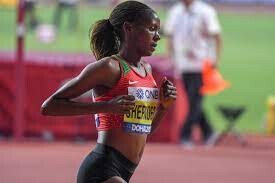
Welteji has proven to be a master in the 1500m and she also doubles up as the World 1500m silver medallist, having finished runner-up to Kipyegon in Budapest in August. She will surely be the one to watch when the race begins.
Meshesha has the quickest short track PB of the quintet, having clocked 4:02.01 in Lievin last year, finishing second and one place ahead of Hailu who set a PB of 4:02.47. Chepkoech ran her national record of 4:02.09 in 2020.
Meanwhile, multiple US record-holder Grant Fisher will take on the already announced world champion Josh Kerr in the two-mile race at the Millrose Games, also a World Athletics Indoor Tour Gold event.
The race on February 11 is set to be paced with the world indoor two-mile best of 8:03.40 as the target. Joining them on the start line will be USA’s Joe Klecker, Cooper Teare, and Dylan Jacobs. New Zealand’s George Beamish, Australia’s Morgan McDonald, and Ky Robinson will also be in the mix and will be joined by Britain’s Matthew Stonier, Japan’s Keita Satoh, Ethiopia’s Samuel Firewu and Addisu Yihune, and Sam Parsons of Germany.
by Abigael Wuafula
Beatrice Chepkoech
Login to leave a comment
2023 US Outdoor Track and Field Championships preview from Chris Chavez
Last night was the deadline for athletes to declare their event for the 2023 U.S. Outdoor Track and Field Championships, which will take place in Eugene from July 6-9. At USAs, athletes are allowed to enter multiple events and then make a decision about which event(s) they wish to contest once entries are in, which allows those who’ve achieved multiple qualifiers to be strategic about where they want to concentrate their efforts. The top three in each event who meet the qualifying standards for the World Athletics Championships will go on to represent the United States in Budapest in August.
Reigning World champions have a “bye” to the next year’s Worlds, which means the country they represent gets to send four athletes, not three. Similarly, reigning Diamond League and World Athletics Continental Tour champs earn a bye, but if there is both a World and other champion in the same event, their country still only gets to send one extra athlete.
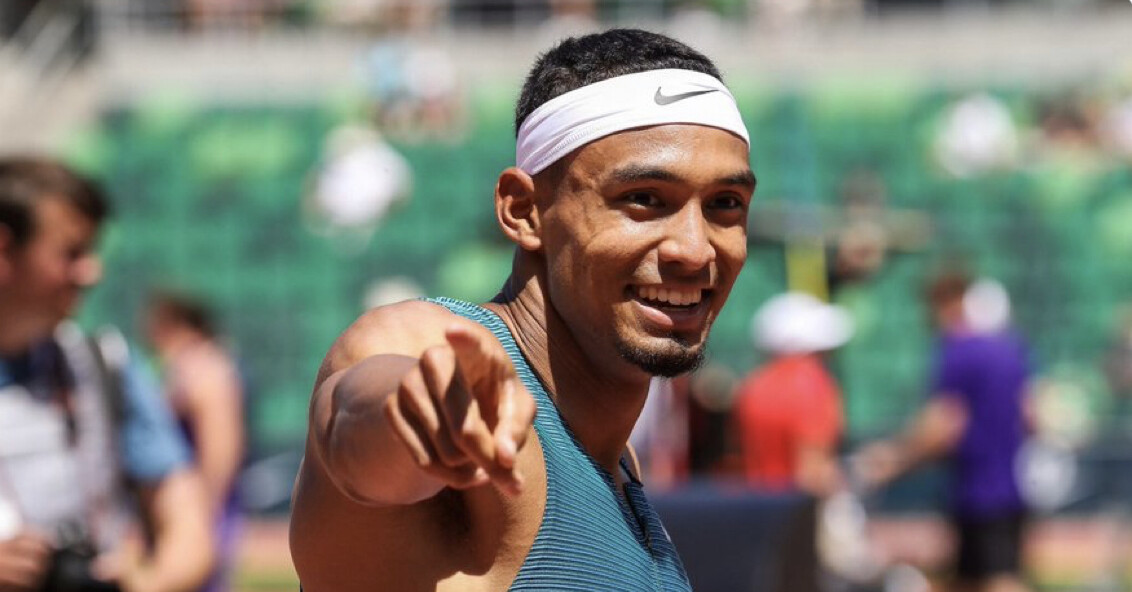
These complex rules lead many American World champions to make interesting choices about what events they wish to contest at USAs and how hard they want to push while still in the middle of the championship season.
MEN’S SPRINTS
– 100m world champion Fred Kerley has the bye to the world championships and will only run the 200m. Last year, he qualified for the World Championships in the 200m with a third place finish behind Noah Lyles and Erriyon Knighton. He injured his quad in the semifinal of the 200m and was unable to run the 4x100m relay for Team USA. Kerley has a season’s best of 19.92 from his win at the Doha Diamond League.
– 200m world champion Noah Lyles has the bye to the world championships and will only run the 100m. He ran a season's best of 9.95 in his outdoor opener in April. The last time he ran the 100m at a U.S. Championship, he finished seventh at the 2021 U.S. Olympic Trials final.
– 400m world champion Michael Norman is declared for the 100m and 200m at the U.S. Championships. He ran a wind-aided 10.02 (+3.0m/s wind) at the Mt. SAC Relays in April. He has not raced since a last place finish in the 200m at the Doha Diamond League in 20.65 on May 5.
WOMEN’S SPRINTS
– Sha’Carri Richardson is running the 100m and 200m. She is looking to qualify for her first World championship team. Her season’s best of 10.76 from her victory at the Doha Diamond League is the second-fastest performance in the world this year. Her season’s best of 22.07 from the Kip Keino Classic at altitude in Nairobi is No. 4 on the world list.

Only Gabby Thomas’ 22.05 from the Paris Diamond League is faster this year by an American woman. Richardson, the 2019 NCAA champion, attempted the double at USAs in both 2019 and 2022, where her highest finish was 8th in the 100m in 2019. She has yet to make a U.S. final in the 200m.
– Reigning U.S. champion Abby Steiner is only running the 200m despite qualifying in both the 100m and the 400m as well. She just ran her season’s best of 22.19 to win the NYC Grand Prix.
– As previously announced, 400m hurdles Olympic champion, World champion and world record holder Sydney McLaughlin-Levrone is running the flat 400m. She plans to make a decision after the U.S. Championships whether she will run the flat 400m (if she qualifies) or defend her 400m hurdles title in Budapest.
– NCAA record holder Britton Wilson, who ran 49.14 to become No. 4 on the U.S. all-time list, will only run the 400m and not the 400m hurdles. She hurdled at last year’s World championships and participated in the 4x400m relay.
MEN’S DISTANCE
– This year’s men’s steeplechase team should have a new look. 2016 Olympic silver medalist Evan Jager is not entered in the steeplechase. He has raced just once this outdoor season. Hillary Bor, the reigning U.S. champion who also owns the fastest steeplechase time by an American this year in 8:11.28, broke his foot earlier this spring and will miss the U.S. Championships. This is the first U.S. team he has missed since 2015. The top returner is Benard Keter, who made the Olympic team in 2021 and the World team in 2022, but he is only the fifth-fastest entrant by seed time.
– For the first time, 2021 U.S. 5000m champPaul Chelimo is entered in both the 5000m and the 10,000m. Chelimo, the 3x global medalist at 5000m, has typically only focused on the shorter event, but after his 27:12.73 performance at the Night of the 10,000m PBs in the U.K. earlier this season, he has decided to contest both events. He’s seeded No. 4 by qualifying time in both events behind Grant Fisher, Woody Kincaid, and Joe Klecker (all also double-entered).
WOMEN’S DISTANCE
– 800m Olympic and world champion Athing Mu entered the 1500m, as previously announced with coach Bobby Kersee. She has the bye to the world championships in the 800m. Her personal best of 4:16.06 is well outside the automatic standard of 4:05.00 and was achieved outside the qualifying window for the championships, but USATF rules allow for significant discretion in accepting entries from the Sports Committee chair.
– Josette Norris and On Athletics Club coach Dathan Ritzenhein have decided to focus solely on the 5000m. Norris ran 14:43.36 at Sound Running’s Track Fest in early May. That’s the second-fastest time by an American woman on the year behind her teammate and training partner Alicia Monson’s 14:34.88 at the Paris Diamond League. Monson is entered in both the 5000m and 10,000m after choosing to only contest the 10,000m last year.
– NC State’s NCAA record holder Katelyn Tuohy will only run the 5000m. Tuohy qualified for NCAAs in both the 1500m and the 5000m but ended up only running the 1500m after an uncharacteristically disappointing performance in the final.
– The Bowerman Track Club’s Elise Cranny has declared for the 1500m, 5000m and the 10,000m. The first round of the women’s 1500m is 19 minutes before the final of the 10,000m on Day 1 of the competition, so Cranny will likely scratch one or more events at a later point.
by Chris Chavez (Citius magazine)
Login to leave a comment
USATF Outdoor Championships
With an eye toward continuing the historic athletic success of 2022, USATF is pleased to announce competitive opportunities for its athletes to secure qualifying marks and prize money, including a new Grand Prix series, as they prepare for the 2023 World Athletics Championships in Budapest, Hungary.As announced a few months ago, the 2023 Indoor Championships in Nanjing, China have been...
more...Two-time Olympic medalist Hellen Obiri joins Boston Marathon elite list
On Wednesday, Hellen Obiri, a two-time Olympic medalist from Kenya, was announced as a late addition to the women’s elite field at the 2023 Boston Marathon on April 17, joining an already star-studded field featuring world championship and Olympic medalists.
This will be the second marathon of Obiri’s 12-year professional career. Her debut came last fall in New York, where she finished sixth in 2:25:49.
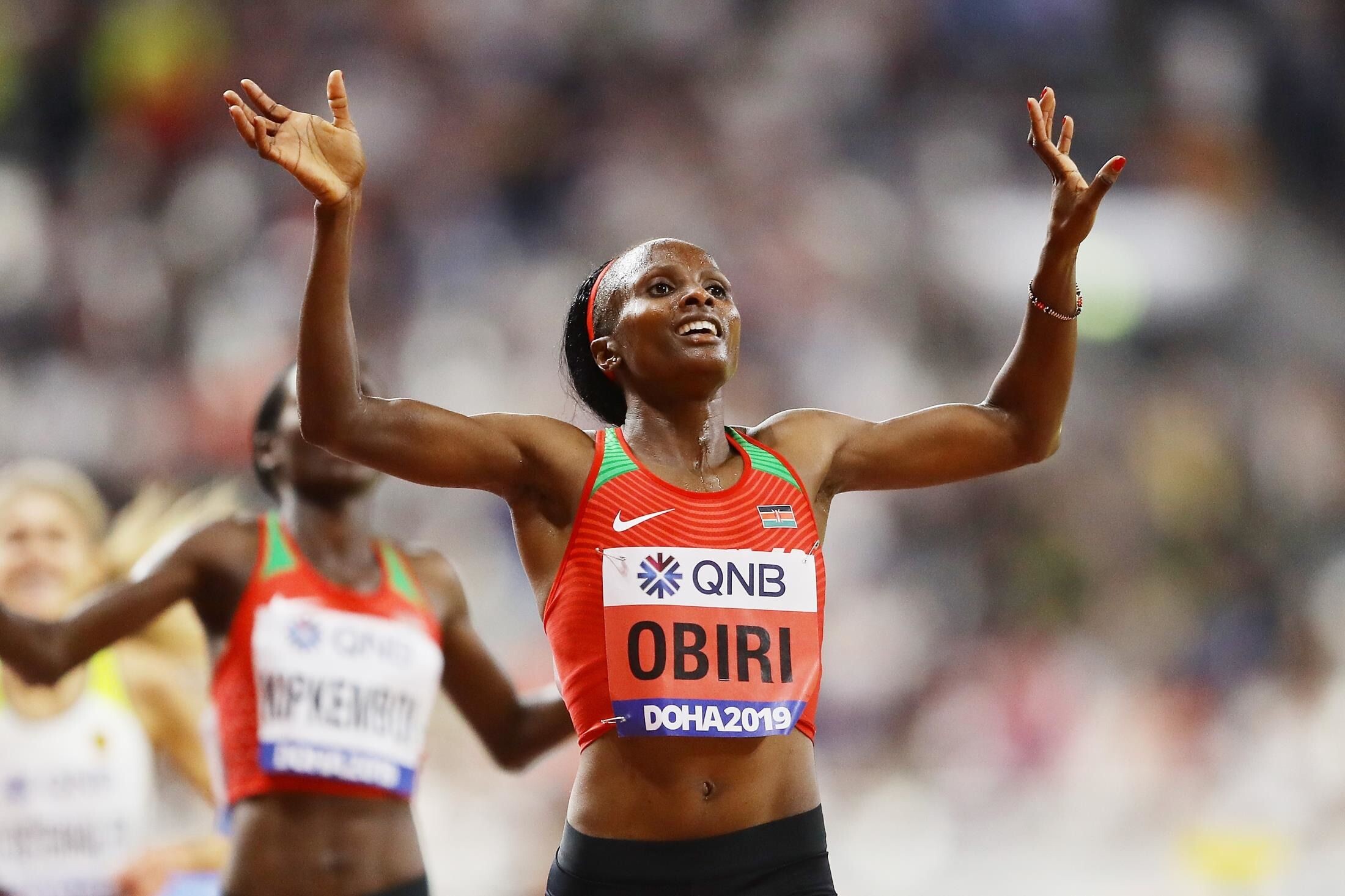
Last fall, Obiri moved from Kenya to Boulder, Colo., joining forces with coach Dathan Ritzenhein and On Athletics Club. She started her 2023 season with a bang, winning UAE’s RAK Half Marathon in February in 65:05 and setting a course record of 67:21 at the NYC Half two weeks ago. Obiri owns the fifth-fastest half-marathon result in history, with a personal best of 1:04:22 from February 2022.
This past week, Obiri made headlines on Strava as she did a 25-mile long run at 2:25 marathon pace with her OAC training partner Joe Klecker of the U.S. (who posted the run). According to Klecker’s Strava caption, Obiri hit 40K in 2:18 (even with a 7:14 first mile).

Obiri’s winning streak has indicated that she’s in great shape and now comes into Boston as one of the favourites in the women’s elite field. She will be challenged by 2022 world marathon champion Gotytom Gebreslase, 2020 Tokyo Marathon champion Lonah Salpeter and the woman who beat Obiri last fall in NYC, Sharon Lokedi.
We are less than three weeks away from the 127th Boston Marathon.
by Running Magazine
Login to leave a comment
Boston Marathon
Among the nation’s oldest athletic clubs, the B.A.A. was established in 1887, and, in 1896, more than half of the U.S. Olympic Team at the first modern games was composed of B.A.A. club members. The Olympic Games provided the inspiration for the first Boston Marathon, which culminated the B.A.A. Games on April 19, 1897. John J. McDermott emerged from a...
more...Eilish McColgan (30:00.87) and Alicia Monson (30:03.82) Break National Records At The TEN
The British and American records in the women’s 10,000 meters both went down late Saturday night in California as Eilish McColgan outdueled Alicia Monson over the final lap of The TEN in San Juan Capistrano. McColgan, the Commonwealth Games champion at 10,000 who is building up for her marathon debut in London on April 23, was only added to the field this week but felt confident in her fitness after five weeks of altitude training in Colorado. It proved an inspired decision as she ran 30:00.87 to narrowly break Paula Radcliffe’s British record of 30:01.09 set in August 2002.
A few seconds behind McColgan, Alicia Monson nabbed her second American record of 2023, running 30:03.82 to smash the previous record of 30:13.17 set by Molly Huddle in the 2016 Olympic final in Rio. Three weeks ago, Monson ran 8:25.05 at the Millrose Games to break the American indoor (and overall) record for 3,000 meters.
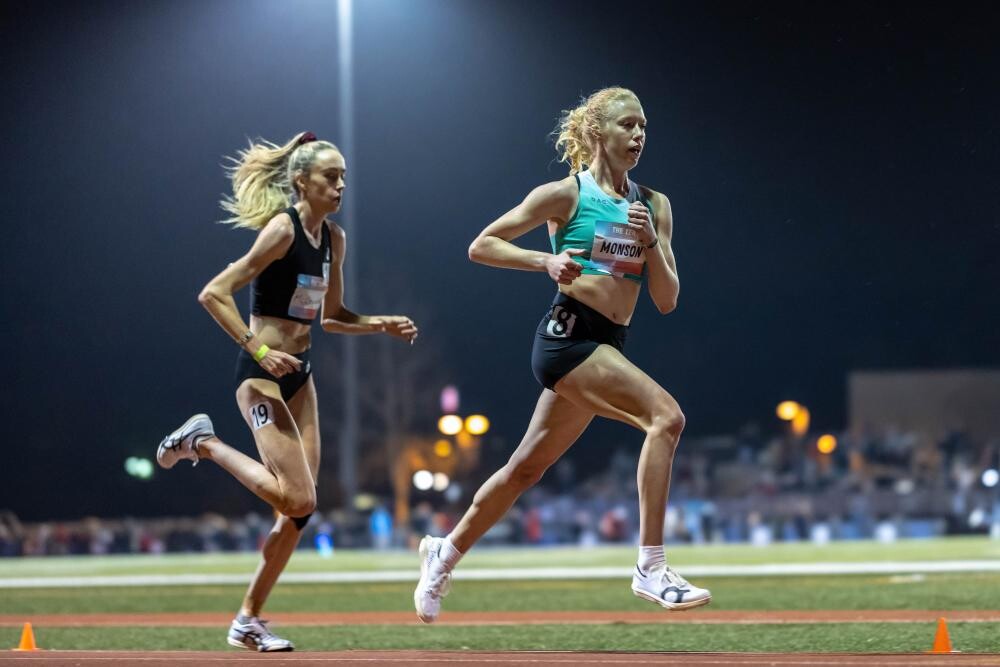
Both women were also safely under the 30:40 standard for the 2023 World Championships and 2024 Olympics on a good night for running fast (50-degree temps, still conditions).
Monson and her camp had billed the race as an American record attempt and they enlisted her On Athletics Club teammate Josette Andrews (a 14:51 5k runner) to handle pacing duties, along with Eleanor Fulton. When Andrews dropped out at 5k (15:09 for McColgan and Monson), they were actually a few seconds behind AR pace, but Monson took over and righted the ship, dropping the pace from 73-second laps to 72’s, then 71’s. By the bell, which Monson reached in the lead thanks to a 70.45 penultimate lap, the question was not whether the AR would go down, but whether either woman would break 30:00 – and of course, who would win the race?
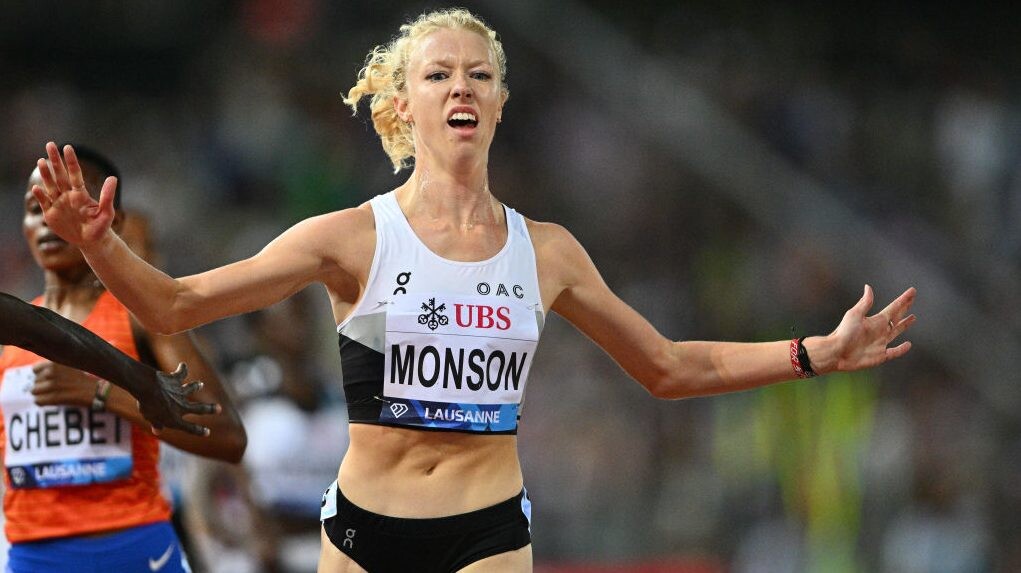
McColgan, who had clung faithfully to Monson throughout the race, finally went wide on the backstraight of the bell lap and passed Monson, and the American had no response as McColgan powered to victory with a 64.87 last 400m. Monson could not match that speed, closing out her effort in 67.99, and though she did not win, her American record was very well-deserved after so much grinding from the front.
No one else earned the World/Olympic standard, but a trio of Americans earned big personal bests in 3rd-4th-5th. Running just her second 10k, 2021 NCAA 5k champ Elly Henes won the battle for 3rd in 30:48.26 to edge 2022 Worlds team member Natosha Rogers (30:48.69) as both women moved ahead of Emily Sisson (30:49.57) and Deena Kastor (30:50.32) into 6th and 7th on the all-time US list. Rogers’ Puma Elite teammate Fiona O’Keeffe also got a pb in 5th, running 30:55.05 to become the 11th American woman to go sub-31.
Results (Analysis at bottom)
1 Eilish McColgan Asics 30:00.86 #$WRLD
2 Alicia Monson On Athletics Club 30:03.82 #$WRLD
3 Elly Henes Adidas 30:48.26
4 Natosha Rogers Puma Elite 30:48.69
5 Fiona O’Keeffe Puma Elite 30:55.05
6 Laura Galvan Hoka 31:04.08
7 Dominique Scott Adidas 31:14.00
8 Carrie Verdon TEAM Boulder 31:52.94
9 Susanna Sullivan unattached 31:55.80
10 Amy Davis-Green Hansons-Brooks ODP 32:10.59
11 Katie Izzo Adidas 32:22.47
12 Jeralyn Poe Tracksmith 32:39.10
Men’s race
The men’s race came down to a battle of the last two US 10,000-meter champions: Woody Kincaid and Joe Klecker. Just as he did five weeks ago over 5,000 meters in Boston, Kincaid earned the victory, though he made his move slightly earlier this time around, taking the lead with 900m to run and holding off Klecker on the last lap, closing in 55.96 to Klecker’s 56.92 as Kincaid ran 27:06.37 to Klecker’s 27:07.57. Both men ran personal bests (they now sit #5 and #7 on the all-time US list) and both hit the 2023 World Championship standard of 27:10, but neither was able to earn the Olympic standard of 27:00.
Klecker and Kincaid both went in with the aim of hitting the Olympic standard and joining Grant Fisher, Galen Rupp, and Chris Solinsky as the only American members of the sub-27:00 club. Klecker’s OAC teammate Ollie Hoare was the main pacemaker (though there were several: Ehab El-Sandali, Amon Kemboi, and Athanas Kioko all helped out) and he took them through 5k in 13:35, at which point British Olympian Sam Atkin, running with the lead pack, surprisingly dropped out.
When Hoare stepped off after covering 6400m in 17:23.90 (27:11 pace), sub-27:00 was within striking distance. But Klecker, despite working hard, could not increase the pace, and Kincaid showed no interest in sharing the lead despite Klecker motioning for him to do so.
By a mile to go, Klecker and Kincaid had dropped everyone else, and Kincaid, sensing the World standard slipping away, hit the front with 900 to go. Klecker stuck right with him, however, and it wasn’t until the final turn that Kincaid was able to gain real separation as both men closed well to get under the World standard – though not the Olympic standard.
Kioko, who stayed in the race, was the best of the rest, running 27:23.84 for 3rd, holding off Conner Mantz, who ran 27:25.30 in the midst of his Boston Marathon buildup (just .07 off his personal best from this meet last year).
Results (analysis below results) *Lap by lap splits
1 Woody Kincaid Nike 27:06.37 WRLD
2 Joe Klecker On Athletics Club 27:07.57 WRLD
3 Athanas Kioko pacer 27:23.84
4 Connor Mantz Nike 27:25.30
5 Jonas Raess On Athletics Club 27:26.40
6 Ren Tazawa Komazawa Univ 27:28.04
7 Nils Voigt Puma 27:30.01
8 Sam Chelagna US Army WCAP 27:38.02
9 Luis Grijalva Hoka 27:42.56
10 Alex Masai Hoka NAZ Elite 27:42.80
11 Wesley Kiptoo Hoka NAZ Elite 27:45.81
12 Ben Flanagan On Running 27:49.67
13 Kanta Shimizu Subaru 27:51.23
14 Benjamin Eidenschink unattached 27:51.74
15 Tatsuhiko Ito Honda 27:54.64
16 Aaron Bienenfeld unattached 27:55.96
17 Ahmed Muhumed unattached 27:56.99
18 Frank Lara Altra/Roots Running Project 28:00.75
19 Emmanuel Bor unattached 28:01.09
20 Alberto Gonzalez Mindez Guatemala 28:30.63
21 Zach Panning Hansons-Brooks ODP 28:35.52
Login to leave a comment
The Ten
The world's fastest 10,000m races each year have taken place in a sleepy little coastal town in southern California. More national records were broken in 2022 than any other race on the planet as the best in the western hemisphere launched into rarified zones of time and space. The best return to San Juan Capistrano this year to cap off...
more...Giants of track and field prepare for battle at Millrose Games
print showdowns, the world’s greatest shot putters and magnificent mile fields highlight the Millrose Games, this season’s fourth World Athletics Indoor Tour Gold meeting, in New York on Saturday (11).
Fresh off a PB and 60m win in Boston, world 200m champion Noah Lyles takes on 60m world record holder and defending Millrose champion Christian Coleman at The Armory, which boasts the nickname ‘The Fastest Track in the World’.
Shot putters Ryan Crouser and Joe Kovacs open their 2023 campaigns by resuming their fierce rivalry, essentially picking up where they left off last September in Switzerland. As the women’s shot returns to Millrose for the first time since 2003, the event couldn’t ask for a better field led by Chase Ealey, the world champion and world indoor silver medallist.
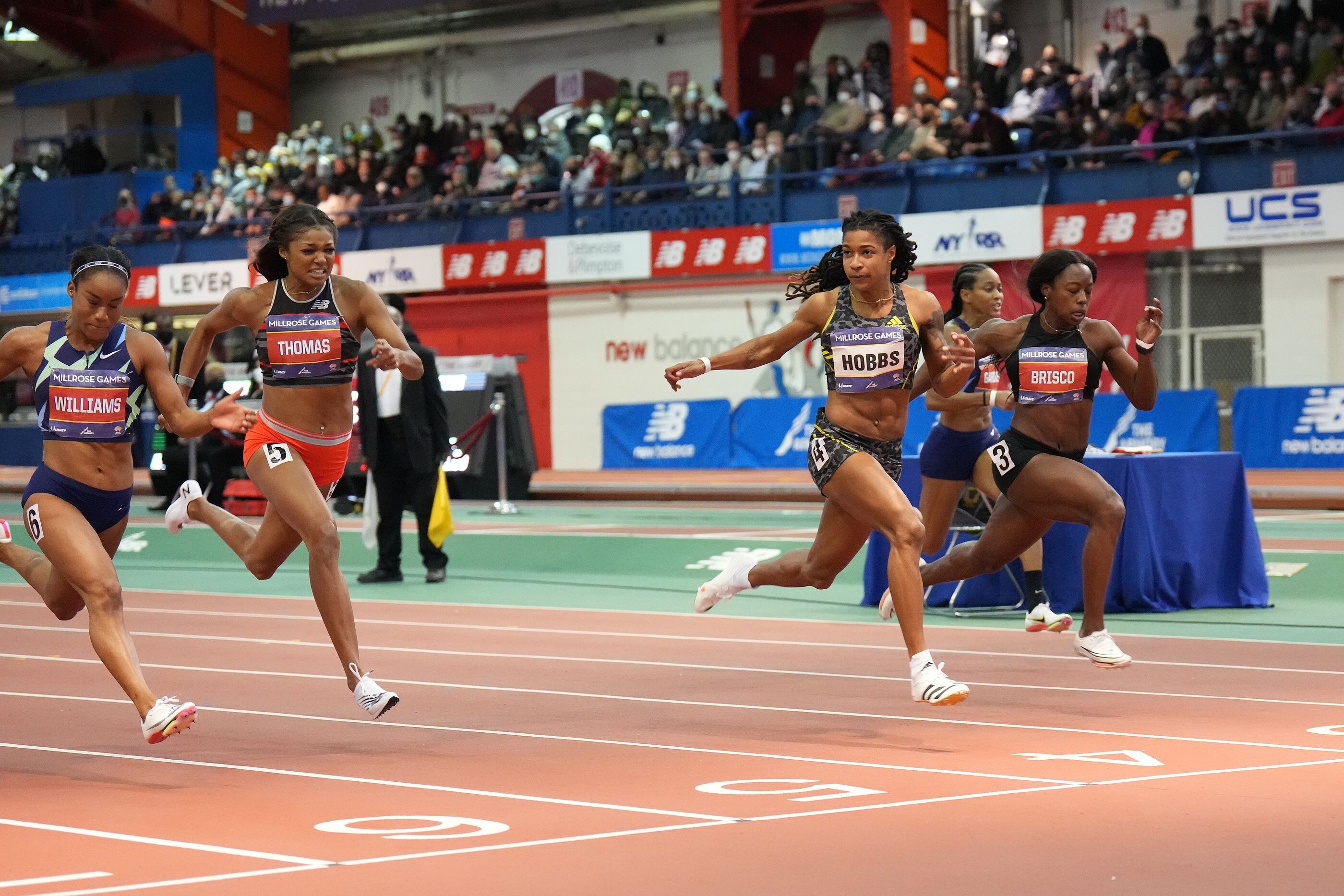
According to tradition, the Rudin Wanamaker Miles cap the storied meeting, which was founded in 1908. A national record might be needed to win the men’s race, but which country will take the honours? Defending champion Ollie Hoare of Australia, USA’s Yared Nuguse, Sam Tanner of New Zealand and Mario Garcia Romo of Spain are top contenders. Great Britain’s Olympic and world medallist Laura Muir is the favourite in the women’s mile, having already claimed a New York record on the road.
Straight down the middle
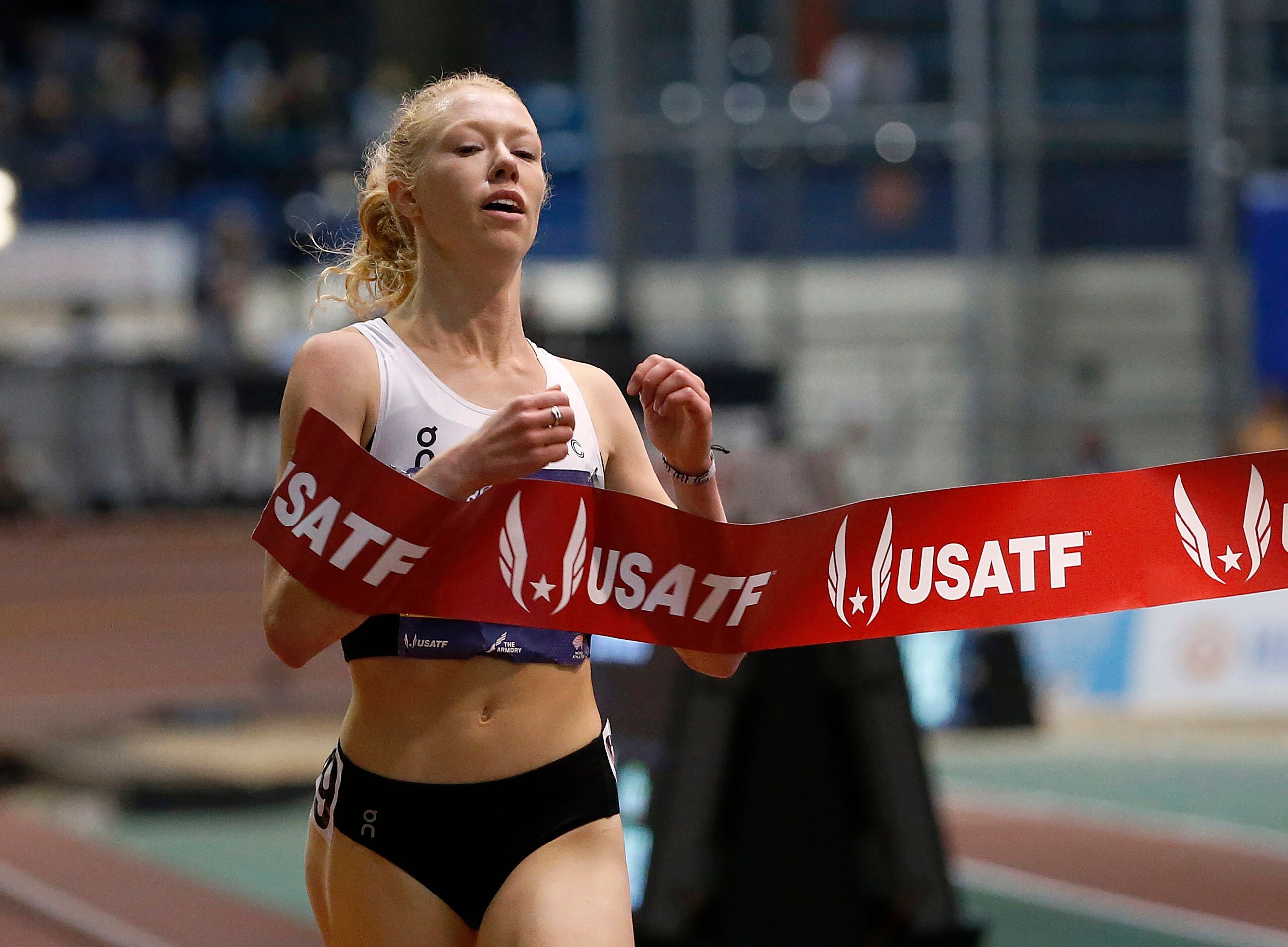
Although The Armory is far from the neon lights of Times Square, it’s still a hop, step and a jump from Broadway – and perhaps no athlete enjoys putting on a show more than Lyles.
At the New Balance Indoor Grand Prix Boston, he posted a PB of 6.51, edging Trayvon Bromell by .002. Coleman clocked 6.71 in Fayetteville two weeks ago to open his season, well off his world record of 6.34 set in 2018 when he was also world indoor champion. Lyles, the Olympic 200m bronze medallist, has been working on his start in a bid to double in the 100m and 200m at the World Athletics Championships later this year in Budapest.
Lyles will also attempt to avenge an early season loss to his younger brother Josephus in Florida. Ronnie Baker, the third-fastest 60m runner in history and 2018 world indoor bronze medallist, won this event in 2018 and 2020. Ackeem Blake of Jamaica, Miles Lewis, the Puerto Rican record-holder, and Kendal Williams, who defeated Lyles in Florida but lost to him in Boston, are also in the field.
Aleia Hobbs is seeking her second straight win in the women’s 60m after exploding to a meeting record 7.02 in Boston. She also owns the world-leading time of 6.98, run in Fayetteville in late January. In Boston, Hobbs held off world indoor silver medallist Mikiah Brisco and Celera Barnes, who get another chance to defeat her at Millrose.
Melissa Jefferson, who edged Hobbs in the 100m at last year’s USA Championships; world indoor bronze medallist Marybeth Sant-Price, and English Gardner are also in the field. Shawnti Jackson was third at Millrose last year, setting a national high school record of 7.18, and will look to improve both her placement and her time.
Olympic silver medallist Keni Harrison, the Millrose 60m hurdles winner in 2020, will take on 2019 world champion Nia Ali, heptathlete Anna Hall, and Olympians Anna Cockrell, Devynne Charlton and Cindy Sember.
Ring rivalry renewed
The road to Budapest begins for the top shot putters on the planet. World and Olympic champion Crouser will face Kovacs, a double outdoor world champion and two-time Olympic silver medallist.
While Crouser has won at Millrose three years in a row and holds both the indoor and outdoor world records, he knows his compatriot is always in the hunt to topple him. Kovacs set the world-leading mark in 2022 while moving to second on the all-time list and winning the Diamond league final in Zurich. At the season-ending meeting for both, Kovacs won at Bellinzona with a toss of 22.19m, with Crouser next at 22.00m. Tripp Piperi and Nick Ponzio of Italy round out the field.
Ealey had a dream season in 2022, building on her world indoor silver to take the world title in Oregon and then capture the Diamond League title. Compatriots Maggie Ewen, the 2021 Diamond League champion, and Jessica Woodard will challenge Ealey for the first Millrose crown in 20 years, along with Canada’s Commonwealth champion Sarah Mitton.
The women’s pole vault features Katie Moon (formerly Nageotte) and Katerina Stefanidi, the last two Olympic gold medallists. However, in their previous meeting, the Greek vaulter was third and the Tokyo champion placed fourth in Boston, with Bridget Williams and Gabriela Leon going 1-2. All four athletes will be on the runway at Millrose.
Steiner seeks another record
The rarely run 300m has become something of a specialty for USA’s Abby Steiner. She already holds the NCAA record and is targeting the national record of 35.71 in her first indoor season as a professional. Two weekends ago, Steiner raced to a 400m victory in Fayetteville in 50.59. The world record of 35.45 is shared by Irina Privalova and Shaunae Miller-Uibo, with the Bahamian clocking her winning time in 2018 at Millrose. Jenna Prandini, Steiner’s teammate on the victorious 4x100m relay in Oregon, and 2019 world 200m silver medallist Brittany Brown offer strong competition.
The men’s 400m could be another duel between USA’s Noah Williams and Trinidad & Tobago’s world indoor champion Jereem Richards. In Boston, both clocked 45.88, but Williams surged on the inside to win by .004. Michael Cherry, fourth in the 400m in Tokyo and an Olympic and world gold medallist at 4x400m, opens his season at Millrose, along with the fourth man in the field, Bryce Deadmon, another Olympic and world gold medallist on relays.
Going the distance
The great Paavo Nurmi raced at the Millrose Games nearly 100 years ago and the distance races never disappoint. Of course, the signature event is the Rudin Wanamaker Mile.
After recently setting a North American indoor record over 3000m, Yared Nuguse is in a New York state of mind to break another continental record: Bernard Lagat’s 3:49.89 in the indoor mile. Nuguse and training partners Hoare and Romo are hoping for a fast pace to propel them into the record books. Hoare set an Oceanian record of 3:50.83 in winning the 2022 Wanamaker Mile and is the Commonwealth 1500m champion. Other contenders include Tanner, a three-time New Zealand champion; Great Britain’s Neil Gourley, whose home straight sprint led to a world-leading 3:52.84 in Boston; 2022 US indoor 1500m champion Cole Hocker, Johnny Gregorek, Sam Prakel and Kenya’s Eliud Kipsang.
Muir had a US indoor race debut in Boston, clocking 8:40.34 in the 3000m, and now is dropping back down to more familiar territory. The world and Olympic medallist in the 1500m set a course record of 4:14.8 on the road in the Fifth Avenue Mile in 2022. At Millrose, the record is 4:16.85, set by Elle Purrier St Pierre in 2020, which is the third-fastest indoor mile in history after Gudaf Tsegay’s 4:16.16 in Torun. In a deep field, Muir will be challenged by training partner and Olympic 800m finalist Jemma Reekie, and US champion Sinclaire Johnson.
In the men’s 3000m, Geordie Beamish and Cooper Teare, who went 1-2 last year, return to the Armory track where they will try to fend off Josh Kerr, the Olympic 1500m bronze medallist; Joe Klecker, Guatemala’s Luis Grijalva and Nico Young.
Alicia Monson, defending Millrose champion in the women’s 3000m, faces national indoor 5000m record-holder Elise Cranny with Karissa Schweizer’s national indoor 3000m record of 8:25.70 in their sights. Monson set a Millrose Games and Armory record last year of 8:31.62 en route to a stellar outdoor season. Katelyn Tuohy recently set an NCAA mile record of 4:24.26 in a race won by Monson; she’s primed for another test against the pros. European champion and 2019 world bronze medallist Konstanze Klosterhalfen won the Wanamaker mile in 2019 and has the fastest 3000m time in the field, clocking 8:20.07 outdoors.
Streaks at stake for Wilson
In the 600m, world indoor 800m champion Ajee’ Wilson will attempt to extend some impressive winning streaks.
Since losing to Alysia Montano in the 600m at the 2013 Millrose Games, she has won 17 straight races at The Armory, including seven at Millrose. She also has won 15 straight races indoors, most recently the 800m in Boston with a time of 2:00.45. Wilson is the second-fastest woman in history in the 600m outdoors and could threaten Keely Hodgkinson’s newly minted world indoor best of 1:23.41. The fastest performer in the field this season Shamier Little, the 2015 world silver medallist in the 400m hurdles, who clocked 1:24.65.
The men’s 800m will be a rematch between world indoor silver medallist Noah Kibet, still just 18 years of age, and world indoor bronze medallist Bryce Hoppel, the defending Millrose champion. The loaded field includes his compatriots Clayton Murphy, the 2016 Olympic bronze medallist, world indoor finalist Isaiah Harris, Great Britain’s Kyle Langford, Mexico’s Tonatiu Lopez and Irish record-holder Mark English. Cade Flatt, the second-fastest US high school runner at this distance, is also in the field.
by World Athletics
Login to leave a comment
NYRR Millrose Games
The Pinnacle of Indoor Track & Field The NYRR Millrose Games, first held in 1908, remains the premier indoor track and field competition in the United States. The 2025 edition will once again bring the world’s top professional, collegiate, and high school athletes to New York City for a day of thrilling competition. Hosted at the New Balance Track &...
more...Woody Kincaid (12:51) and Yared Nuguse (7:28) Break American Records on Historic Night in Boston
The Boston University Track & Tennis Center has been hosting meets for 20 years. In that time, it has seen collegiate records, American records, and two world records.Inarguably, it was BU’s fastest night in the men’s 3,000- and 5,000-meter runs. At 5:30 p.m. ET, Yared Nuguse ran 7:28.24 to break Galen Rupp’s 10-year-old American record in the 3,000. Nuguse’s time was also faster than the 7:28.48 outdoor record Grant Fisher set last summer in Monaco.
Barely two hours later, Woody Kincaid used a brilliant 26.27 final lap to run down Joe Klecker and win the men’s 5,000 in 12:51.61, shaving more than two seconds off Fisher’s American indoor record of 12:53.73 set on this track in 2022.
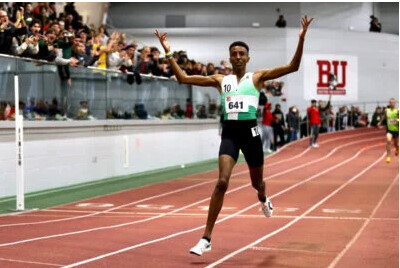
This time last year, no American had ever run 12:51, indoors or out. Now we have to debate whether it was even the best run by an American that day. Heady times for American distance running.
Nuguse and Kincaid weren’t the only men to run fast. Klecker’s 12:54.99 made him the 11th American under 13:00 and moved him to #4 on the combined US indoor/outdoor list. Sam Atkin, unsponsored a year ago, ran 7:31.97 to break Mo Farah’s British record (his time was faster than Farah’s 7:32.62 outdoor record, too). Northern Arizona’s Drew Bosley took almost two seconds off Nuguse’s collegiate record by running 7:36.42. And 19-year-old American Hobbs Kesslerran 7:39.00.
Any of those performances could have been a headline on another day. But tonight belonged to Nuguse and Kincaid, two record breakers entering new phases of their careers.
by Let’s Run
Login to leave a comment
Beamish, Teare, and Kerr will highlight Millrose Games 3000m
The Millrose Games will welcome a stacked 3000m field to the World Athletics Indoor Tour Gold meeting in New York on February 11.
New Zealand’s Geordie Beamish, who holds the national indoor records for 3000m and 5000m, won last year’s race in thrilling fashion, going from fifth to first on the final lap with a furious kick to win in 7:39.50.
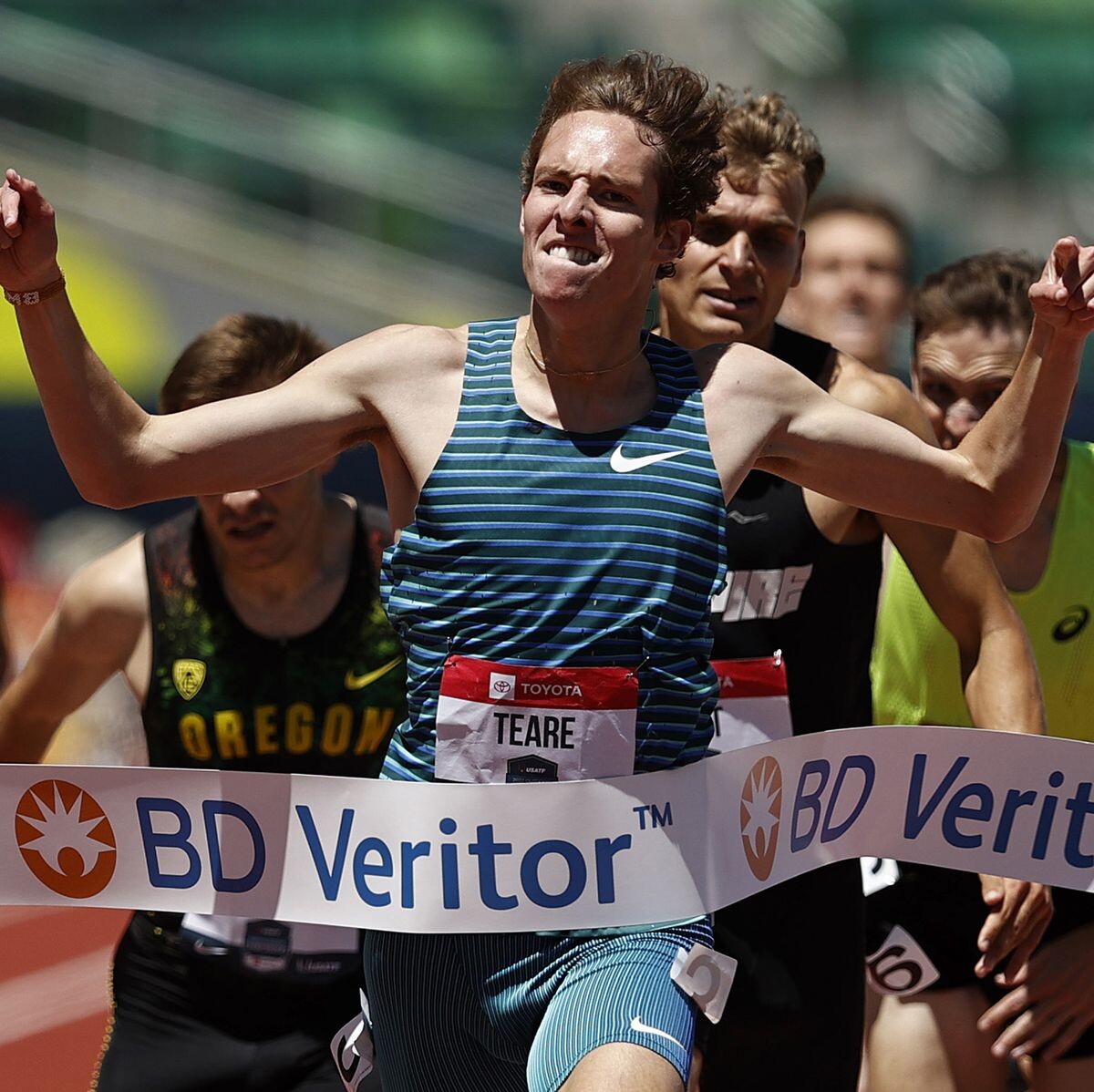
US 1500m champion Cooper Teare finished second in that race, and he will also return to the Millrose stage with revenge on his mind. “I’m beyond excited to be returning to the Millrose Games to experience the electric crowds and fast times,” said Teare.
While the rematch of last year’s tight finish is enticing enough, there are numerous other athletes who are more than capable of winning this race.
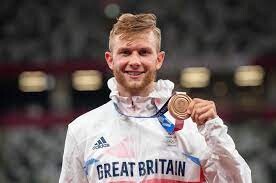
Olympic 1500m bronze medalist Josh Kerr finished second in the mile at the Millrose Games last year, then went on to set a European indoor record of 3:48.87 at that distance.
Guatemala’s Luis Grijalva was fourth over 3000m at last year’s Millrose Games, and he repeated that position over 5000m at the World Championships in Oregon.
Joe Klecker, Morgan McDonald, Olin Hacker and Dylan Jacobs – all past winners of NCAA titles – are also in the field, as is Nico Young, who recently finished second at this year’s NCAA Cross Country Championships.
These are the latest stars announced for the Millrose Games, joining the showdowns in the pole vault between Katie Nageotte, Sandi Morris, and Katerina Stefanidi, and in the shot put, featuring Ryan Crouser and Joe Kovacs.
by World Athletics
Login to leave a comment
NYRR Millrose Games
The Pinnacle of Indoor Track & Field The NYRR Millrose Games, first held in 1908, remains the premier indoor track and field competition in the United States. The 2025 edition will once again bring the world’s top professional, collegiate, and high school athletes to New York City for a day of thrilling competition. Hosted at the New Balance Track &...
more...Ethiopia Has Changed Its Team Again for the 2022 Worlds
On Tuesday, the Ethiopian Athletics Federation announced its team for the 2022 World Athletics Championships in Eugene. If this sounds familiar, that’s because Ethiopia already named its team on June 13…and then updated it four days later to sub in Dawit Seyaum after she ran 14:25 to win the Oslo Diamond League.
Tuesday’s list — which the federation says is the final roster (it pretty much has to be, since entries were due to World Athletics on Monday) — features even more changes, which will have a major impact on Worlds, which begin on July 15 at Hayward Field. Remember, at World Indoor Championships earlier this year in Belgrade, Ethiopian athletes won eight of the 12 available medals across the 1500 and 3000 meters — including all four golds and a 1-2-3 sweep in the women’s 1500. The country is a distance powerhouse.
Here is the full roster, with changes, followed by some analysis on what it all means.
Men’s 800 (no changes)Ermiyas GirmaTolosa Bodena
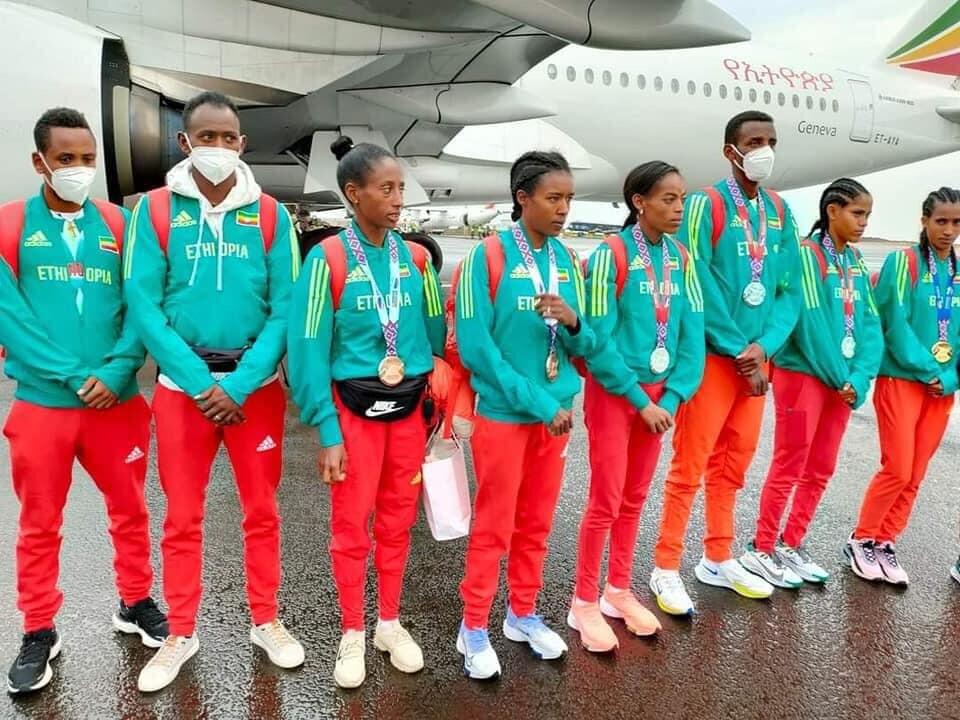
Women’s 800Habitam AlemuDiribe WeltejiHirut Meshesha (1:58.54 sb) replacing Freweyni Hailu (1:59.39 sb)
Men’s 1500Samuel TeferaTaddese Lemi (3:37.06 sb) replacing Melese Nberet (no races this year)Samuel Abate
Women’s 1500Gudaf Tsegay (3:54.21 sb) replacing Axumawit Embaye (3:58.80 sb)Freweyni Hailu (3:58.18 sb, 4th in Olympics) replacing Ayal Dagnachew (3:59.87 sb)Hirut Meshesha

Men’s 3000 steeple (no changes)Lamecha GirmaHailemariyam AmareGetnet Wale
Women’s 3000 steepleMekides AbebeWorkua GetachewSimbo Alemayehu (9:09.17 sb at age 18) replacing Zerfe Wondemagegn (9:27.75 sb)
Men’s 5,000Muktar EdrisBerihu AregawiYomif KejelchaSelemon Barega replacing Telahun Bekele
Women’s 5,000Ejgayehu TayeLetesenbet Gidey (14:24.59 sb) replacing Gudaf Tsegay (14:26.69 sb)Dawit Seyaum (14:25.84 sb) replacing Fantu Worku (14:47.37 sb)
Men’s 10,000Selemon BaregaTadese WorkuBerihu Aregawi (26:46.13 sb) replacing Milkesa Mengesha (27:00.24 sb)
Women’s 10,000Letesenbet GideyEjgayehu Taye (30:44.68 sb) replacing Girmawit Gebrzihair (30:47.72 sb)Bosena Mulate
Men’s marathonLelisa DesisaTamirat TolaMosinet GeremewSeifu Tura
Women’s marathonGotytom GebreslaseAbabel YeshanehAshete Bekere
Quick Takes
1) Ethiopia’s team just got A LOT stronger and Ethiopia went from no one doubling to a lot of doublers
In recent years, Ethiopia has been reluctant to allow its stars to double at global championships. Last year in Tokyo, Ethiopia had two huge 5,000m medal threats in Selemon Barega (Olympic 10,000 champ) and Berihu Aregawi (the 10,000 4th placer who would go on to win the Diamond League 5,000 title) but neglected to enter either in the 5,000 meters. Of the three men Ethiopia did enter, two failed to even make the final and the third, Milkesa Mengesha, wound up 10th.
The federation took criticism after that misstep and it looked as if it would double down in 2022 as the initial team named in June featured no doublers. But the final squad features five athletes double-entered: World Indoor bronze medalist Hirut Meshesha (800/1500) and Ejgayehu Taye (14:12 pb, #5 woman all-time), Letesenbet Gidey (women’s 5k/10k world record holder), Barega and Aregawi, all of whom are running the 5,000 and 10,000.
2) The meet is more interesting with the Ethiopians doubling; the men’s 5,000 final is now totally stacked
The World Championships are meant to be about the best against the best. When a world final is over, we don’t want to be asking ourselves, “What would have happened if Athlete X was in the race?” But that’s absolutely what we were thinking after the 2021 Olympic 5000 final without Barega. And it’s been an issue for a lot longer than that. Only once in his career did Haile Gebrselassie attempt the 5,000/10,000 double at a global champs (1993), in part because there were still prelims in the 10,000 in those days and in part because he didn’t want to tire himself for the lucrative post-championship meets in Europe.
That shouldn’t be an issue in 2022 (and if it is, it won’t have been the fault of the Ethiopian federation) as the distance finals are much stronger with Taye, Gidey, Barega, and Aregawi doubling up. The men’s 5,000 could be an all-timer. Not only do you have Olympic 5,000 champion Joshua Cheptegei of Uganda, but now we have Olympic 10,000 champ Barega stepping down and Olympic 1500 champion Jakob Ingebrigtsen stepping up. It’s reminiscent of one of the most famous races in track history, the 2003 World Championship 5,000 final in Paris which featured Hicham El Guerrouj stepping up from the 1500 and Kenenisa Bekele stepping down from the 10,000 only for both of them to be defeated by an 18-year-old Eliud Kipchoge.
Having Aregawi in the 10,000 makes for a stronger race as well as he was 3rd at the Ethiopian trials in that event and set a Diamond League record for margin for victory when he ran 12:50 to win the Pre Classic 5,000 by 16 seconds.
3) Gudaf Tsegay’s medal odds went up but her gold medal odds went down
Tsegay is pretty clearly the #2 women’s 1500 runner in the world. She won World Indoors by 5+ seconds and is 3+ seconds faster than the #3 1500 woman in the world right now. But she’s also not close to double Olympic champ Faith Kipyegon, who beat her convincingly at Pre, 3:52.59 to 3:54.21.
Initially, Tsegay was entered in the 5,000 at Worlds (she ran the 5,000 only at the Olympics last year, earning the bronze medal) and while there’s no overwhelming favorite in that event like Kipyegon (well at least until we see how Sifan Hassan looks this weekend), Tsegay is not as good at the 5,000 as the 1500 (as evidenced by her defeat to countrywoman Dawit Seyaum in the 5,000 in Oslo). By running the 1500, Tsegay has a better shot at a medal but her odds at gold are worse.
4) It just got a WHOLE LOT harder for the Americans to medal
An American medal in the women’s 5,000 or 10,000 was already unlikely, so the Ethiopian roster changes didn’t make a huge impact on the chances of Karissa Schweizer or Elise Cranny. But the medal odds of Grant Fisher, who finished 5th in the Olympic 10,000 last year, are way lower today than they were a week ago (a statement also true for his US teammates Woody Kincaid and Joe Klecker).
Last Wednesday, two of the four men who finished ahead of Fisher in the 10,000 in Tokyo were major question marks. Bronze medalist Jacob Kiplimo hadn’t raced on the track all year, while Aregawi, the 4th placer, was named to Ethiopia’s team in the 5,000 only. Since then, Kiplimo ran 7:29 for 3,000 in Stockholm to show he’s very fit right now and Aregawi was added to Ethiopia’s 10,000 squad. Plus Barega was added to the 5,000.
Those developments will make it significantly harder for Fisher (or any American man in the 5,000 or 10,000) to earn a medal. That said, if an American can somehow medal, it will go down as a monumental achievement since no one can accuse these fields of being watered down.
Sinclaire Johnson‘s medal hopes in the 1500 also took a BIG hit. With Tsegay now in the 1500, two medals seem to be spoken for and new addition Freweyni Hailu, who was 4th in the Olympics last year at age 20, is better than Ayal Dagnachew (who is no slouch herself, world junior 800 champ last year and 3:59 this year).
5) Ethiopia needs to figure out a better way to do this
One of the most important jobs an athletics federation has is selecting national teams. And for countries that don’t use a “top 3 at the trials” model — which is to say, every country except for the US — things can get prickly as someone, inevitably, is going to be upset they’re missing out on the team.
There are ways to limit the outrage. The simplest solution is the one USATF has already discovered: hold a trials and just pick the top three finishers. Ethiopia actually did this ahead of the Olympics last year. The problem was, they held all the races on the same day, making it impossible for athletes to try out for both the 5,000 and 10,000 teams.
But even if you don’t want to stage a trials, a federation can avoid much of the backlash by announcing a clear criteria ahead of time and sticking to it. You want to pick the team based off season’s bests? Fine. Just let everyone know before the season starts and let them plan their races accordingly. Transparency and consistency are the keys.
Heck, even if you want to be subjective and use a selection panel, you can at least cut down on some of the drama by letting the athletes know in advance that they’ll have to run a few performances to impress the selectors.
What you don’t want to do is announce a team well before the entry deadline (and three days before two key Diamond League meets featuring most of your athletes) only to drastically change it three weeks later. Which is exactly what happened in Ethiopia, leaving athletes like Telahun Bekele (winner of the 5,000 in Oslo) to think they’re on the team only to yank it away less than a month later.
In the end, Ethiopia ended up picking the team by season’s best except in the 10,000, where it staged a trial race (and the top 3 there were the fastest 3 on the year). If it had just used that criteria throughout the year and stuck to it, there would be fewer angry people right now. The athletes deserve better.
by Jonathan Gault
Login to leave a comment
World Athletics Championships Budapest23
Budapest is a true capital of sports, which is one of the reasons why the World Athletics Championships Budapest 2023 is in the right place here. Here are some of the most important world athletics events and venues where we have witnessed moments of sporting history. Throughout the 125-year history of Hungarian athletics, the country and Budapest have hosted numerous...
more...USA names 151-strong team for World Championships in Oregon
A team of 151 athletes will represent the USA on home soil at the World Athletics Championships Oregon22 on July 15-24.
Multiple global champions and world record-holders feature in the squad as Eugene’s Hayward Field gets ready to welcome the world for the first-ever outdoor World Athletics Championships to be hosted in the USA.
World record-holder and Olympic champion Sydney McLaughlin will take on the former world record-holder and reigning world champion Dalilah Muhammad as they look to further cement the US women’s global dominance in the 400m hurdles final on July 22.
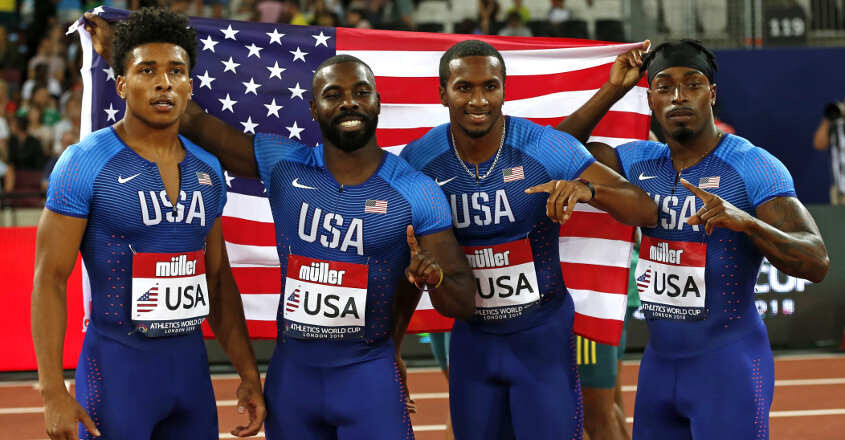
In the men’s shot put on July 17, world record-holder and Olympic champion Ryan Crouser will go after the one title that has so far eluded him – that of world champion – and will take on two-time world champion Joe Kovacs.
Such is the strength of the women’s 800m squad of Athing Mu, Ajee Wilson and Raevyn Rogers, as well as the men’s 200m team of Noah Lyles, Erriyon Knighton, Fred Kerley and Kenny Bednarek, that athletes will be aiming for USA medal sweeps.
Returning to defend the titles they won in Doha in 2019 are Nia Ali (women's 100m hurdles), Donavan Brazier (men's 800m), Christian Coleman (men's 100m), Grant Holloway (men's 110m hurdles), Kovacs (men's shot put), Lyles (men's 200m), Muhammad (women's 400m hurdles), DeAnna Price (women's hammer) and Christian Taylor (men's triple jump).
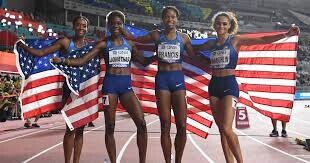
Making her 10th World Championships appearance will be Allyson Felix, who has 18 world medals, including 13 golds, to her name and will be in the mixed 4x400m pool.
“I couldn’t be prouder to lead this amazing team for this once-in-a-lifetime event,” said USATF CEO Max Siegel. “We have been given the unique opportunity to impact the track and field landscape in the US, and we’ve put our best team forward.”
USA team for Oregon
Women
100m: Aleia Hobbs, Melissa Jefferson, Twanisha Terry
200m: Tamara Clark, Jenna Prandini, Abby Steiner
400m: Talitha Diggs, Kendall Ellis, Lynna Irby
800m: Athing Mu, Raevyn Rogers, Ajee Wilson
1500m: Sinclaire Johnson, Cory McGee, Elle St. Pierre
5000m: Elise Cranny, Emily Infeld, Karissa Schweizer
10,000m: Alicia Monson, Natosha Rogers, Karissa Schweizer
Marathon: Emma Bates, Keira D’Amato, Sara Hall
3000m steeplechase: Emma Coburn, Courtney Frerichs, Courtney Wayment
100m hurdles: Nia Ali, Alia Armstrong, Keni Harrison, Alaysha Johnson
400m hurdles: Shamier Little, Sydney McLaughlin, Dalilah Muhammad, Britton Wilson
Heptathlon: Michelle Atherley, Anna Hall, Kendell Williams, Ashtin Zamzow-Mahler
High jump: Vashti Cunningham, Rachel Glenn, Rachel McCoy
Pole vault: Gabriela Leon, Sandi Morris, Katie Nageotte
Long jump: Quanesha Burks, Tiffany Flynn, Jasmine Moore
Triple jump: Tori Franklin, Jasmine Moore, Keturah Orji
Shot put: Adelaide Aquilla, Chase Ealey, Maggie Ewen, Jessica Woodard
Discus: Valarie Allman, Rachel Dincoff, Veronica Fraley, Laulauga Tausaga-Collins
Hammer: Brooke Andersen, Annette Echikunwoke, Janee Kassanavoid, DeAnna Price
Javelin: Ariana Ince, Maggie Malone, Kara Winger
20km race walk: Robyn Stevens, Miranda Melville
35km race walk: Stephanie Casey, Miranda Melville, Maria Michta-Coffey
4x100m: Celera Barnes, Tamari Davis, Gabby Thomas (plus athletes named in individual sprints)
4x400m: Wadeline Jonathas, Jaide Stepter, Kaylin Whitney (plus athletes named in individual sprints)
Men
100m: Marvin Bracy, Trayvon Bromell, Christian Coleman, Fred Kerley
200m: Kenny Bednarek, Fred Kerley, Erriyon Knighton, Noah Lyles
400m: Champion Allison, Michael Cherry, Michael Norman, Randolph Ross
800m: Donavan Brazier, Bryce Hoppel, Jonah Koech, Brandon Miller
1500m: Johnny Gregorek, Cooper Teare, Josh Thompson
5000m: Grant Fisher, Woody Kincaid, Abdihamid Nur
10,000m: Grant Fisher, Joe Klecker, Sean McGorty
Marathon: Elkanah Kibet, Colin Mickow, Galen Rupp
3000m steeplechase: Hillary Bor, Evan Jager, Benard Keter
110m hurdles: Devon Allen, Trey Cunningham, Grant Holloway, Daniel Roberts
400m hurdles: Trevor Bassitt, Rai Benjamin, Khallifah Rosser
Decathlon: Steven Bastien, Kyle Garland, Zach ZiemekHigh jump: Darius Carbin, JuVaughn Harrison, Shelby McEwen
Pole vault: Andrew Irwin, Chris Nilsen, Luke WinderLong jump: Marquis Dendy, Steffin McCarter, Will Williams
Triple jump: Chris Benard, Will Claye, Donald Scott, Christian Taylor
Shot put: Josh Awotunde, Ryan Crouser, Joe Kovacs, Tripp Piperi Discus: Andrew Evans, Sam Mattis, Brian Williams
Hammer: Daniel Haugh, Rudy Winkler, Alex Young
Javelin: Ethan Dabbs, Tim Glover, Curtis Thompson
20km race walk: Nick Christie, Dan Nehnevaj
35km race walk: Nick Christie
4x100m: Kyree King, Josephus Lyles, Elijah Hall-Thompson (plus athletes named in individual sprints)
4x400m: Bryce Deadmon, Vernon Norwood, Elija Godwin (plus athletes named in individual sprints)
Mixed
4x400m: Allyson Felix, Kennedy Simon, Ismail Turner, Noah Williams (plus athletes named in individual sprints).
by World Athletics
Login to leave a comment
World Athletics Championships Budapest23
Budapest is a true capital of sports, which is one of the reasons why the World Athletics Championships Budapest 2023 is in the right place here. Here are some of the most important world athletics events and venues where we have witnessed moments of sporting history. Throughout the 125-year history of Hungarian athletics, the country and Budapest have hosted numerous...
more...USATF 2022 Championships finals results through June 25
There has already been a lot of a action during the 2022 USATF Championships in Eugene Oregon. Sydney McLaughlin set a new world record in the 400m hurdles (Second photo). Michael Norman won the 400m (first photo) and Fred Kerley won the 100m (third photo). Photos by Jivko
Women’s 100m

1. Melissa Jefferson — 10.69 2. Aleia Hobbs — 10.72 3. Twanisha Terry — 10.744. Tamari Davis — 10.785. Tamara Clark — 10.826. Celera Barnes — 10.86
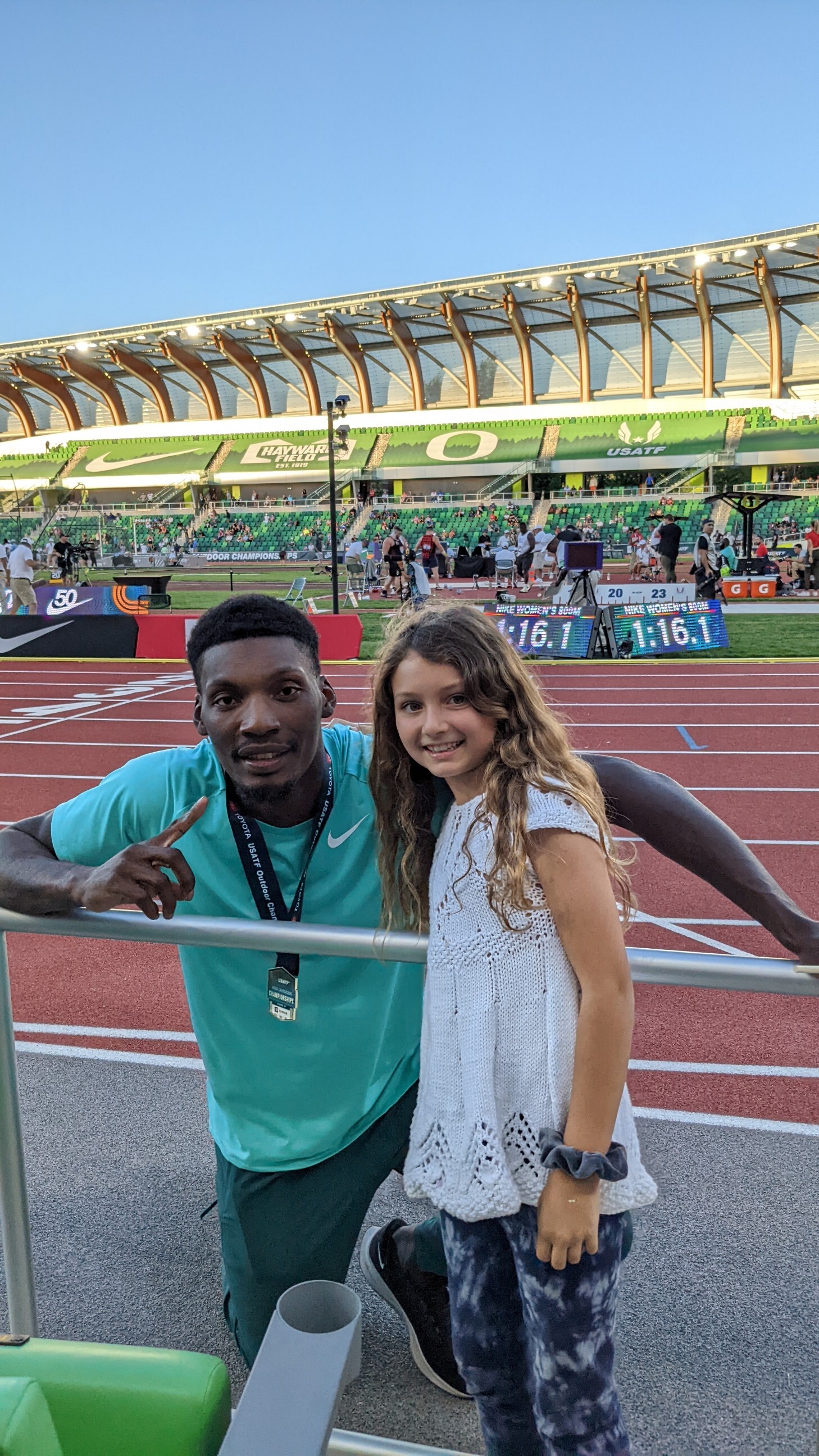
Women’s 400m
1. Talitha Diggs — 50.22 2. Kendall Ellis — 50.35 3. Lynna Irby — 50.674. Wadeline Jonathas — 50.845. Kennedy Simon — 50.906. Allyson Felix — 51.307. Jaide Stepter — 51.308. Kaylin Whitney — 51.31
Women’s 1500m
1. Sinclaire Johnson — 4:03.29 2. Cory McGee — 4:04.52 3. Elle St. Pierre — 4:05.144. Karissa Schweizer — 4:05.405. Heather MacLean — 4:06.40
Women’s 10,000m (from May 27)
1. Karissa Schweizer — 30:49.56 2. Alicia Monson — 30:51.09 3. Natosha Rogers — 31:29.804. Emily Infeld — 31:30.045. Weini Kelati — 31:39.90
Women’s 100m Hurdles
1. Keni Harrison — 12.34 2. Alaysha Johnson — 12.35 3. Alia Armstrong — 12.474. Tonea Marshall — 12.555. Tia Jones — 12.59DNS. Nia Ali (has bye onto world team)
Women’s 400m Hurdles
1. Sydney McLaughlin — 51.41 WR 2. Britton Wilson — 53.08 3. Shamier Little — 53.924. Anna Cockrell — 53.985. Shannon Meisberger — 55.39
Men’s 100m
1. Fred Kerley — 9.77 2. Marvin Bracy-Williams — 9.85 3. Trayvon Bromell — 9.884. Micah Williams — 9.905. Elijah Hall-Thompson — 9.906. Kyree King — 9.96DNS. Christian Coleman (has bye onto world team)
Men’s 400m
1. Michael Norman — 43.56 2. Champion Allison — 43.70 3. Randolph Ross — 44.174. Elija Godwin — 44.345. Vernon Norwood — 44.356. Bryce Deadmon — 44.547. Noah Williams — 45.048. Ismail Turner — 45.56
Men’s 1500m
1. Cooper Teare — 3:45.86 2. Jonathan Davis — 3:46.01 (doesn’t have standard)3. Josh Thompson — 3:46.07 (doesn’t have standard)4. Eric Holt — 3:46.15 (doesn’t have standard)5. Reed Brown — 3:46.28 (doesn’t have standard)6. Johnny Gregorek — 3:46.36 (has standard)11. Yared Nuguse — 3:47.46 (has standard)
Men’s 10,000m (from May 27)
1. Joe Klecker — 28:28.71 2. Grant Fisher — 28:28.81 3. Sean McGorty — 28:29.574. Dillon Maggard — 28:30.755. Shadrack Kipchirchir — 28:30.79
Men’s 3000m Steeplechase
1. Hillary Bor — 8:15.76 2. Evan Jager — 8:17.29 3. Benard Keter — 8:19.164. Duncan Hamilton — 8:20.235. Anthony Rotich — 8:23.15
Login to leave a comment
USATF Outdoor Championships
With an eye toward continuing the historic athletic success of 2022, USATF is pleased to announce competitive opportunities for its athletes to secure qualifying marks and prize money, including a new Grand Prix series, as they prepare for the 2023 World Athletics Championships in Budapest, Hungary.As announced a few months ago, the 2023 Indoor Championships in Nanjing, China have been...
more...Woody Kincaid eyes redemption at USA Track & Field Outdoor Championships
Woody Kincaid’s last visit to Hayward Field didn’t go as planned.
So, Kincaid has something extra riding on the USA Track & Field Outdoor Championships, which begin a four-day run at Hayward Field in Eugene on Thursday.
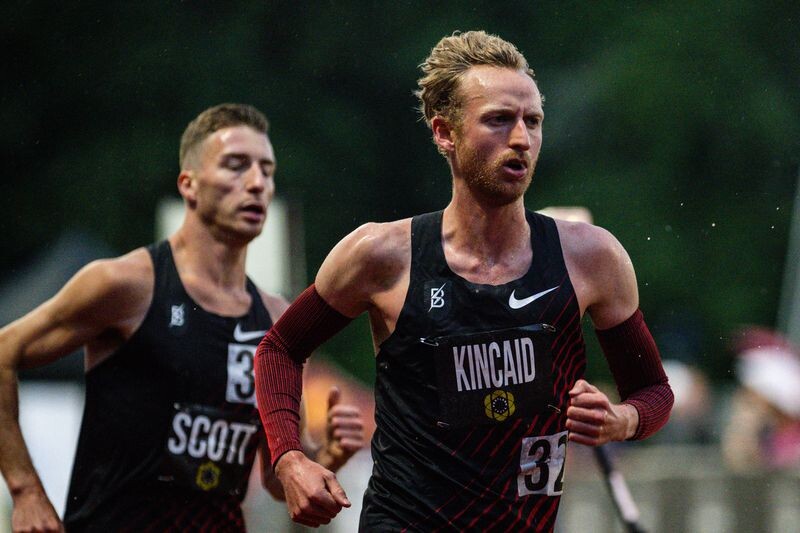
The USATF 10,000-meter final took place at Hayward last month in conjunction with the Prefontaine Classic. Kincaid, the Olympian who trains with the Portland-based Bowerman Track Club, was defending his USATF title.
It was a slow pace and headed toward a kicker’s finish -- Kincaid’s kind race -- when a sharp pain in his side almost doubled him over 6,600 meters in.
Buchanan, who would finish ninth, trains with the California-based Mammoth Track Club. The two UP grads weren’t working together. It just … happened.
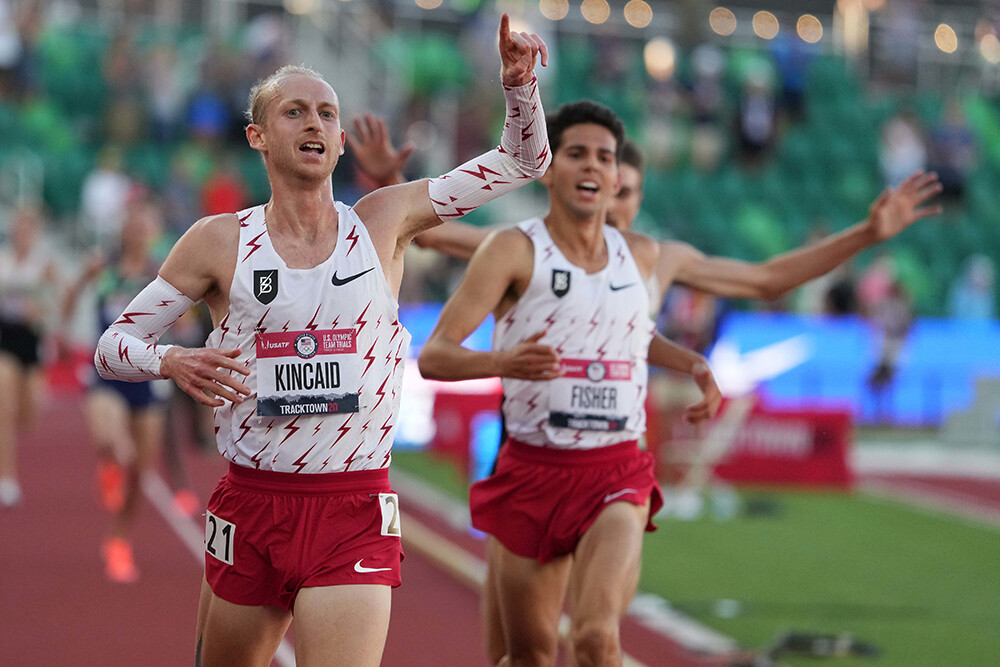
(First photo): Woody Kincaid and Grant Fisher react after finishing first and second place in the men's 10,000 meters during Day 1 of the 2020 U.S. Olympic Track & Field Team Trials at Hayward Field on June 18, 2021, in Eugene, Oregon.
Kincaid remembers thinking, “‘Damn. That’s Reid Buchanan. And this is the Olympic trials.’ It was pretty surreal.”
In the final lap, it became outrageous. Kincaid covered the final 400 in 53.47 seconds, the final 200 in 25.51.
“A lot of people can’t do that,” says UP coach Rob Conner, who nurtured Kincaid through five up-and-down, injury-troubled years on The Bluff.
Staggered, Kincaid couldn’t go on. He was on the sideline when Joe Klecker, Grant Fisher and Sean McGorty went 1-2-3 to claim the spots on Team USA for the World Outdoor Track & Field Championships next month in Eugene.
“It wasn’t a hard effort,” Kincaid says, trying to make sense of what caused the stitch. “It was a slow pack, 4:52 mile pace. So, it wasn’t like I was hanging on or anything. It’s never happened before.”
Kincaid says it’s been diagnosed as a diaphragm cramp. He has been checked out. There doesn’t seem to be anything wrong medically.
“One of those things,” he says.
And ready to be discarded like yesterday’s news. Kincaid is entered in Sunday’s 5,000 in the main portion of the USATF Outdoor Championships. He will be running to win.
Kincaid was third in the 5,000 at last year’s Olympic trials. He went on to represent the U.S. in both events in Tokyo, placing 14th in the 5,000 and 15th in the 10,000.
“I was glad I made the team in the ‘5,’” Kincaid says of last year’s Olympic trials. “But there still is a little bit of ‘Damn, I should have gotten the ‘5′ too.’ I still want a national title in the ‘5.’”
Last year’s Olympic trials was a breakthrough for the former University of Portland star who seemed to spend his first four years as a professional either hurt or trying to come back from injury.
It all clicked last summer on the first day of the trials at Hayward Field when Kincaid positioned himself perfectly in the 10,000 with two laps to go.
He wasn’t quite ready to make his move when former UP teammate Reid Buchanan obliged by going to the front.
It was a Hollywood finish in more ways than one. As Kincaid took his victory lap, his father, Mike, met him at along the rail. Mike was in a fight with mesothelioma that he would lose five months later.
Father and son both knew the score, which made for a poignant moment.
“We were both like in shock, like, ‘Wow, I can’t believe that just happened,’” Kincaid says. “My dad couldn’t speak. We were super close. I don’t think he had anything to say.”
Kincaid’s BTC teammates took a photo of the scene and blew it up to poster size.
“Best race I’ve ever run,” Kincaid says. “That was special.”
Shocking as it might have been to fans, it wasn’t totally unexpected by those close to him.
BTC coach Jerry Schumacher believes Kincaid actually arrived at the 2019 USATF Outdoor Championships, when he survived a wicked pace set by Olympic silver medalist Paul Chelimo in the 5,000, stayed at the front and finished third.
“That got me excited,” Schumacher says.
That September, Kincaid and teammates Lopez Lomong and Matthew Centrowitz ran a 5,000-meter time trial on the Nike campus.
Kincaid bolted past Lomong in the race’s final 120 to finish first in 12:58.10. Even Kincaid did a double take at the sub-13 time.
COVID scrubbed most of the 2020 outdoor season, leaving Kincaid something of a question mark heading into last summer’s Olympic trials.
“People kind of missed on him,” Schumacher says. “We got to see him at practice. We got to see how he trained and worked out. He was determined. He had everything you would want to see in an athlete going into the Olympic trials.
“For us, it wasn’t a huge surprise. He’d basically been at that level for two full years, and 2021 was the first time he got to showcase it.”
He is a known commodity now, and an acknowledged threat in the USATF 5,000 final. A totally focused and injury-free Kincaid will be tough to beat, particularly if the race comes down to a kick.
“He’ll get the job done,” Conner says. “I’m 100 percent confident of that.”
by Ken Goe (OregonLive)
Login to leave a comment
Schweizer, Klecker Win U.S. 10,000-Meter Championships
They lead the U.S. contingent in the event for the World Championships in July.
After 24 and a half laps of the track, Karissa Schweizer sprinted past Alicia Monson to win the U.S. title in the 10,000 meters at the Prefontaine Classic in Eugene, Oregon.
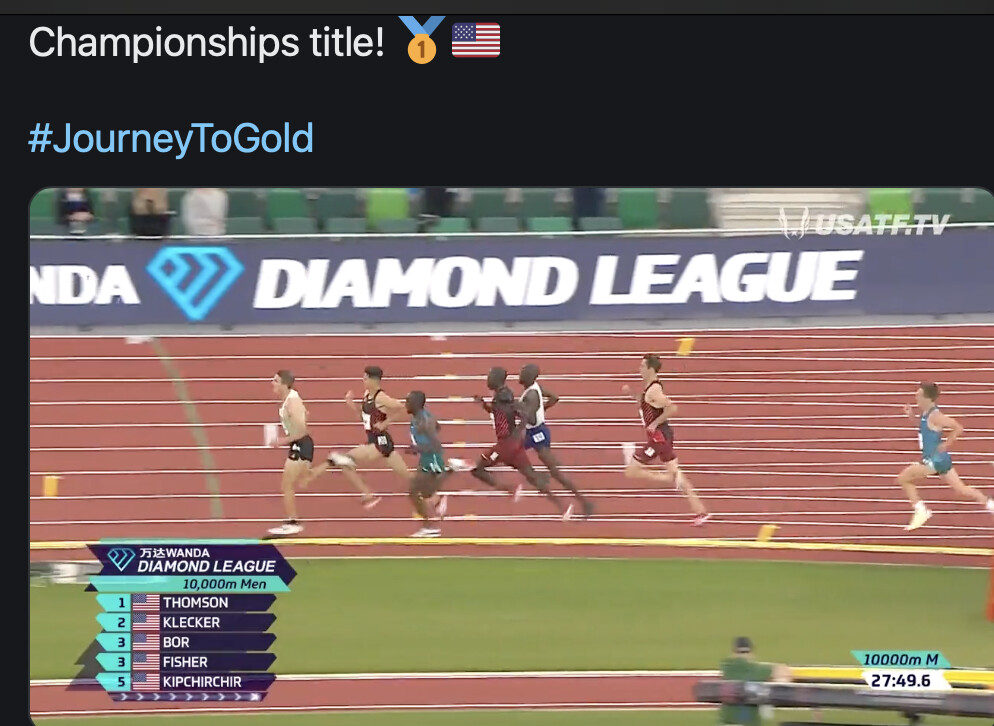
Schweizer’s time, 30:49.56, was less than two seconds off her personal best, and by finishing in the top three, she earned a spot on the U.S. squad competing at the World Athletics Championships in July. That meet will also be held in Eugene, the first time the meet will be in the United States.
Monson, who led the last 10 laps of the race until Schweizer sprinted by her, was second in 30:51.09, a personal best by nearly 20 seconds.
Well behind the top two, a pack of six women vied for third place and the final of three Worlds spots. Natosha Rogers and Emily Infeld were back and forth in the final 100 meters, and Rogers pulled ahead just before the line. She clocked 31:29.80, and Infeld was less than a quarter of a second behind, in 31:30.04.
Weini Kelati was fifth, Sarah Lancaster was sixth, and Steph Bruce, in her final year of racing, was seventh.
The race went out in a relatively easy first half. Emily Durgin led the field through a 5,000-meter split of 15:50. Schweizer ran just under 15 minutes for the second 5,000 meters, and Monson was right behind.
Joe Klecker takes the men’s title
The men’s 10,000 meters had the same stakes—top three earn a trip to worlds—but the pace went out so easy that most of the field was still in the race when the sprinting started during the bell lap.
Joe Klecker, an Olympian at 10,000 meters last year, won in 28:28.71, just beating Grant Fisher, the American record holder in the event, who finished in 28:28.81. Fisher’s time was nearly two minutes slower than the record (26:33.84) he set in March.
Although Emmanuel Bor had a lead heading into the final 100 meters, Sean McGorty emerged in third place after Bor, slowing, tripped in the final meters and finished in eighth.
McGorty, recovering from Achilles surgery last July, ran 28:29.57 and earned his first berth on a U.S. team.
Dillon Maggard was fourth, Shadrack Kipchirchir was fifth, and Lopez Lomong was sixth.
In both races, first place earned $8,000, second earned $6,000, and the third-place finishers took home $4,000.
by Runner’s World
Login to leave a comment
World Record Holders, Olympians, National Champions set to Race B.A.A. 5K
The B.A.A. 5K and B.A.A. Invitational Mile will make a triumphant return to Patriots’ Day weekend, with professional fields featuring world record holders, Olympians, Paralympians, national champions, and local standouts. Held on Saturday, April 16, the B.A.A. 5K and B.A.A. Invitational Mile will kick-off festivities leading up to the 126th Boston Marathon on April 18.
“The B.A.A. 5K and B.A.A. Invitational Mile are two events entrenched in the fabric of Boston Marathon weekend, and each features a field which will lead to fast competition,” said Tom Grilk, President and Chief Executive Officer of the B.A.A. “With three years having passed since our last in-person edition of these races, we’re eager to return to the roads to crown champions.”
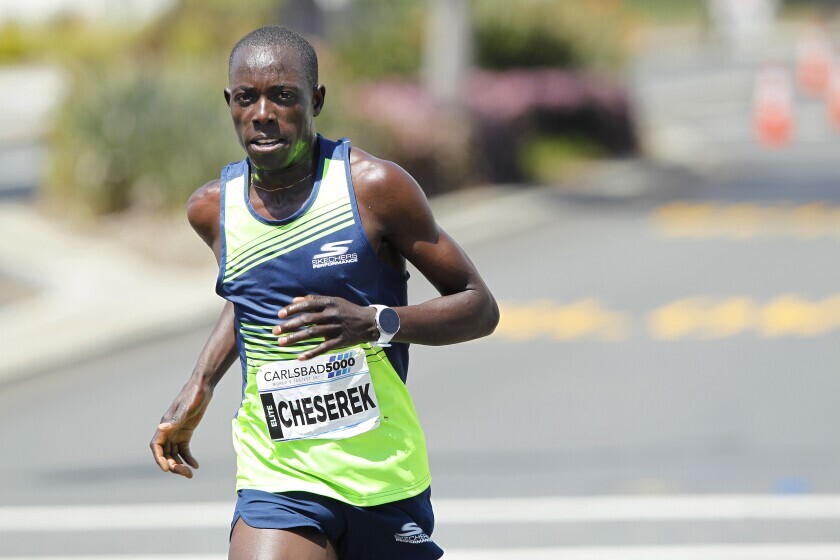
In the B.A.A. 5K, Ethiopia’s Senbere Teferi will make her Boston road racing debut. A two-time Olympian and two-time World Athletics Championships silver medalist, Teferi holds the women’s-only 5K world record of 14:29. She’ll be up against recently crowned American marathon record holder Keira D’Amato, 2021 U.S. Olympians Emily Sisson and Rachel Schneider, reigning U.S. 5K national champion Weini Kelati, and B.A.A. High Performance Team member Erika Kemp. The B.A.A. 5K course and American record of 14:50 –set by Molly Huddle in 2015—could very well be in jeopardy.
On the men’s side, 2019 B.A.A. 10K champion David Bett and 17-time NCAA champion Edward Cheserek, both of Kenya, will square off against New Zealand 5,000m indoor national record holder Geordie Beamish and 2021 U.S. Olympians Mason Ferlic and Joe Klecker. Stanley Kebenei, a World Athletics Championships finalist in the 3000m steeplechase, will also be part of the strong American charge. The B.A.A. 5K course and American record is 13:20, established by Ben True in 2017.
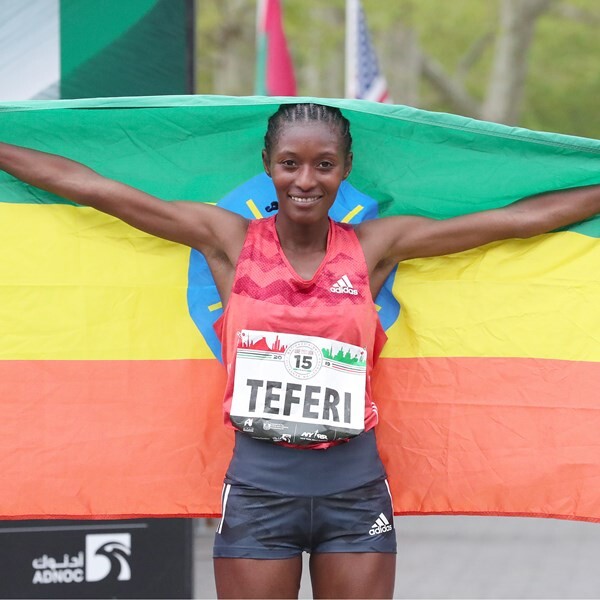
Boston Marathon wheelchair division champions Marcel Hug, Daniel Romanchuk, and Joshua Cassidy will all compete in the B.A.A. 5K less than 48 hours in advance of racing the 126th Boston Marathon. Vanessa de Souza, Shelly Oxley-Woods, and Jenna Fesemyer are top women’s wheelchair entrants.
Following the B.A.A. 5K, the B.A.A. Invitational Mile will take center stage on Boylston Street. U.S. Olympian, Bostonian, and reigning indoor 1,500m national champion Heather MacLean will race for the first time on the three-lap course that finishes at the Boston Marathon finish line. Among her competitors are B.A.A. High Performance Team member Annie Rodenfels, 2019 runner-up Emily Lipari, and Great Britain Olympian Katie Snowden. MacLean and Rodenfels won’t be the only Massachusetts residents toeing the line, as Belmont High School standout Ellie Shea will race among the professionals. Shea ran 9:08.54 for 3,000m during the indoor season, a time that stands as No. 5 on the all-time high school list and is a Massachusetts state record.
Shane Streich, fresh off an indoor American record at 1,000m, will lead the American men in the B.A.A. Invitational Mile along with 3:54 miler Colby Alexander. Neil Gourley of Great Britain is entered, as are Canadian William Paulson, the 2019 Pan-Am 1500m bronze medalist, B.A.A. racing team member Kevin Kelly of Ireland, and local standout James Randon of Rhode Island.
A complete professional field list for the B.A.A. 5K and B.A.A. Invitational Mile can be found below. Preceding the professional divisions of the B.A.A. Invitational Mile will be a scholastic mile and middle school 1K featuring student-athletes from the eight cities and towns along the Boston Marathon route. Entries for the high school and middle school events will be available on race weekend.
2022 B.A.A. 5K WOMEN’S FIELD (NAME, COUNTRY, ROAD 5K PB, TRACK 5000M PB)
Carmela Cardama-Baez, Spain, N/A, 15:25.41 (NR)
Kim Conley, USA, 15:29, 15:05.20
Keira D’Amato, USA, 15:08, 16:09.86
Emily Durgin, USA, 16:05, 15:24.19
Annie Frisbie, USA, 16:35, 16:05.78
Sammy George, USA, 15:53, 15:19.66
Tori Gerlach, USA, 15:56, 15:44.13
Marielle Hall, USA, 15:08, 15:02.27
Elly Henes, USA, N/A, 15:03.27i
Emma Grace Hurley, USA, 16:13, 15:57.23
Katie Izzo, USA, 16:00, 15:41.33
Weini Kelati, USA, 15:18, 14:58.24
Erika Kemp, USA, 15:45, 15:10.10
Melissa Lodge, USA, N/A, 15:53.81i
Sharon Lokedi, Kenya, 15:48, 15:13.04i
Betty Sigei, Kenya, N/A, 15:37.80
Emily Sisson, USA, 15:38, 14:53.84
Rachel Smith (Schneider), USA, N/A, 14:52.04
Emma Spencer, USA, 16:41, 16:04.95
Susanna Sullivan, USA, 16:35, 15:42.59i
Senbere Teferi, Ethiopia, 14:29 (WR), 14:15.29
Abbey Wheeler, USA, N/A, 15:40.67i
2022 B.A.A. 5K MEN’S FIELD (NAME, COUNTRY, ROAD 5K PB, TRACK 5000M PB)
Eric Avila, USA, 13:55, 13:18.68
Geordie Beamish, New Zealand, N/A, 13:12.53i (NR)
David Bett, Kenya, 13:54, 13:06.06
Ben Blankenship, USA, 13:56, 13:33.07
Robert Brandt, USA, N/A, 13:19.11
Sam Chelanga, USA, 13:43, 13:09.67
Edward Cheserek, Kenya, 13:29, 13:04.44
Adam Clarke, Great Britain, 13:42, 13:39.21
Graham Crawford, USA, 13:54, 13:22.68i
Aaron Dinzeo, USA, 14:25, 13:58.37
Brandon Doughty, USA, N/A, 13:39.06
Mason Ferlic, USA, 13:52, 13:24.94
Sydney Gidabuday, USA, 13:53, 13:22.66
Eric Hamer, USA, 14:43, 13:29.60
Brian Harvey, USA, 14:01, 14:13.93
Stanley Kebenei, USA, 13:53, 13:45.87
Joe Klecker, USA, N/A, 13:06.67
Kasey Knevelbaard, USA, 13:56, 13:24.98i
Lawi Lalang, USA, 13:30, 13:00.95
Matt McClintock, USA, 13:49, 13:47.68
Tim McGowan, USA, 14:11, 13:54.20
Reuben Mosip, Kenya, 13:34, 13:50.80a
Charles Philbert-Thiboutot, Canada, 14:04, 13:22.44
Brian Shrader, USA, 13:57, 13:29.13
Zouhair Talbi, Morocco, N/A, 13:18.17i
Aaron Templeton, USA, 13:48, 13:39.39
Josef Tessema, USA, 14:05, 13:22.28.
by Running USA
Login to leave a comment
B.A.A. 5K
The B.A.A. 5K began in 2009, and became an instant hit among runners from far and wide. Viewed by many as the “calm before the storm,” the Sunday of Marathon weekend traditionally was for shopping, loading up on carbohydrates at the pasta dinner, and most importantly- resting. But now, runners of shorter distances, and even a few marathoners looking for...
more...Olympians and Past Champions will Headline New Balance 5th Avenue Mile on Sunday
To close out their seasons, 15 Tokyo Olympians, three Olympic medalists, and two past event champions will race down Manhattan’s most famous thoroughfare in the professional athlete heats at the New Balance 5th Avenue Mile on Sunday, September 12.
The 40th running of the New Balance 5th Avenue Mile – the world’s most iconic road mile race since 1981 – stretches 20 blocks along the east side of Central Park. In addition to age-group heats, there will be an NYPD/FDNY heat taking place to mark the 20th anniversary weekend of 9/11, a Back to School Mile for youth ages 12-18, a George Sheehan Memorial Mile for seniors and NYRR Road Mile Championship heats.
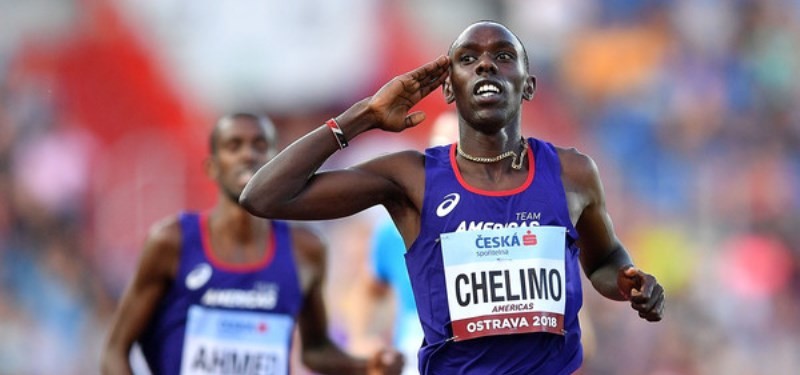
“The New Balance 5th Avenue Mile is an iconic race which invites people of all ages and abilities to run down one of the most famous streets in New York City,” said Ted Metellus, Vice President of Events, NYRR and Race Director, TCS New York City Marathon. “This year will be incredibly exciting with a number of Olympians joining us after their top performances in Tokyo, and we are looking forward to showcasing the city’s resiliency and honoring the work of those participating in the FDNY/NYPD heat to mark 20 years since 9/11.”
The NYRR Road Mile Championships and professional athlete races will be live streamed on USATF.TV free beginning at 11:35 a.m. ET, with a webcast replay for on-demand-viewing available on USATF.TV+.
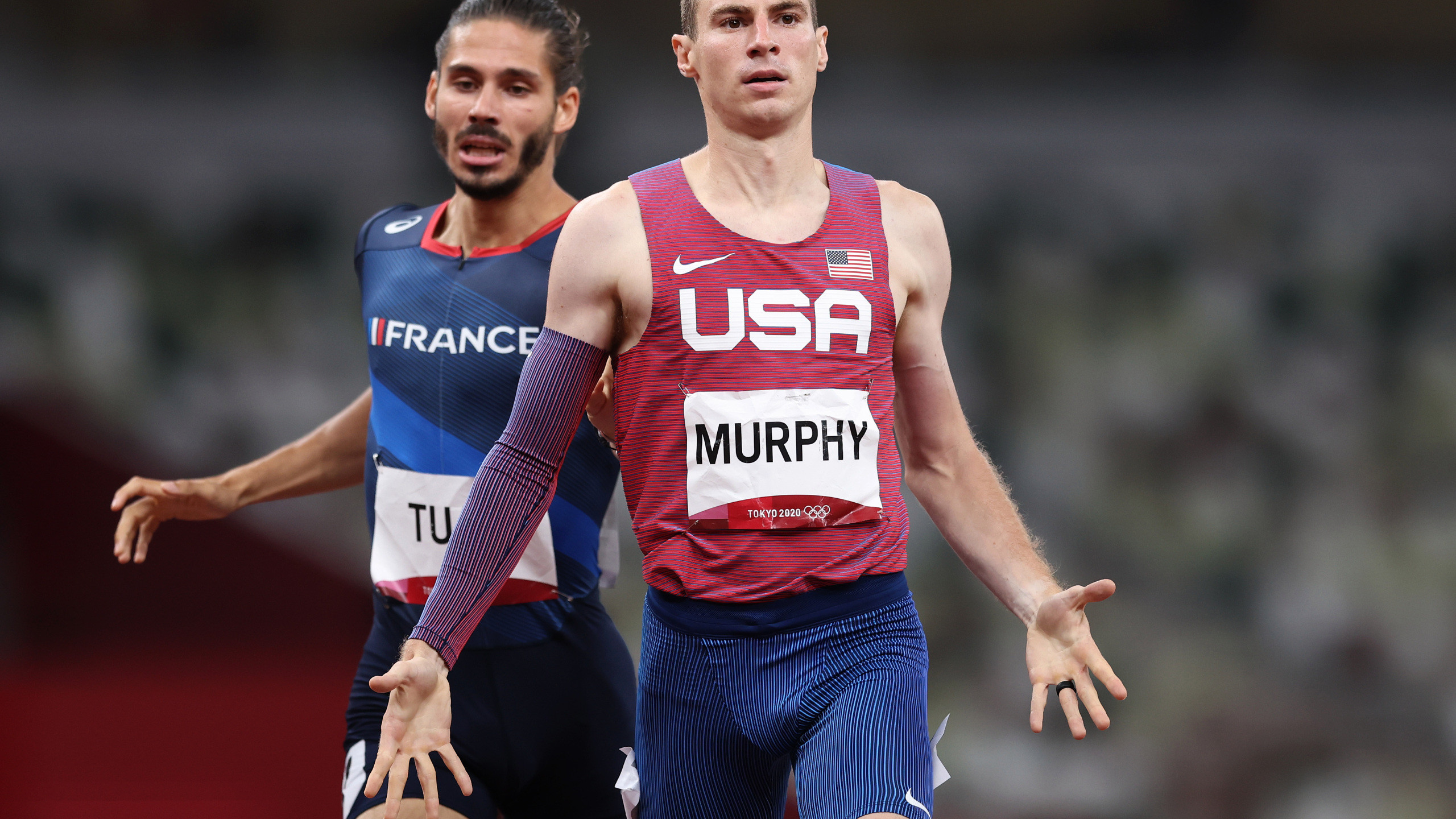
Leading the way in the professional men’s race will be three-time U.S. Olympian Matthew Centrowitz who won Rio 2016 Olympic gold in the 1,500 meters and the 5th Avenue Mile in 2012, and two-time U.S. Olympian Paul Chelimo, who won bronze in Tokyo and silver in Rio in the 5,000 meters.
“I’m excited to return to New York for my sixth race down 5th Avenue, a race I first won nine years ago,” Centrowitz said. “Heading back East and ending my season there is like a great end-of-summer tradition, and I’m looking to show the rest of the guys I’ve still got a step or two left in 2021.”
“I’ve already run a 5K and half marathon in New York, so now I just need to check the mile and the marathon off my list,” Chelimo said. “Running a straight line down 5th Avenue is very different than running laps on a track, and I’ve got more road racing experience than the other guys in this field. I’m confident in my finish, so if I can keep it close through halfway, I think I can beat the milers at their own game. Go hard or suffer for the rest of your life."
Challenging them will be two-time U.S. Olympian and 2016 Olympic bronze medalist in the 800 meters Clayton Murphy, Olympian and 2018 event champion Jake Wightman, and Olympian and European Indoor Championships gold medalist Adel Mechaal.
A trio of other Americans to watch will be Tokyo Olympians Joe Klecker, Mason Ferlic, and Hilary Bor, with Ferlic racing the event for the third time and Klecker and Bor making their debuts in the event after competing in Tokyo earlier this year.
The professional women’s race will see a first-time winner, with top contenders including USATF Road Mile Championships runner-up Shannon Osika, British indoor record-holder and Olympian Jemma Reekie, and European Indoor Championships gold medalist Amy-Eloise Markovc.
About New York Road Runners (NYRR)
NYRR’s mission is to help and inspire people through running. Since 1958, New York Road Runners has grown from a local running club to the world’s premier community running organization. NYRR’s commitment to New York City’s five boroughs features races, virtual races, community events, free youth running initiatives and school programs, the NYRR RUNCENTER featuring the New Balance Run Hub, and training resources that provide hundreds of thousands of people each year with the motivation, know-how, and opportunity to Run for Life. NYRR’s premier event, and the largest marathon in the world, is the TCS New York City Marathon. Held annually on the first Sunday in November, the race features a wide population of runners, from the world’s top professional athletes to a vast range of competitive, recreational, and charity runners. To learn more, visit www.nyrr.org.
by Running USA
Login to leave a comment
New Balance 5th Avenue Mile
The New Balance 5th Avenue Mile opens a beautiful 20-block stretch of 5th Avenue to runners of all ages and abilities who want to run their best mile in New York City. Special races include a youth mile, the George Sheehan Memorial Mile for runners age 60 and over, the NYRR Road Mile Championships, and Olympic-caliber professional men's and women's...
more...130 athletes named on the team to represent the United States at the Tokyo Olympic Games
World outdoor record-holders Sydney McLaughlin, Ryan Crouser and Keni Harrison are among the 130 athletes named on the team to represent the United States at the Tokyo Olympic Games.
The squad includes 13 medalists from the 2016 Games in Rio and six defending world champions from Doha. Experienced headliners include five-time Olympians Allyson Felix in the 400m and Abdi Abdirahman in the marathon, while the youngest athlete on the team is 17-year-old Erriyon Knighton, who twice broke the world U20 200m record last month at the US Olympic Trials.
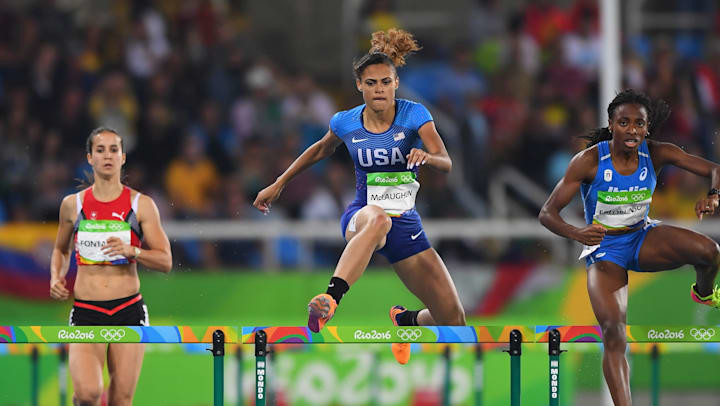
JuVaughn Harrison won both the long jump and high jump at the Trials in Eugene and he will be among the athletes contesting two events in Tokyo as he has been selected for both disciplines.
Other athletes announced on the team include world indoor 60m hurdles record-holder Grant Holloway, who was just 0.01 shy of breaking Aries Merritt’s world 110m hurdles record of 12.80 in Eugene, plus former world 400m hurdles record-holder Dalilah Muhammad, the second-fastest ever 200m sprinter Gabby Thomas and multiple global long jump gold medalist Brittney Reese.
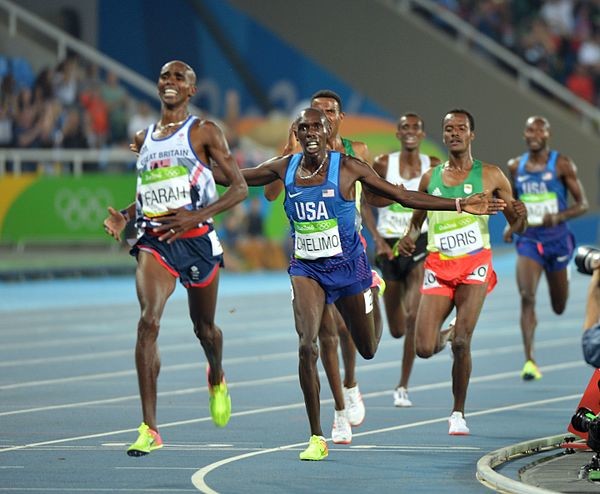
USA team for Tokyo
WOMEN
100m: Teahna Daniels, Javianne Oliver, Jenna Prandini
200m: Anavia Battle, Jenna Prandini, Gabby Thomas
400m: Allyson Felix, Quanera Hayes, Wadeline Jonathas
800m: Athing Mu, Raevyn Rogers, Ajee' Wilson
1500m: Heather MacLean, Cory McGee, Elle Purrier
5000m: Elise Cranny, Rachel Schneider, Karissa Schweizer
10,000m: Alicia Monson, Karissa Schweizer, Emily Sisson
Marathon: Sally Kipyego, Molly Seidel, Aliphine Tuliamuk
3000m steeplechase: Emma Coburn, Val Constien, Courtney Frerichs
100m hurdles: Christina Clemons, Gabbi Cunningham, Keni Harrison
400m hurdles: Anna Cockrell, Sydney McLaughlin, Dalilah Muhammad
20km race walk: Robyn Stevens
High jump: Tynita Butts-Townsend, Vashti Cunningham, Rachel McCoy
Pole vault: Morgann LeLeux, Katie Nageotte, Sandi Morris
Long jump: Quanesha Burks, Tara Davis, Brittney Reese
Triple jump: Tori Franklin, Jasmine Moore, Keturah Orji
Shot put: Adelaide Aquilla, Jessica Ramsey, Raven Saunders
Discus: Valarie Allman, Kelsey Card, Rachel Dincoff
Hammer: Brooke Andersen, Gwen Berry, DeAnna Price
Javelin: Ariana Ince, Maggie Malone, Kara Winger
Heptathlon: Erica Bougard, Annie Kunz, Kendell Williams
4x100m: English Gardner, Aleia Hobbs, Gabby Thomas (plus others selected in individual events)
4x400m: Kendall Ellis, Lynna Irby, Kaylin Whitney (plus others selected in individual events)
MEN
100m: Ronnie Baker, Trayvon Bromell, Fred Kerley
200m: Kenny Bednarek, Erriyon Knighton, Noah Lyles
400m: Michael Cherry, Michael Norman, Randolph Ross
800m: Bryce Hoppel, Isaiah Jewett, Clayton Murphy
1500m: Matthew Centrowitz, Cole Hocker, Yared Nuguse
5000m: Paul Chelimo, Grant Fisher, Woody Kincaid
10,000m: Grant Fisher, Woody Kincaid, Joe Klecker
Marathon: Abdi Abdirahman, Jake Riley, Galen Rupp
3000m steeplechase: Hillary Bor, Mason Ferlic, Benard Keter
110m hurdles: Devon Allen, Grant Holloway, Daniel Roberts
400m hurdles: Rai Benjamin, David Kendziera, Kenny Selmon
20km race walk: Nick Christie
High jump: JuVaughn Harrison, Shelby McEwen, Darryl Sullivan
Pole vault: Sam Kendricks, KC Lightfoot, Chris Nilsen
Long jump: Marquis Dendy, JuVaughn Harrison, Steffin McCarter
Triple jump: Chris Benard, Will Claye, Donald Scott
Shot put: Ryan Crouser, Joe Kovacs, Payton Otterdahl
Discus: Mason Finley, Reggie Jagers, Sam Mattis
Hammer: Daniel Haugh, Rudy Winkler, Alex Young
Javelin: Michael Shuey, Curtis Thompson
Decathlon: Steven Bastien, Garrett Scantling, Zach Ziemek
4x100m: Kenny Bednarek, Cravon Gillespie, Micah Williams (plus others selected in individual events)
4x400m: Elija Godwin, Vernon Norwood, Trevor Stewart (plus others selected in individual events)
MIXED
4x400m: Shae Anderson, Bryce Deadmon, Wil London, Taylor Manson (plus others selected in individual events).
by World Athletics
Login to leave a comment
Tokyo 2020 Olympic Games
Fifty-six years after having organized the Olympic Games, the Japanese capital will be hosting a Summer edition for the second time, originally scheduled from July 24 to August 9, 2020, the games were postponed due to coronavirus outbreak, the postponed Tokyo Olympics will be held from July 23 to August 8 in 2021, according to the International Olympic Committee decision. ...
more...Emily Sisson Secures First US Title & Olympic Berth with a 10K Masterpiece
EUGENE, Ore. — The spirit of Molly Huddle lives on. Last week, Huddle announced her withdrawal from the 2020 US Olympic Trials, her 36-year-old body no longer able to generate the speed or smoothness that had carried her to five straight US 10,000-meter titles and an American record. But on a sunny Saturday morning at Hayward Field (82 degrees in Eugene at start), Emily Sisson delivered a run her erstwhile training partner would have been proud of, methodically squeezing the life out of the women’s 10,000-meter field to win in a meet-record of 31:03.82 despite 86-degree temperatures.
Actually, we know Huddle was proud of the effort

A Huddle comparison is selling Sisson short, however. This was dominance at a level we are unaccustomed to seeing at an Olympic Trials, particularly in an event in which 13 women in the field entered with the 31:30 Olympic standard. Only seven Americans (including Sisson) have ever run faster than her 31:03.82 today, achieved in the morning sun and without the aid of pacemakers. Her 12.70-second margin of victory left her almost a full straightaway clear of runner-up Karissa Schweizer.
Sisson had sealed the victory by building a 30-meter lead with three laps to go and would only pick it up from there, going 71.47-71.25-69.26 to close out a 15:14.67 final 5k and 4:44.45 final 1600. Schweizer took second in 31:16.52 to make the Olympic team at a second distance (she also made it in the 5k on Monday), while Alicia Monson gave On Athletics Club another Olympian by taking third in 31:18.55.
The top five women in this race will all be running in Tokyo — the top three in the 10k and fourth- and fifth-placers Elise Cranny and Rachel Schneider in the 5k.
Sisson lapped everyone in the field save for the top seven. The last person she lapped — in the final 100 meters — was none other than 2016 Olympian and 2015 world championship bronze medallist Emily Infeld, who stuck with the lead pack for 6k.
The Race
https://www.youtube.com/watch?v=OsYzi04MOQ4&feature=emb_title
The race had been shifted to a 10 a.m. start to avoid the hot weather (forecast to reach 100 degrees when this race would have originally been run at 6:44 p.m.), though the conditions were still hot and sunny when the gun was fired. Sisson took the lead just before two kilometers, dropping the pace from 78’s and 78’s to consistent 75’s, whittling the pack to 10 by 5k (15:49.15). Sisson would continue tightening the noose all the way home. She dropped the pace to 74’s just after halfway, which was enough to drop former New Mexico teammates and new US citizens Weini Kelati and Ednah Kurgat, as well as 2016 Olympian Infeld by four miles.
By 6800, Schneider, Hall, and 2012 Trials runner-up Natosha Rogers had been dropped as well, leaving a four-woman battle for three spots between Sisson, Cranny, Schweizer and Monson. After running consistent 74’s, Sisson let a 75 slip in for her 18th lap. From there, however, Sisson’s pacing was masterful: each of her final seven laps was faster than the one that preceded it. A 72.58 fifth-to-last lap gave her a 10-meter gap with a mile to go, and with 41 starters, it became hard to keep up with who was where as Sisson had been lapping multiple runners per lap. She would press on to win in dominant fashion, while Schweizer, who trailed Monson by 3.5 seconds at the bell, would use a big last lap (68.81, fastest in the field) to take second, with Monson safe in third, over 16 seconds up on Schweizer.
For the record, Schweizer said she plans on running both the 5k and 10k in Tokyo.
Quick Take: Total masterclass
Sisson has had some great performances in her career (she’s made two Worlds teams at 10k, won two USA road titles, and won two NCAA titles), but she had never had one like this.
Not only did she make her first Olympic team and win her first USATF track title, she put on a wonderful performance. She took the lead after the mile and never gave it up. She started clipping off 75-second laps (5:00/mile) through halfway. That whittled the lead pack down to 10. Then she upped the ante again, lowering the pace to roughly 74s through 8k. That made it a four-woman race for the three Olympic spots. Then she started running 72s or better and it was game over.
Quick Take: Redemption for Sisson, who used the extra year to her advantage
When we spoke to Sisson a month ago, she admitted that had the Trials been held as scheduled in 2020, she likely would not have been in contention to make the team. Her body felt broken after dropping out of the Olympic Marathon Trials on a brutal Atlanta course, and after a stellar 2:23 debut in London in 2019, she struggled to make sense of the result.
“Usually I’m good at moving on from bad races, but I struggled with that one,” Sisson.
It didn’t help that, after COVID postponed the Trials, there was nothing to move on to.
But eventually, Sisson was able to get back on track (she praised her husband, her former Providence College teammate Shane Quinn, for his support) and work back to incredible fitness. In December, she ran 67:26 to miss Huddle’s American record in the half marathon by one second, and she looked strong in her three track 5k’s this spring, running 14:55, 14:53, and 14:59. She had never broken 15 minutes prior to this year. Her plan today was to play to her strength and make it a fast race, as she knew she was in the best shape of her life.
“There were some workouts where I had to ask [my coach Ray Treacy] to repeat my splits, like what did I just run?” Sisson said.
QT: Alicia Monson pushed her body to the brink (and to the hospital) to make her first Olympic team
The newly-formed On Athletics Club (editor’s note: On Sponsored the Road to the Trials on LetsRun.com) got its second 10k Olympian at the Trials as Alicia Monson finished 3rd to make the team, joining teammate Joe Klecker who was 3rd in the men’s 10k on the first night of the Trials.
Coach Dathan Ritzenhein had been very bullish on Monson heading into the Trials, but how would she perform on the biggest stage and in the heat? Superbly well. While Monson was overtaken by Karissa Schweizer on the final lap, she was the last athlete to get broken by Sisson.
However, the effort really took its toll.
After the race, Monson did not look well. She eventually was resting in the shade in the bowels of the stadium, and was brought back out for an interview by NBC’s Lewis Johnson, where Schweizer helped support her. Monson said in the interview, “I have never gone to that point in a race before and I’ve always kind of wanted to. I think today was a good time to do that.”
Monson was able to go to the victory stand and do the award ceremony for the top 3, but the heat was still taking its toll.
Later as first reported by Sarah Lorge Butler, it was revealed that Monson collapsed after the medal ceremony and started vomiting and was taken to the hospital.
Ritzenhein told LetsRun he believes Monson will be okay, adding “she is just the toughest person I’ve ever met.” For anyone who remembers Ritzenhein’s all-out racing style, that is high praise indeed. Ritz even said she’d be available for an interview after she left the hospital. That definitely is a LetsRun.com first.
Quick Take: Sisson & Monson’s all-in bets pay off
When USATF switched the schedule to put the women’s 10k after the women’s 5k, athletes who qualified in both had a choice to make. If you thought your best shot to make the team was in the 10k, would you double — and perhaps wear yourself out with a heat and final in the 5k — or give yourself only one shot to make the team and focus on the 10k?
Both Sisson and Monson (and their coaches) felt their best shot was in the 10k and both decided to skip the 5k entirely. That paid off when both made the team today.
But both Schweizer and Cranny decided to attempt the double, and that decision worked out nicely for them as well, as Schweizer made the team in both events and Cranny was the US champ in the 5k. All four women are first-time Olympians.
Quick Take: Sara Hall’s Olympic dream is denied yet again, but she achieved her career-best Olympic Trials finish in 6th
Some great US runners over the years have failed to make an Olympic team. Chris Solinsky, the #2 US man ever at 5,000 and 10,000, never made an Olympic team, and Sara Hall, the 2nd-fastest US women’s marathoner ever at 2:20:32, may also end up with that label. Hall, 38, finished 6th in today’s race in 31:54.50, which was a career-best finish for her at the Olympic Trials.
Sara Hall at the Olympic Trials
2004 – 11th in 5000
2008 – 9th in 1500
2012 – 8th in steeple
2016 – DNF in marathon, 14th in 5000
2020 – DNF in marathon, 6th in 10,000
“I made all the right moves I needed to, I just didn’t have it. You know, those girls are really strong,” said Hall after the race. “Sisson, I’m really happy for her… I’m so happy she made the team, she’s so deserving… I respect all those women so much… I thought I had a shot at this team but at the same time that’s my highest Olympic Trials finish… I’m thankful I was able to do that today.”
Hall said she was rooting for her fellow marathoner Sisson — the US’s 8th fastest marathoner in history at 2:23:08 — to make the team.
“Emily’s run was so impressive, I didn’t doubt that she could do this… living in Phoenix, I’m pretty sure we’re all gonna wish we were living in Phoenix like she is… I was rooting for her so much because of the disappointment in Atlanta that was similar to mine,” said Hall, who said she’ll be announcing a fall marathon soon.
Saying Hall won’t make the team in 2024 may not be wise. The date for the 2024 marathon trials isn’t set yet, but they might be less than 2.5 years away and Hall is running better than ever. Bernard Lagat made an Olympic team at 41 in 2016. Hall will be 40 when the 2024 Olympic Marathon Trials take place. Of course, the difference is Lagat had been on many teams before.
Regardless of whether she makes a team, Hall’s late-career transformation has been incredible. At the 2016 Trials, Hall had pbs of 32:44 for 10k and 2:30:06 for the marathon. Now her pbs are 31:21 and 2:20:32.
Quick Take: Sisson handled the heat like a pro
At the last Trials, Sisson said she was “pretty out of shape and I actually overheated.” She handled the heat with ease today. That may be because she lives in Phoenix, Arizona (although she hasn’t been there since March, spending her buildup in Flagstaff and then Providence).
She wore sunglasses during the race but they weren’t hers. She often runs with glasses in Phoenix but didn’t have any today, so she just borrowed her husband’s pair before the race.
Quick Take: Emily Durgin has a strong run in 9th
The top 8 spots were all filled by people with the Olympic standard of 31:25. The first person without the standard was 9th placer Emily Durgin of Under Armour. No one in today’s race ran a PB, but Durgin came the closest. When her collegiate career at UConn came to an end in 2017, she had pbs of 16:00.93/33:49. Now she’s improved them to 15:24/32:22 and she ran 32:25 for 9th.
by Let’s Run
Login to leave a comment
Woody Kincaid Wins the Men’s 10,000 Meters at the Olympic Track and Field Trials
In the first track final of the U.S. Olympic Track & Field Trials, Woody Kincaid, Grant Fisher, and Joe Klecker earned spots on Team USA heading for Tokyo.
Kincaid, 28, finished in 27:53.62, by virtue of a blistering final 400 meters, which he covered in 53.47. His Bowerman Track Club teammate Fisher, 24, was less than a second behind in 27:54.29, and Klecker, also 24, of the new On Athletics Club in Boulder, ran 27:54.90.
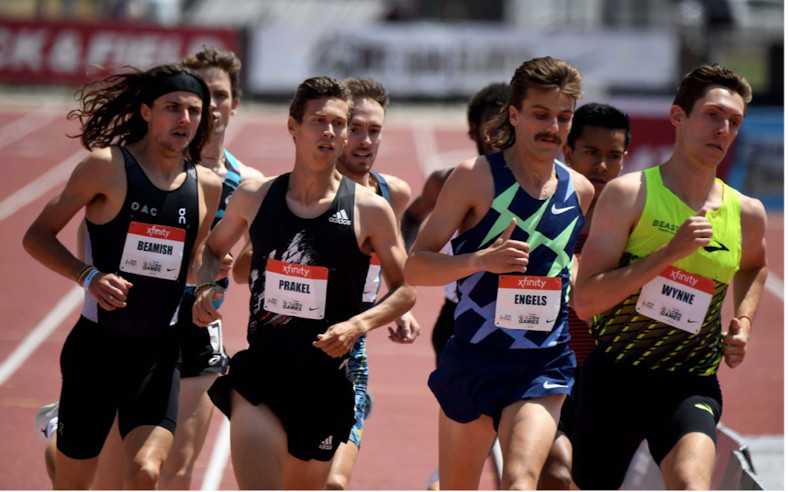
Ben True, 35, finished in hard-luck fourth place; he couldn’t match the closing kick of the three Olympians and crossed the line in 27:58.88. True, who has never made an Olympic team, will be the alternate.
The race opened up with a fast pace, because most of the field did not have the 27:28 Olympic qualifying standard they need—along with a top-three finish—to earn a trip to the Games. This race was the last chance for them to run the standard.
Conner Mantz of BYU, Robert Brandt of Georgetown, and Frank Lara of Roots Running ran up front for the first two miles, but by halfway, reached in 13:56, the pace slowed, leaving no hope for anyone without the standard to get onto the team. Lopez Lomong dropped out, grabbing his right leg, as did Eric Jenkins, leaving only five men with the standard in the field.
The big crowd in the early miles was distracting for Kincaid. “My confidence was the lowest 10 laps in, that’s when the doubts really crept in,” he said in a press conference after the race. But as the miles clicked off, the pace slowed, and he made his way to the front, he felt better. “With four laps to go, this is what I had practiced in my mind over and over. I’m going to get into third or fourth position, just like practice, and that’s what happened.”
Kincaid said his last lap was the easy part: “It’s just everything you’ve got,” he said. “Getting there, in a position to win, is the hard part.”
He had praise for his teammate, Fisher, whom he runs with every day. “It’s a shame that I like him so much, because I have to race him all the time,” Kincaid said.
Kincaid said he plans to race the 5,000 meters and if he makes the team in that event, he’ll do both the 10,000 meters and 5,000 meters at the Games.
Fisher was soaking in the moment. “I’ve dreamed about this moment, but even now it doesn’t feel real,” he said in the post-race press conference. “I don’t even know how to describe it, but I’m just so happy.”
Klecker, the third-place finisher, had his collegiate career at the University of Colorado shortened by the pandemic. “This means a lot,” he said. “I mean I had my NCAA career cut short. I never won an NCAA title, but making an Olympic team makes up for that.”
He is the son of Janis Klecker, a 1992 Olympian in the marathon for the U.S. Her advice? Candy. “She told me that the night before she made an Olympic team, she ate a Snickers bar, and I followed that to a tee and it worked out,” Klecker said.
True said he was turning his attention to the 5,000 meters later in the meet, but he has plenty of other things to look forward to. His wife is expecting their first child on July 15, and he’ll make his marathon debut this fall.
Galen Rupp, who already is representing the U.S. in the marathon, finished sixth in 27:59.43.
It is the first Olympics for Kincaid, Fisher, and Klecker. The event represents a changing of the guard—the top three are a complete turnover from the 2016 squad, when Rupp, Shadrack Kipchirchir, and Leonard Korir were the Americans who went to Rio in the event.
by Runner’s World
Login to leave a comment
Some Veteran Pro Runners Are Making Less This Year, and They're Ditching the Sport
Many athletes are confronting a bleak financial reality. Some are quitting the sport entirely.
What do Noah Droddy, Ben True, and Andy Bayer have in common?
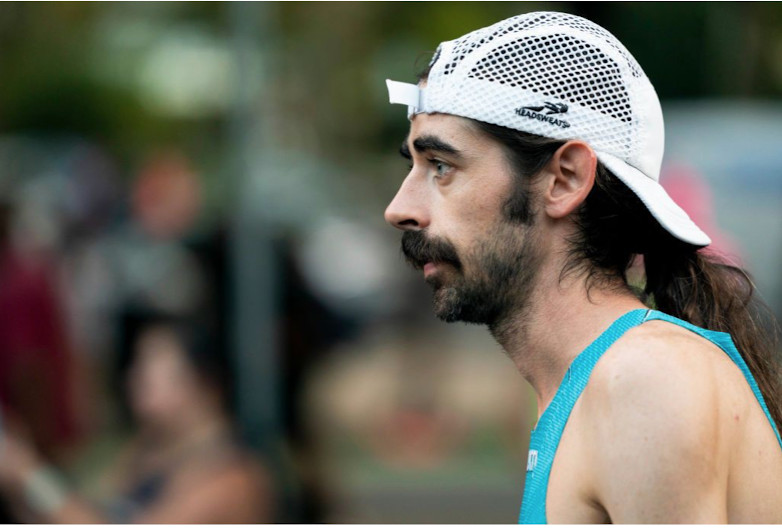
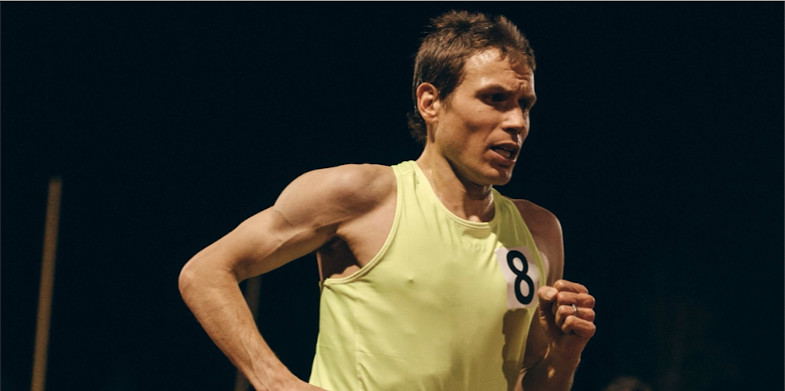
They’re all ranked among the top 10 Americans of all time in their events—Droddy in the marathon, True in the 10,000 meters, Bayer in the steeplechase.
How Much Do Pro Runners Make? For Some Veterans, It’s Less This Year
And they were all dropped by their sponsors at the end of 2020.
This news took a while to seep out—after all, athletes don’t tend to publicize it when their sponsors reduce their pay or stop supporting them altogether. But Droddy, 30, and True, 35, have been open about their status and confirmed it in calls with Runner’s World (both had been sponsored by Saucony), and Bayer told the Indy Star that Nike dropped him and he has left the sport, at age 31, for a job in software engineering.
Droddy—one of running’s most recognizable figures in races with his long hair, backward baseball cap, and habit of losing his lunch at marathon finish lines—summed up his situation in a tweet on February 19.
Is he right? Is it typical for top runners, at the height of their careers, to lose financial backing from shoe companies? Or is this an anomaly at the end of an unusual, pandemic-marred 15 months?
Runner’s World had conversations with eight athletes, four agents, two marketing employees at brands, and three coaches to get a sense of the current economics for athletes. They painted a complex picture.
Are most pro runners broke?
Many are just getting by. For years, America’s pro runners have been on shaky financial footing. With the exception of those who win global medals or major marathons, distance runners often struggle to earn enough money to pay for their essentials (rent and food), plus cover all their running-related expenses, such as coaching, travel to races and altitude camps, health care, gym membership, and massage.
Over the past year, the pandemic has erased lucrative racing opportunities. Additionally, shoe companies have been reevaluating their sports marketing budgets, from which runners are paid. Experts say that the result has been an increasing bifurcation between the sport’s haves and have nots.
The most successful, those destined for the Olympic team or starring on the roads, are earning generous base payments and bonuses for setting records or winning. Many of the rest are scraping by, with smaller contracts, if any, and they’re supplementing their shoe company earnings with jobs.
Running’s middle class, much like America’s, is shrinking.
The exception is runners who belong to a single-sponsor training group, like those in Flagstaff, Arizona (Hoka); Boston (New Balance); and Portland, Oregon (Nike). In those cases, coaching, travel, and training camp costs are absorbed by the club, easing the financial pressure on athletes and making it possible for them to pursue the dream.
Brands these days appear to be more eager to devote dollars to groups and the athletes who train with them, rather than individual athletes training on their own in different locations. That presents a quandary for midcareer runners who have achieved a level of success. Faced with the loss of a sponsorship, they aren’t always willing to pick up and move to a new town and a new coach.
What do contracts look like?
If you’re a top runner in the college ranks, and you’ve won multiple NCAA titles at the Division I level, shoe companies—Nike, Adidas, Brooks, Saucony, Hoka, and others—will usually come calling, offering more than $100,000 a year for multiple years, with a spot in a group or a stipend to pay your coach. Those companies are betting on those NCAA champions to be Olympians of the future.
Dani Jones, for instance, won three individual NCAA titles at the University of Colorado, and she signed with New Balance at the end of last year. Her agent, Hawi Keflezighi, said she entertained competing offers from other companies.
A midcareer athlete with a breakthrough performance—hitting the podium at a major marathon or making an Olympic team, for instance—might also be rewarded with a base contract worth $50,000 to $100,000.
The top sprinters earn even more (although their careers are typically shorter). Usain Bolt famously made millions, and Canadian sprinter Andre De Grasse was 21 when he signed a deal worth $11.25 million—before bonuses—from Puma in 2015, the Toronto Star reported.
The payouts drop significantly after that. Let’s say you’re a distance runner, but you haven’t been able to get a big win in college, although you’ve come close. The lucky ones are looking at deals for about $30,000 to $75,000 per year.
Your agent takes a 15 percent cut of that. And this base salary most often comes without benefits: no health insurance, no 401(k). As independent contractors, pro runners are paying all their own taxes. (In contrast, traditional full-time employees have half of their Social Security and Medicare taxes paid by the employer.)
Many young runners out of college join pro groups, and they’re not making anything beyond free gear and coaching. Others might get a stipend worth $10,000 or $12,000 a year.
The contracts typically sync with the Olympic calendar. At the end of 2020, many athletes’ contracts were expiring—even though the Olympics didn’t happen. That’s how Droddy, True, and Bayer were dropped. Shannon Rowbury, a three-time Olympian, told Track & Field News her deal with Nike was extended for one year, two if she makes the Olympic team this summer.
If an athlete has a good Olympics, the sponsoring company often has an option to extend the deal for an additional year, which includes the world track & field championships. It’s at the company’s discretion—not the athlete’s.
Parts of the sponsorship model appear to be changing, but slowly. When NAZ Elite announced a new deal with Hoka last fall, it included health insurance for the runners. Similarly, members of Hansons-Brooks in Rochester, Michigan, get health insurance if they work in the Hansons running specialty stores. And last May, Tracksmith brought Mary Cain and Nick Willis on as employees at the company—Cain in community engagement, Willis as athlete experience manager—with the plan that both would continue to train and race at an elite level.
Why doesn’t anyone know exactly how much runners are making?
As part of these deals, athletes have to sign non-disclosure agreements (NDAs), promising to keep the terms quiet. If an athlete violates the NDA, the sponsor can void the contract—or sue for breach of contract.
This is, in fact, similar to other sports. In basketball, LeBron James is being paid $39.2 million this season by the Los Angeles Lakers. But he also has an endorsement deal with Nike, and the exact structure of that is unknown.
In running, prize purses are publicized—$150,000 for winning the Boston Marathon, $25,000 for being the top American at New York in 2019, $75,000 for winning the Olympic Marathon Trials.
But as in other sports, the terms of the sponsor deals are kept mum. And appearance fees at major races, as well as time bonuses within those appearance fees, which represent a major source of income for road runners (mainly marathoners), are also mostly unknown.
Athletes feel that the silence around sponsor contracts and appearance fees puts them at a disadvantage—it’s hard to know their market value. Yes, they can—and do—have quiet conversations with peers about it. But lacking broad knowledge, they lack power.
And as a result, the industry is rife with rumors and assumptions. Athletes’ values are often inflated through the grapevine.
“I think it is very similar to the dynamic that would occur if no one knew the price of home sales,” Ian Dobson—a 2008 Olympian who ran for Adidas and Nike during his pro career, which ended in 2012—told Runner’s World. “How could you ever be confident in a sale price if you didn’t know what any other homes in your neighborhood were selling for? Granted, we don’t know every detail of every home sale in the neighborhood, but it’s certainly helpful to know in general terms the dollar amount that these are going for so that we can all understand what value our home might have.”
Also, athletes keep quiet when their circumstances change. They feel embarrassed. One athlete told Runner’s World, “No one in track wants to be the one to say, ‘I got dropped,’ or ‘I got reduced.’ It's all taboo.”
Even so, $30,000 is nothing to sneeze at—especially for a job that’s about pursuing individual goals.
No, it’s not. But not every contract is structured the same way.
Some pay that base amount, no matter what. Other contracts penalize athletes with reductions if, for instance, they don’t finish in the top three in the country in Track & Field News rankings, or if they get injured and can’t race a certain number of times per year.
That’s why numerous Nike athletes seemed to be eagerly seeking racing opportunities of any kind last summer amid the pandemic. Marathoner Amy Cragg raced a 400 meters at an intrasquad meet on July 31, and finished in 90.15 seconds—6:00 pace—presumably to check a box on her contract. On August 7, she ran 800 meters in 3:03.85. The record of those races are in her World Athletics profile.
A Nike spokeswoman, when asked about athletes racing in 2020 to meet contractual obligations, responded: “We do not comment on athlete contracts.”
Time bonuses, once seen as a reliable way to beef up athletes’ base payments, are also becoming less frequent or harder to hit, as shoe technology improves and fast times become more common, according to one agent.
What role do agents play?
For athletes who have never previously had a sponsorship deal, it’s almost impossible to secure one without the help of an agent, who can get in the door at all the major brands.
For American distance runners, there are nine main agents—all men—negotiating the deals (Keflezighi, Josh Cox, Paul Doyle, Ray Flynn, Chris Layne, Dan Lilot, Tom Ratcliffe, Ricky Simms, and Mark Wetmore). Karen Locke, one of the few female agents in track and field, represents a few distance runners among her roster of clients in field events.
Of course, all the prominent agents—who have multiple clients across multiple brands and at various stages of their athletic careers—have data about what athletes are worth. But they have a duty to each one to maintain confidentiality about the specifics of that deal.
Agents bring to their athletes a broad picture of the market and what each might command, providing advice to those considering offers: Yes, this a fair offer, a solid deal. Or no, you can do better.
They also help get athletes into competitive track races like the Diamond League and elsewhere, or into the World Marathon Majors. They can handle travel arrangements to meets and help to make sure records get ratified. Generally, their role is to go to bat for athletes, no matter what they need.
For their services, they take 15 percent of everything an athlete earns: sponsor deals, appearance fees, and prize money, no matter how small the race or winnings.
Agents are supposed to negotiate on behalf of each client individually, but athletes have no idea if that’s happening. Are they being used as part of a package deal? Thrown in at a minimal rate as a thank you to a brand for giving a generous deal to a superstar? Or, on the upside, getting a small appearance fee from a major marathon that they wouldn’t be able to get into on their own, because they have the same agent as a mega-star?
“Agents want to bring in the most money for their combined athletes—if they manage 20 athletes, they’re trying to bring in the maximum money they can across 20 athletes,” one athlete told Runner’s World. “That doesn’t necessarily mean they’re trying to maximize for each individual. The difference between earning $20,000 a year and $30,000 a year is profound in terms of your ability to actually train as a professional. But it translates into a small amount [$1,500] for the agent.”
Why is the market tricky right now?
The pandemic caused upheaval in marketing budgets. Also, the people who work in marketing at shoe brands can be inexperienced in the running industry, and turnover often runs high at those positions, jeopardizing relationships between athletes and brands that have lasted years.
The marketing budget questions are not limited to running, said Matt Powell, a sports business analyst and vice president for NPD.
“I think brands are taking a more circumspect view of endorsement contracts in general—whether it’s teams, leagues, or individual athletes,” he said. “They’re [questioning whether] they’re getting the return on that investment.”
Nike is rumored to have cut its marketing budget for running, amid layoffs at the company. Nike did not return an email from Runner’s World seeking clarification on the budget or the numbers of runners it currently sponsors.
Although Nike’s superstars are said to be fine and not facing any reductions in their deals, one Nike athlete, a 2016 Olympian, told Runner’s World, “It’s pretty much assumed that everyone is getting less.”
And it’s believed that several of these contracts are for shorter periods of time than they might have otherwise been: through the world championships in 2022 in Eugene, Oregon, instead of through the next Olympics in 2024.
In answer to questions from Runner’s World about True and Droddy—as well as rumors about a new Saucony-sponsored training group—Saucony responded with an emailed statement from Fábio Tambosi, Saucony’s chief marketing officer:
“At Saucony we believe you cannot have a sports brand without the inclusion and authentic connection with athletes. We are excited about the evolution of Sports Marketing as a brand pillar for years to come, and remain committed to building an athlete strategy that aligns with this goal.” 

Good news abounds, too
On the positive side for distance runners, Puma has re-entered the distance running market. Molly Seidel was lured from Saucony to Puma, and Aisha Praught Leer told Women’s Running she signed a “big girl contract” with Puma. Additionally, the company started a group in North Carolina, coached by Alistair Cragg and with three athletes so far.
The shoe company On has also invested heavily, starting a new team in Boulder, Colorado, coached by Dathan Ritzenhein and with athletes like Joe Klecker and Leah Falland.
Keira D’Amato, 36, signed her first pro contract, with Nike, after a string of impressive performances during the pandemic on the track and roads. She has kept her job as a realtor.
Keflezighi sees an opening for apparel brands that don’t have footwear to sponsor more athletes. Women’s apparel company Oiselle has done this for years, and Athleta is now sponsoring Allyson Felix. Could a menswear company be far behind? These arrangements leave athletes free to choose their own running shoes, which can be advantageous as shoe technology advances so quickly.
Why do brands have pro runners anyway?
Beyond the individual dollar amounts in contracts, brands seem to be rethinking what the role of a professional athlete is. Is it to inspire with performances, and hope those performances translate into shoe sales? Or is it to connect with fans on social media and promote product sales that way?
“You have to kind of look at it big picture,” True told Runner’s World. “These companies aren’t giving athletes money for charity; they’re doing it for a marketing investment and they’re looking for a return on their investment. And currently—and this is not ideal, in my mind—you look at the rise of social media and influencers. They are very inexpensive for marketers to go after and they get their products in front of a lot of eyeballs.”
A 2:20 male marathoner who also has a drone and a great Instagram account or YouTube channel might be gaining followers, True said, while a 2:05 marathoner is training hard and devoting his craft toward the next race.
“The average person, they don’t understand that 15-minute difference,” he said. “One historically will cost that company a lot of money. The other does not cost much at all and will get a whole lot more eyeballs on the product. You have to understand that.”
In his nine years with Saucony, True, training on his own in Hanover, New Hampshire, was part of only one ad campaign the company ran. The company preferred to use models for its ads and catalogs.
In February, True ran 27:14 for 10,000 meters, a personal best and faster than the Olympic standard. He wore Nike spikes and a plain yellow singlet. If all goes according to plan, he’ll race the U.S. Olympic Track and Field Trials in June and try to make his first team. His wife, professional triathlete Sarah True, is pregnant and due in July. And after that, he’ll run a fall marathon. True intended to debut at the marathon last fall, before the pandemic canceled all the races.
He’s moving ahead and training hard, despite the financial uncertainty. “I would have loved to have spent my entire career with Saucony,” he said. “I very much enjoyed working with them. I’ve been fortunate enough that I have had probably a lot more support than many other people in my position. That’s been nice.”
At this point, he is hoping another company will pick him up to take him through the next few years. “If a company just gave me a bonus structure that is fair for the result, I’d be happy with that,” he said. “It’s not like we’re looking for huge amounts of money. I’m very pragmatic and very realistic. I don’t think you should be paid for potential; I think you should be paid for results.”
by Runner’s World
Login to leave a comment
Runners sponsored by smaller companies might be in a better position than those who are signed by major brands
Earlier this week, the Swiss running shoe company On announced that it was starting an elite training group in Boulder, Colorado, called the On Athletics Club. It’s safe to say that this doesn’t seem like the most auspicious time to invest in professional running. Even though the Diamond League—the world’s premier track and field competition circuit—is scheduled to begin an abridged summer season on Friday, this year has seen an unprecedented number of race cancellations and it’s difficult to predict when the bleeding will stop.
International Olympic Committee President Thomas Bach has already gone on record saying that the Tokyo Games, which have been postponed to summer 2021, will not be delayed a second time. If they can’t be staged next August, the Olympics will be canceled outright, thus depriving track athletes of their quadrennial moment in the sun.
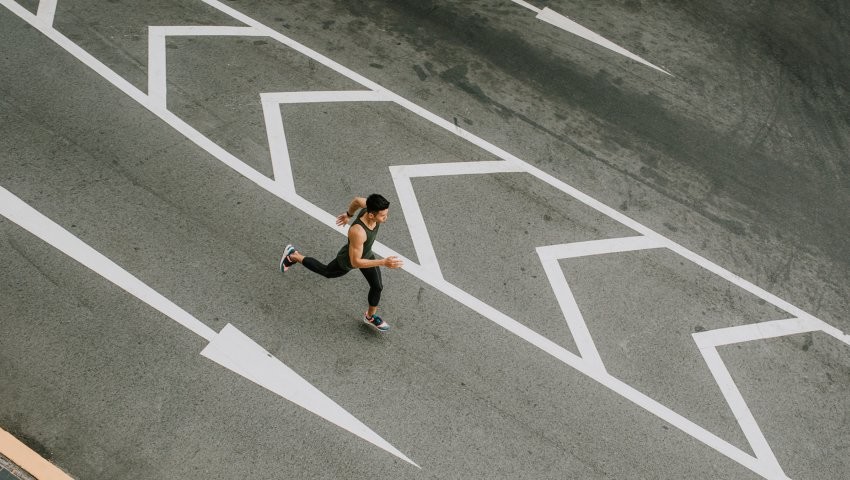
According to Steve DeKoker, On’s Global Sports Marketing Manager, the company has long been looking to develop an elite running team and the Boulder-based group represents the most significant move in that direction to date. For now, the On Athletics Club consists of eight runners, all of whom are in their 20s and were standout NCAA athletes (the University of Colorado’s Joe Klecker and the University of Wisconsin’s Alicia Monson are the headliners).
Recently retired Olympian Dathan Ritzenhein will act as coach. It has been disclosed that these athletes will be signing multi-year deals with no reduction clauses (i.e. performance quotas)—a risky move, perhaps, but one that On might currently be well-positioned to make thanks to a potential pandemic-inspired uptick in recreational running.
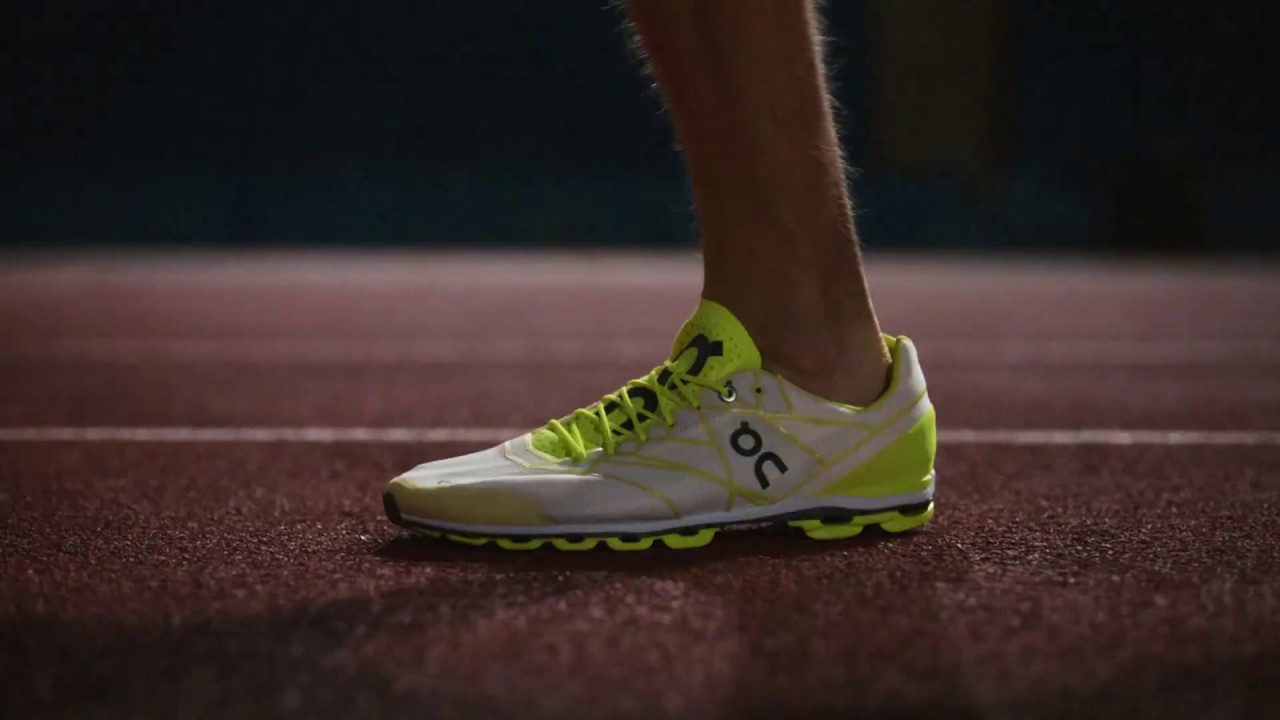
“Running is kind of experiencing this second boom,” DeKoker told Letsrun.com. “We’ve got all these folks at home who are struggling with different issues, but running is a viable activity for them. Whereas if you’re Nike, and you’re in 50 different verticals, running might be a positive one, but you’ve got a bunch of other sports that are hemorrhaging right now.”
There has been some evidence to bear this out. Nike has reported a 38 percent decline in total revenue through May 31. More specifically, last week, the market research company NPD published an article noting that prominent brands (Nike, Adidas, Under Armour) had an overall sales decline in athletic footwear in the first half of 2020, while several running-focused shoe companies had fared conspicuously well.
Hoka One One and On, in particular, saw year-over-year sales increases of 75 and over 50 percent, respectively. (An On representative has confirmed this, and added that the brand had recorded its highest ever sales month in June 2020.) Matt Taylor, the co-founder and CEO of the independent running apparel brand Tracksmith, told me that “there’s been a noticeable uptick in people running over the last few months,” and that Tracksmith was “seeing this trend reflected” in its business.
While the running industry will never be entirely insulated from the state of the overall economy, there is some logic to the notion that the sport is well-suited to weather a financial downturn. To use DeKoker’s term, running is a “viable activity” for many people because it is relatively cheap, accessible, and offers both physical and mental health benefits during times of uncertainty.
The most recent running boom occurred during the years immediately following the Great Recession; starting around 2008, there was a continual increase in running event participation, culminating in 2013, when a record 19 million runners took part in U.S. road races.
Of course, from a running perspective, one of the uniquely cruel aspects of the COVID-19 recession is that the pandemic has precluded the staging of most mass participation events. The New York Road Runners, the largest non-profit running events company in the United States, laid off eleven percent of its employees and furloughed an additional 28 percent in July. Hence, any discussion about how the pandemic might end up “benefiting” the running industry in shoe or apparel sales must be weighed against this freeze of running events.
For professional runners, meanwhile, the cancellation of big-ticket races signifies a loss in prospective appearance fees and prize money. Some athletes might also be contractually obligated to run a pre-set number of races, which, needless to say, has not been so easy in 2020. That’s why this has been the summer of intrasquad competitions, in which training partners take part in de facto time trials that have been spruced up just enough to qualify as official meets. While some of these events have yielded impressive performances—most notably Shelby Houlihan, of the Bowerman Track Club, breaking her own American record in the 5,000-meters—there have also been farcical scenarios where world-class athletes phoned it in, presumably so that they can reach their race quotas. (Last week, reigning Olympic 1,500-meter champion Matthew Centrowitz “raced” an 800... and ran 3:08. His personal best in the event is 1:44.)
It’s not a coincidence that the most prominent examples of these sham races have involved Nike athletes. After all, the Oregon-based company sponsors far more runners than any other brand. They have the funds to do it, but casting a wide net might also make it more difficult for Nike to offer elite runners the contractual perks of smaller, running-focused companies like Oiselle, On, and, recently, Tracksmith. For now, reduction clauses still seem to be the norm for the typical Nike track athlete. (A Nike spokesperson told me that the company does not comment on athlete contracts.)
Hawi Keflezighi, an agent whose clients include his brother Meb Keflezighi and recent U.S. Olympic Trials Marathon champion Aliphine Tuliamuk, agreed that this was likely to be the case. “I think Nike deserves credit for all the athletes and events that they sponsor, but at the same time, within that business model, if you have a lot of athletes, you can’t be as flexible as when you only have five or ten athletes on your roster,” Keflezighi, whose brother was a Nike athlete for years before signing with Skechers in 2011, told me. He added that, while it’s typical for companies to reassess which athletes they want to sponsor at the end of an Olympic cycle, the current uncertainty surrounding the fate of the Games, and looming recession, mean that conditions for athletes are even more cutthroat than usual.
“I think the bigger brands definitely have tougher decisions to make, just because they have a bigger investment overall,” Keflezighi says. “The athletes with those brands, especially if they are not medal contenders or in a great position to make the US Olympic team—under this environment, those athletes’ contracts are a little bit more vulnerable. If you have a smaller roster of athletes, you might be able to say, ‘Hey, you know what? Let me give that athlete an extra year or two.”
DeKoker echoed this sentiment. “Obviously, performance is going to be a key element, but it’s not the only element with On,” he says. “I do think that, at some of these other companies, it’s much more of a numbers game and unfortunately some athletes are going to be on the losing end of that.”
What will the “numbers game” look like in a worst case scenario where next year’s Olympics ultimately do get canceled? With any luck, we won’t get to find out.
by Outside Online
Login to leave a comment
No runner had ever run a mile in less than four minutes in the state of Colorado—until now.
In a certified intrasquad time trial on Monday, August 3, Olli Hoare and Joe Klecker, of the newly formed On Athletics Club, became the first two people to ever run a sub-four-minute mile in Colorado, finishing in 3:56:8 and 3:58:4, respectively. This time trial came after only a month of team workouts for the newest pro running group.
Klecker—a standout at the University of Colorado-Boulder, who took second at the 2019 NCAA cross country championships—was the first to sign with the team earlier this summer. On worked to set up the new group around Klecker, considering his input on where the team should be based, who should be the coach, and who else should be on the team.
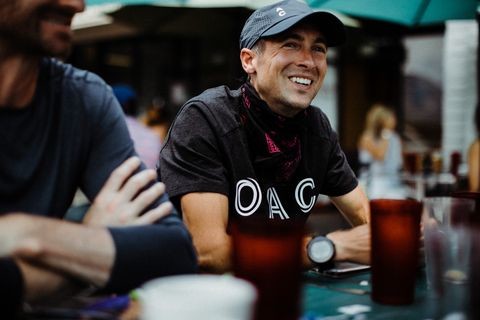
“[On’s] commitment to this team and to developing top of the line footwear stands out,” Klecker told Runner’s World. “We’ve been going a month and they’ve already sent their product development team out to Boulder, we’ve been on video calls, and they’re listening to what we have to say about the product and team and implementing them. They just rolled out their first spike, and we used their new carbon shoe on the track [Monday night], not the one on the market so far.”
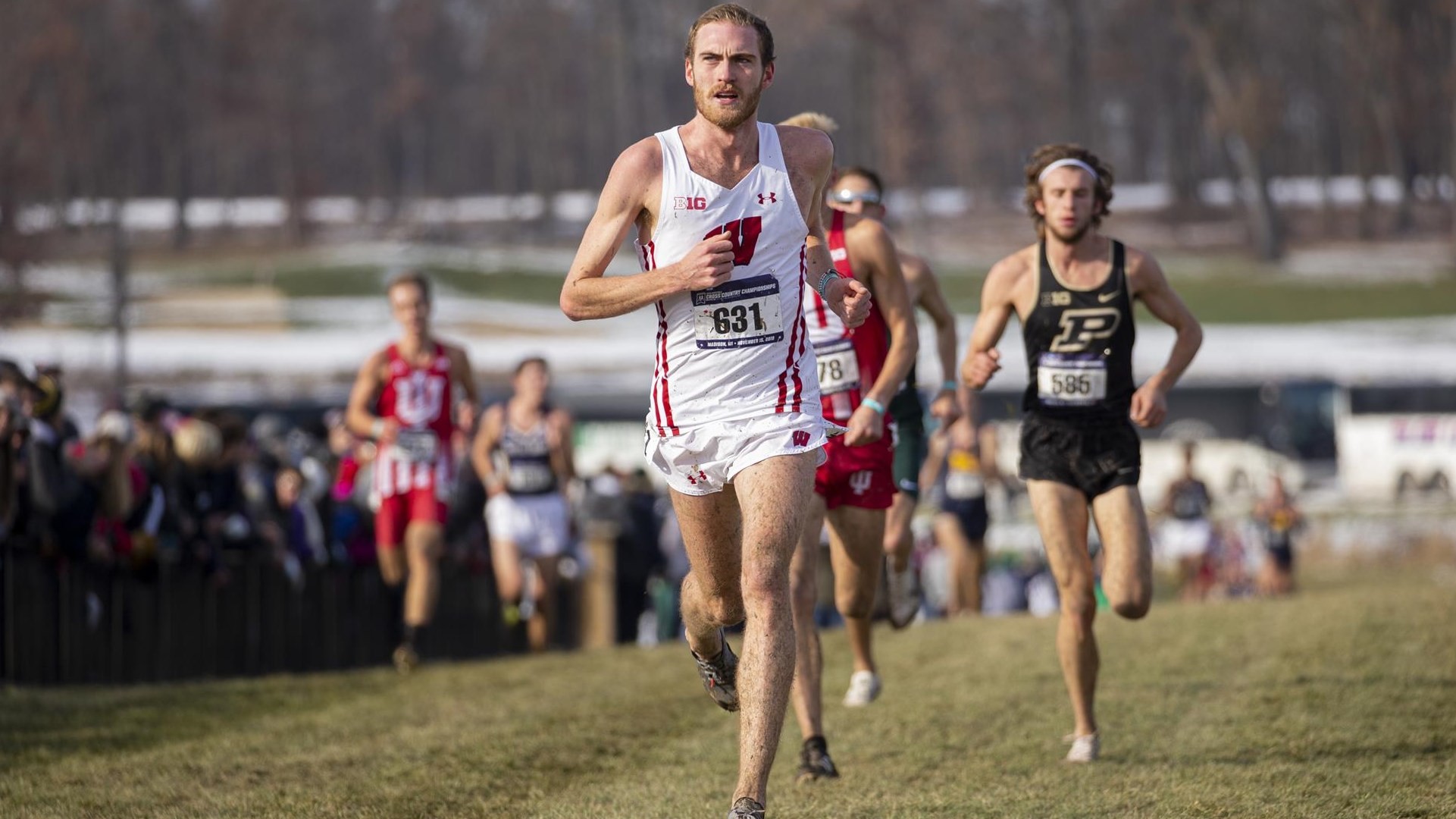
The group is coached by three-time Olympian Dathan Ritzenhein, who retired from pro running earlier this year. Ritzenhein moved his family from Michigan to Boulder, Colorado, to take on the coaching role.
by Andrew Dawson
Login to leave a comment
The 113th NYRR Millrose Games set for February 8th will feature dozens of Olympians and world class runners
The 113th NYRR Millrose Games are scheduled for Saturday, February 8th, and the distance action will be highlighted by a pair of 3,000-meter races featuring both the men’s and women’s 2019 NCAA cross country champions competing against Olympians.
Women’s champion Weini Kelati of the University of New Mexico will take on a loaded field that includes defending Millrose champion Alicia Monson of the University of Wisconsin, while men’s winner Edwin Kurgat of Iowa State University will battle Olympic silver medalist Paul Tanui, among others.
“I’m looking forward to returning to NYC and competing in the Millrose Games,” Monson said. “I totally enjoyed the whole experience last year and winning the 3k was very special. I guess I will not be the unknown collegiate athlete in the race like last year, but that makes my second appearance at the Millrose Games exciting and something to look forward to.”
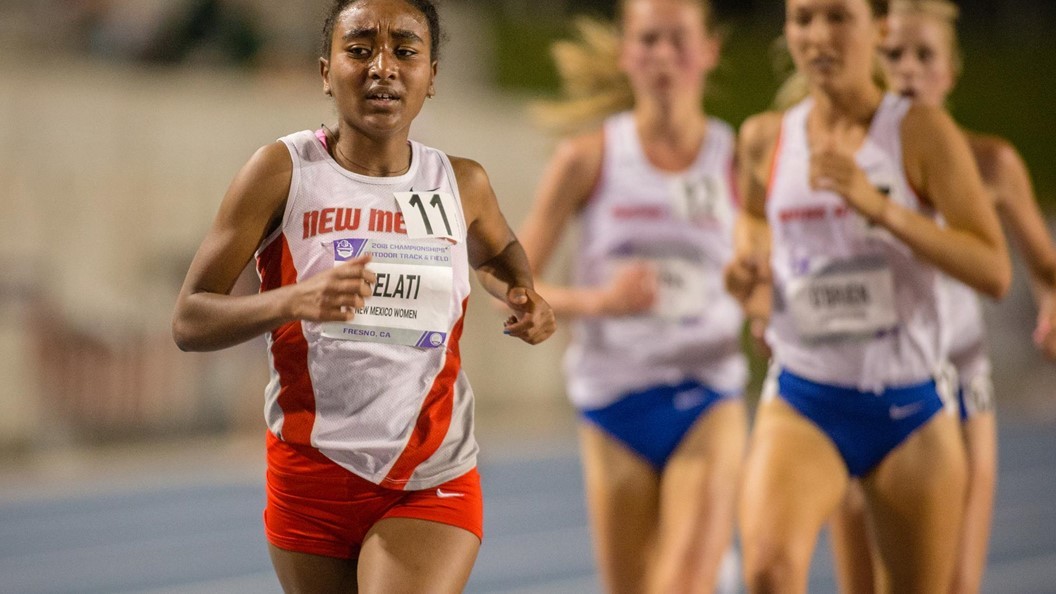
The historic NYRR Millrose Games, taking place at The Armory’s New Balance Track & Field Center, will feature dozens of Olympians and world championship contenders as they prepare for the 2020 Tokyo Olympics next summer.
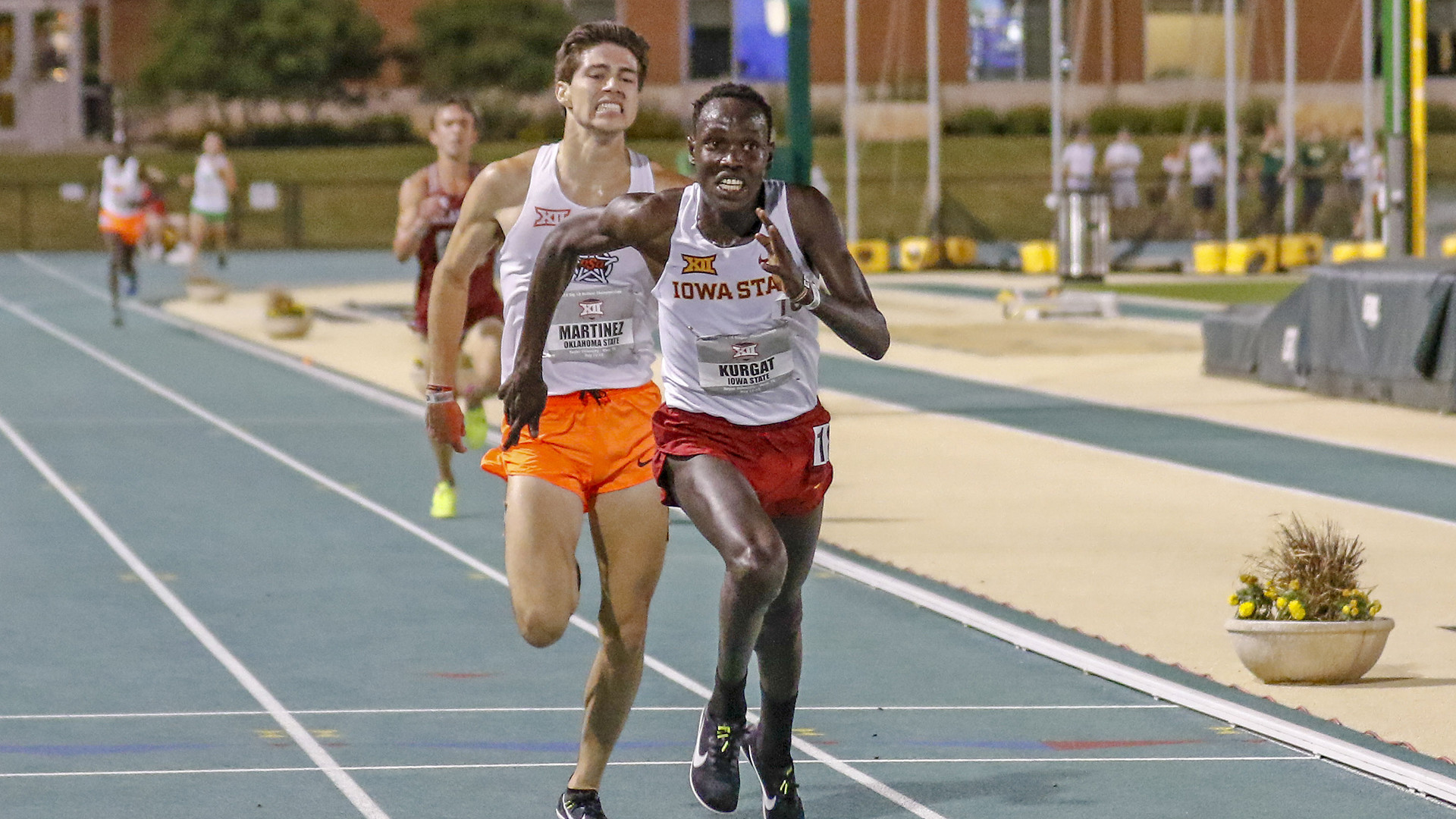
The women’s race figures to be a thrilling battle between Kelati and Monson, the two women who have distinguished themselves as the best distance runners in the NCAA.
The two runners have faced off nine times since September 2018, with Kelati holding a narrow 5-4 advantage over her rival. At the 2019 Millrose Games, it was Monson kicking to the win in a time of 8:45.97, with Kelati finishing sixth. However, in their most recent meeting at the NCAA Championships in Louisville, Ky., Kelati broke away from Monson and the field early, winning the 6,000m race in 19:47.5, and defeating the runner-up Monson by 10 seconds.
Kurgat of Iowa State comes in off the momentum of his victory at NCAAs, covering the 10,000-meter course in 30:32.7 to complete an undefeated cross country season. However, the favorite in the race figures to be Tanui, a four-time global medalist for Kenya. Tanui earned silver in the 10,000m at the Rio Olympics just behind Mo Farah, and owns three bronze medals over the same distance from the 2013, 2015, and 2017 World Championships. Tanui will look to use Millrose as a stepping stone for yet another medal in Tokyo.
Other contenders to look out for include NCAA runner-up Joe Klecker of the University of Colorado, US Olympian Hassan Mead and former NCAA champion Justyn Knight of Canada. Knight, who has made two World Championship finals in the 5,000m, finished second at Millrose in 2018.
More athletes and fields will be announced for the NYRR Millrose Games in the coming weeks. Already announced is a thrilling shot put duel between Ryan Crouser and Joe Kovacs, as well as world record-holder Keni Harrison opening her season in the 60m hurdles.
Login to leave a comment
NYRR Millrose Games
The Pinnacle of Indoor Track & Field The NYRR Millrose Games, first held in 1908, remains the premier indoor track and field competition in the United States. The 2025 edition will once again bring the world’s top professional, collegiate, and high school athletes to New York City for a day of thrilling competition. Hosted at the New Balance Track &...
more...

